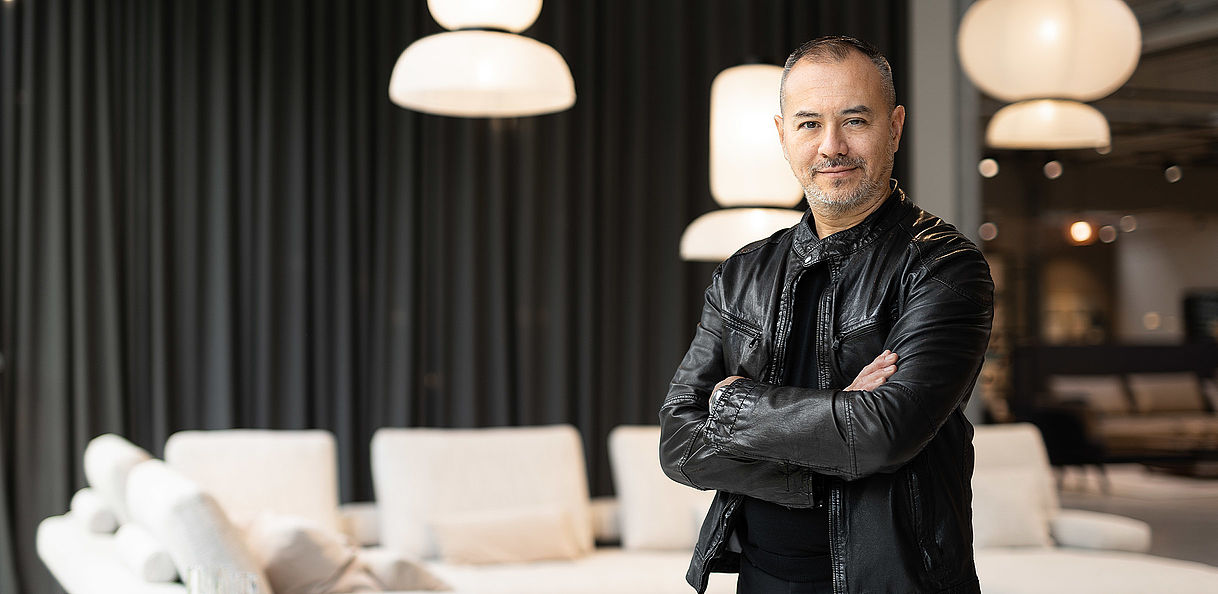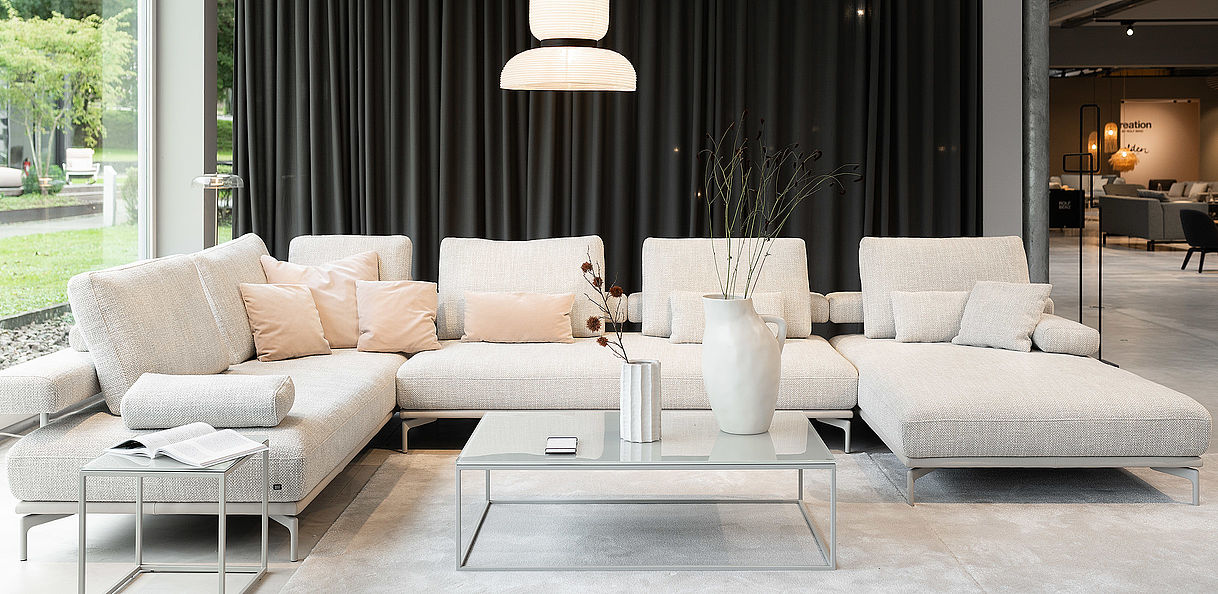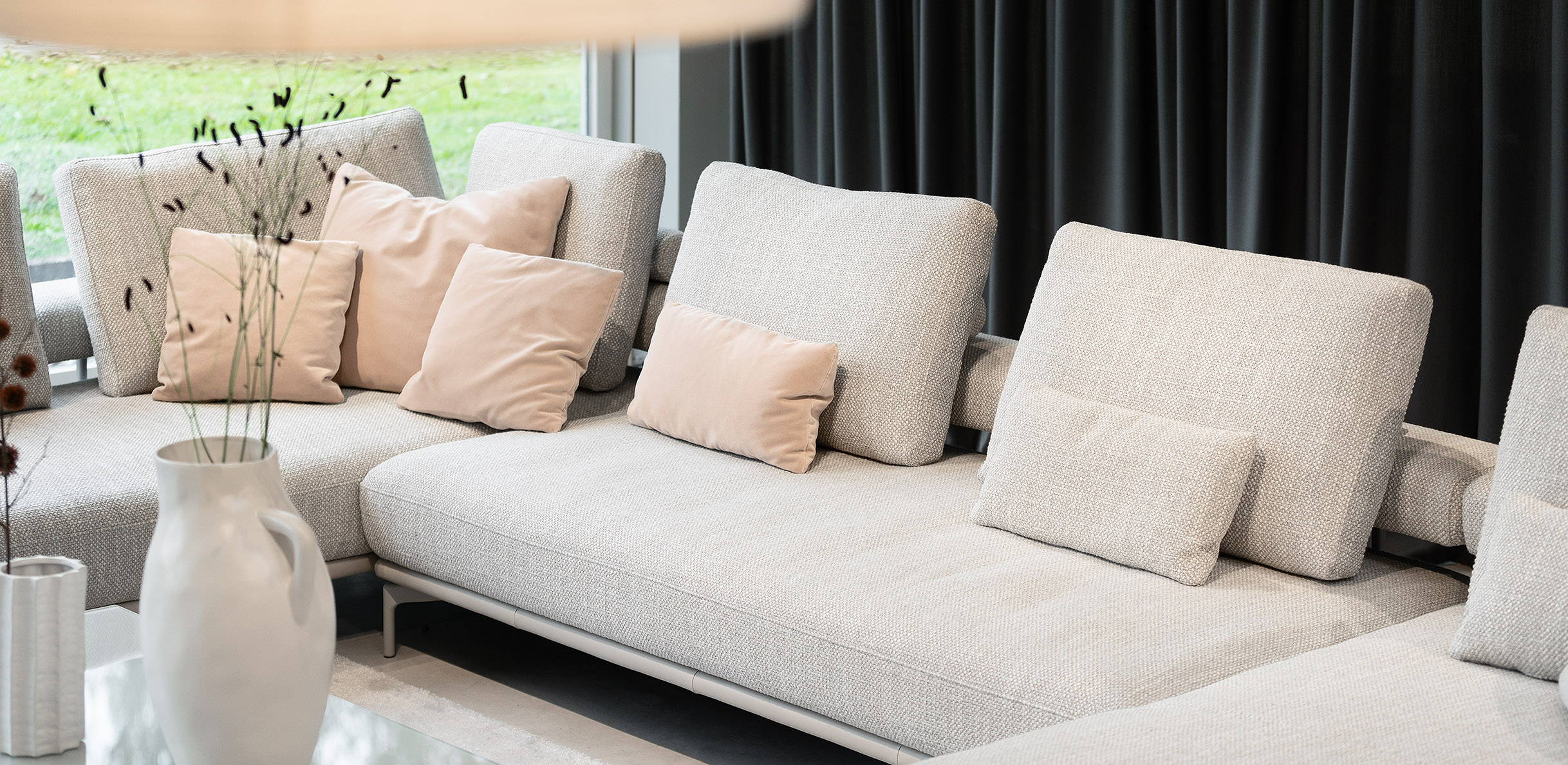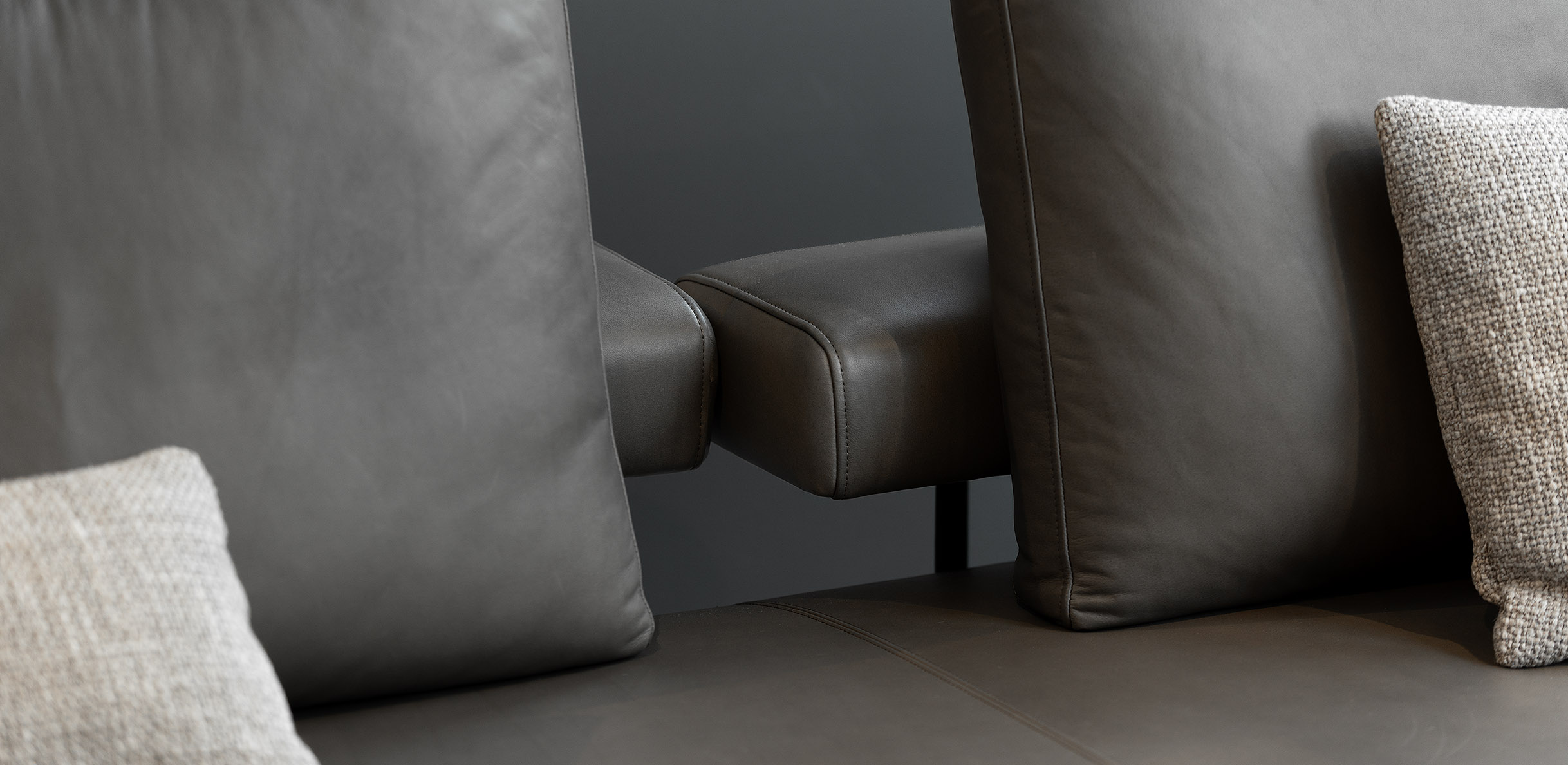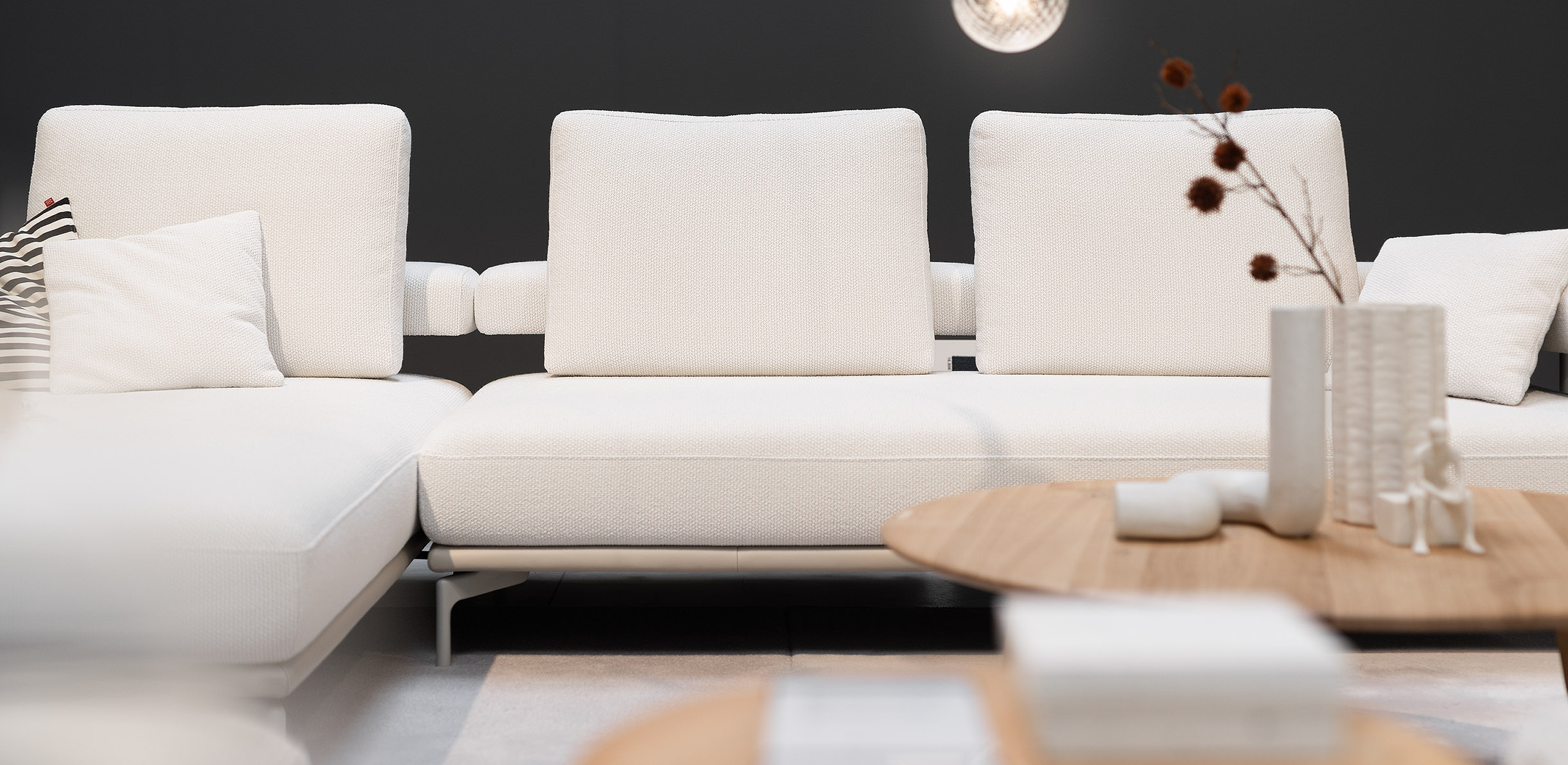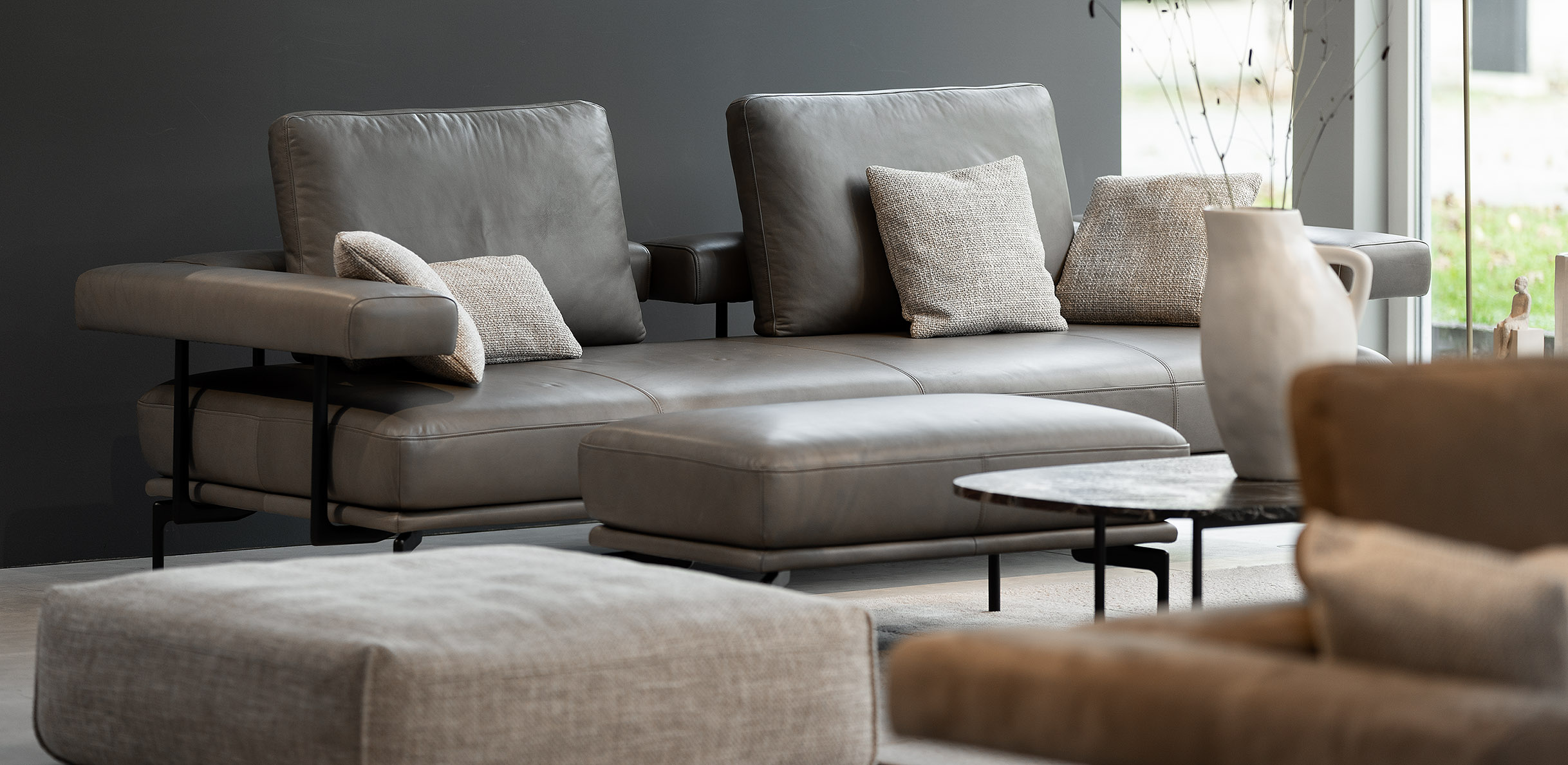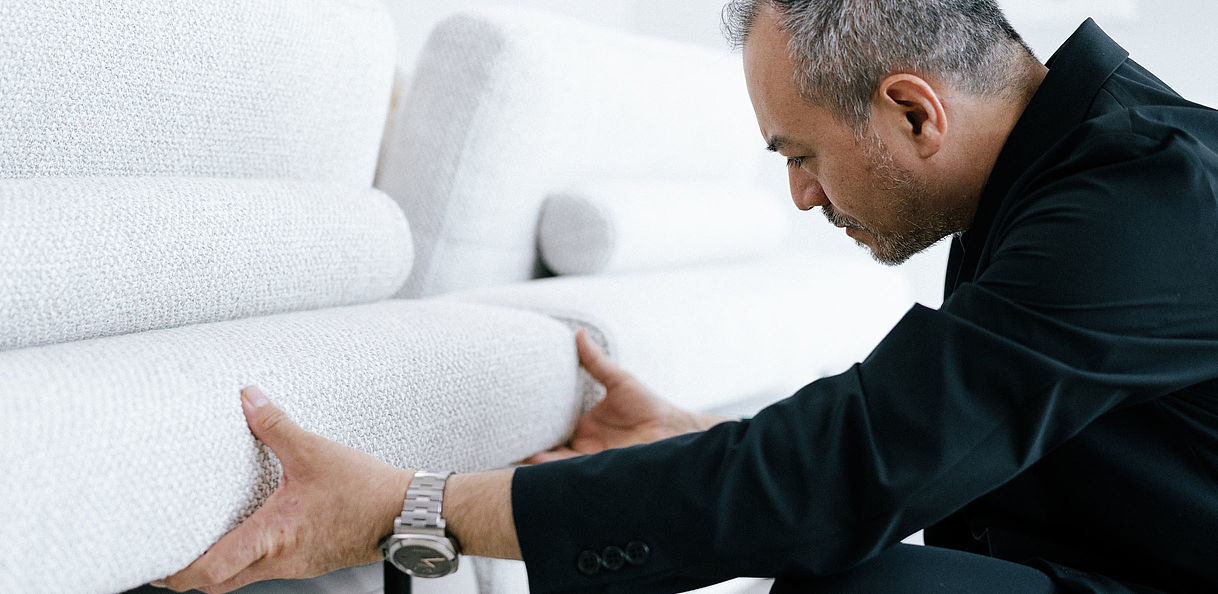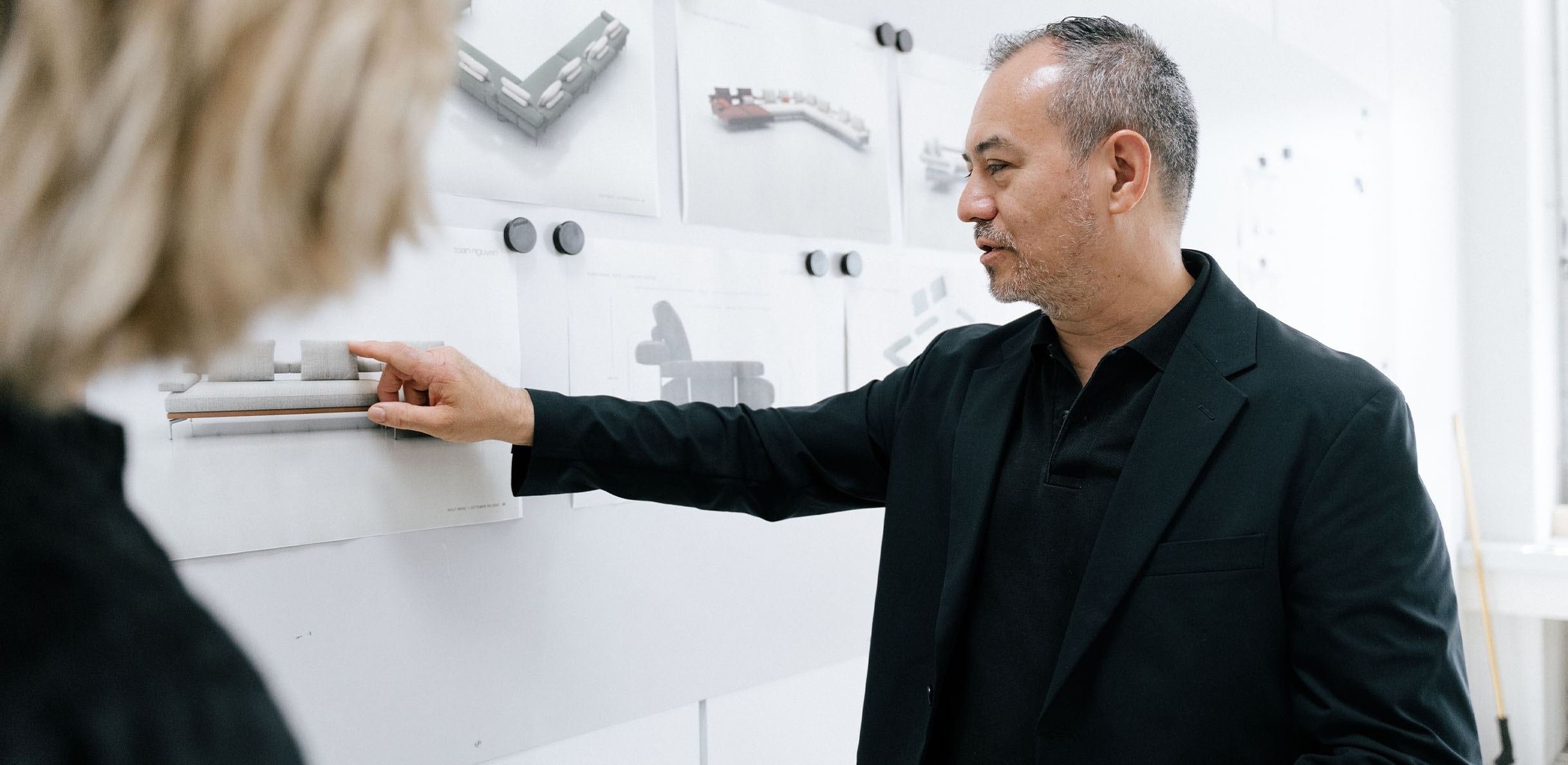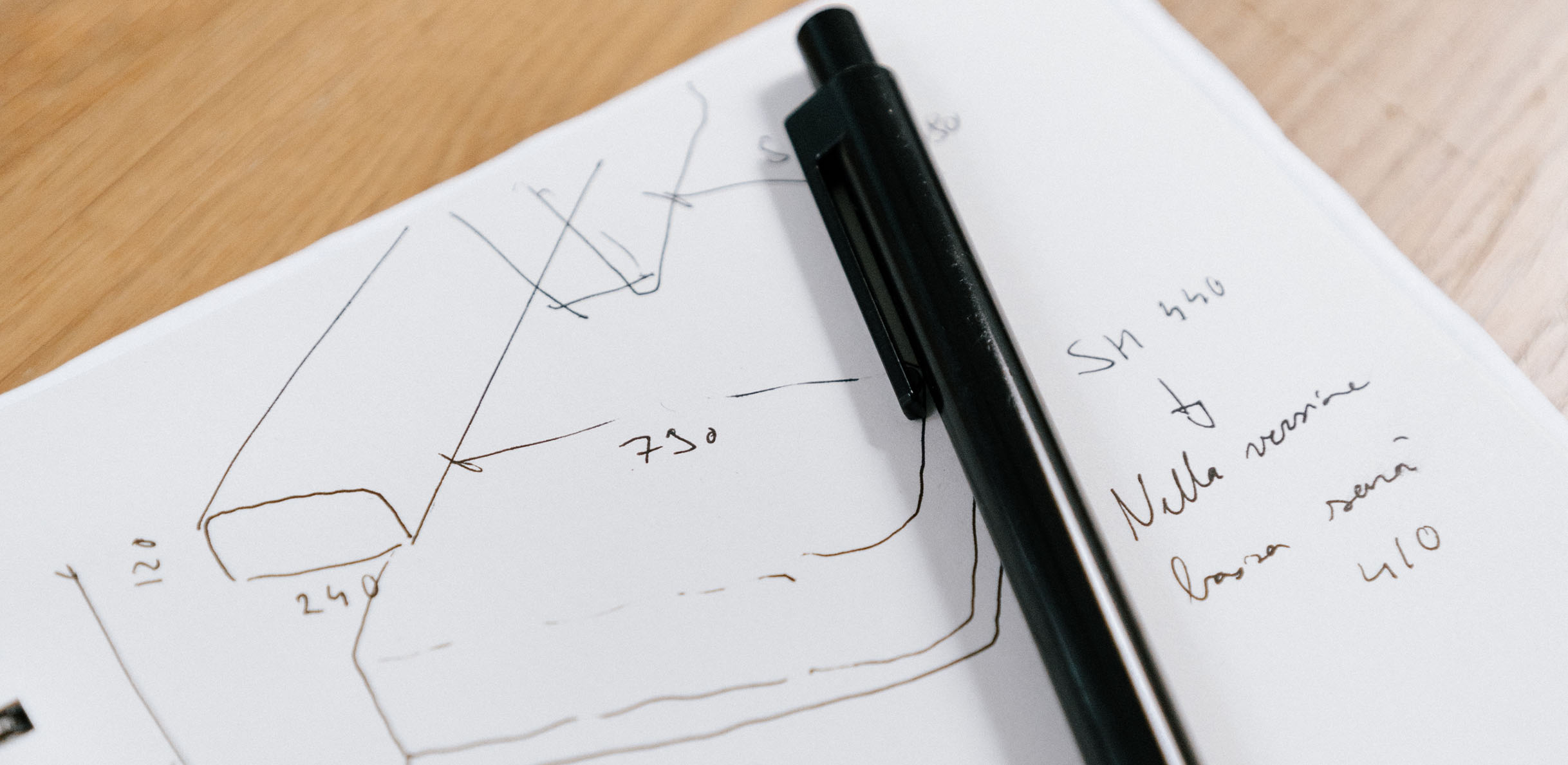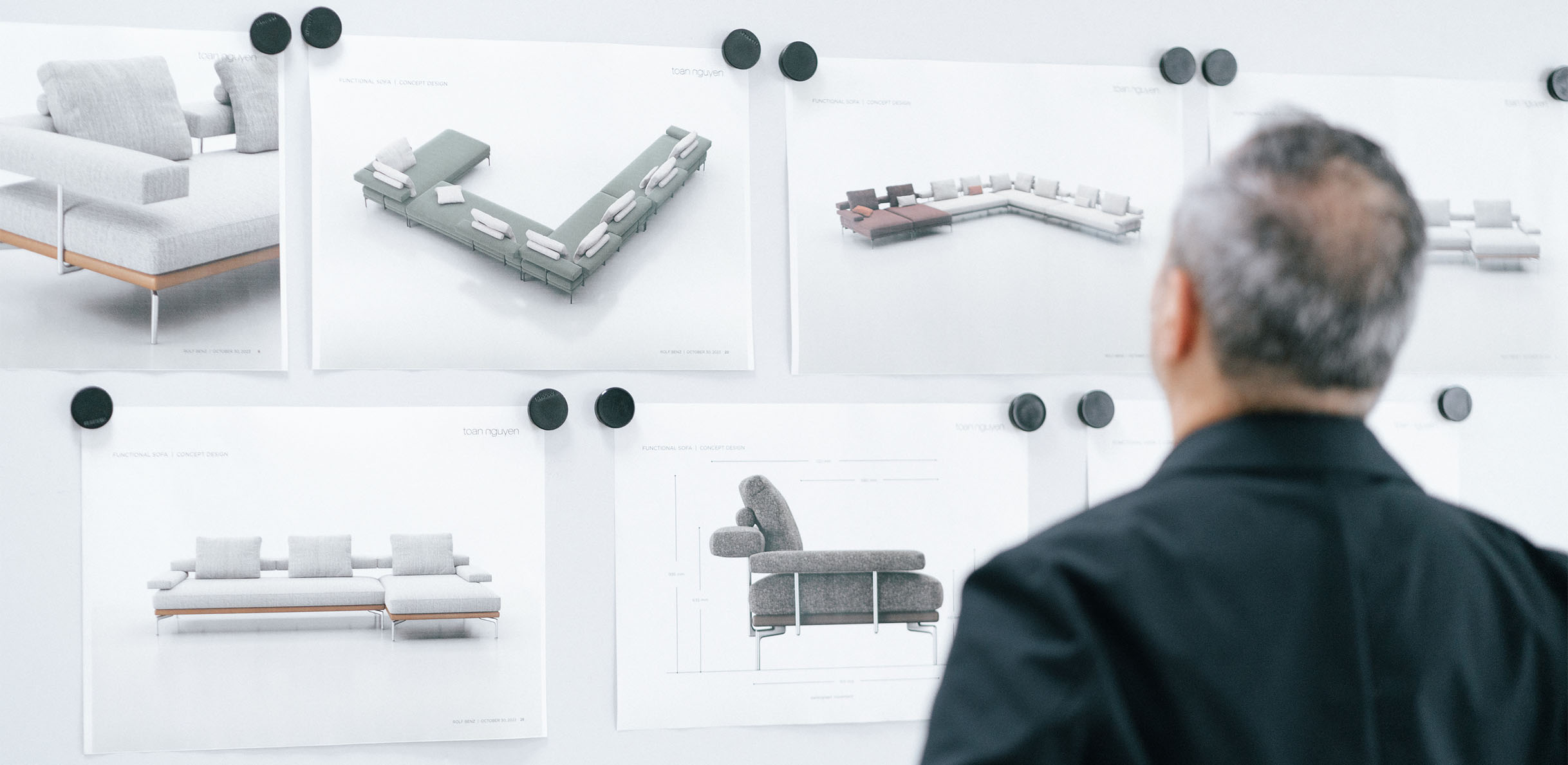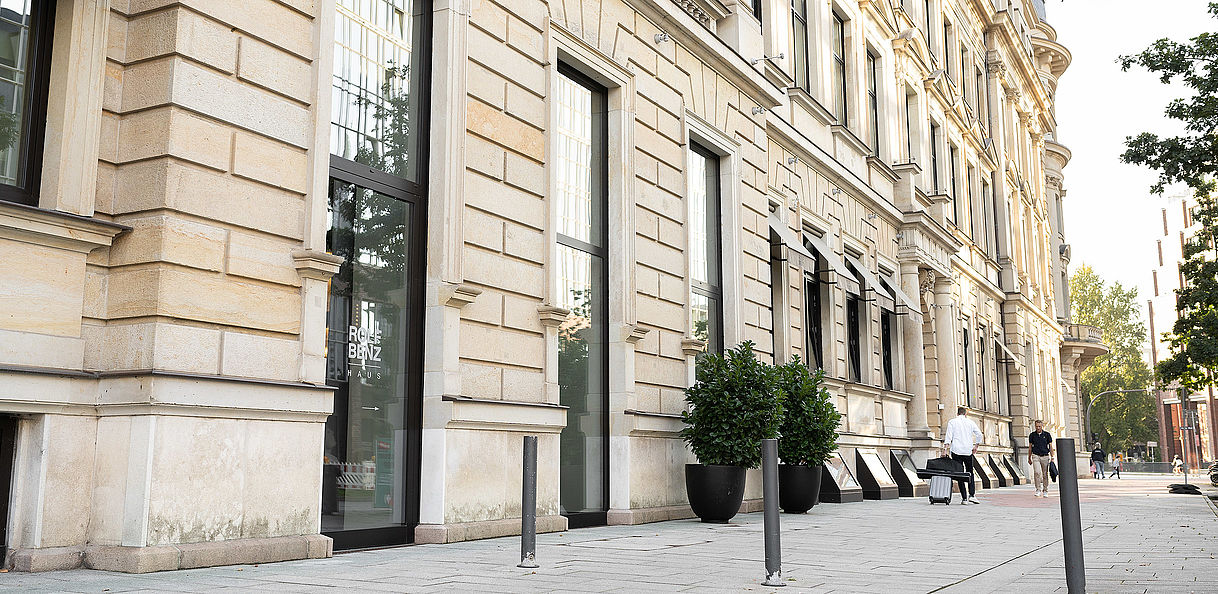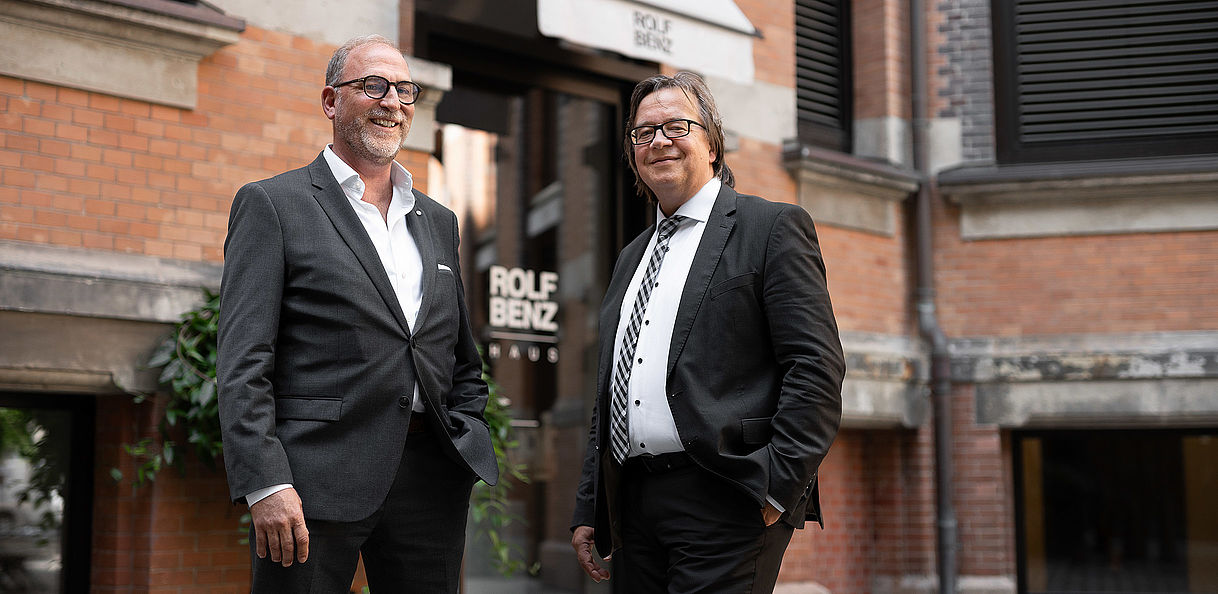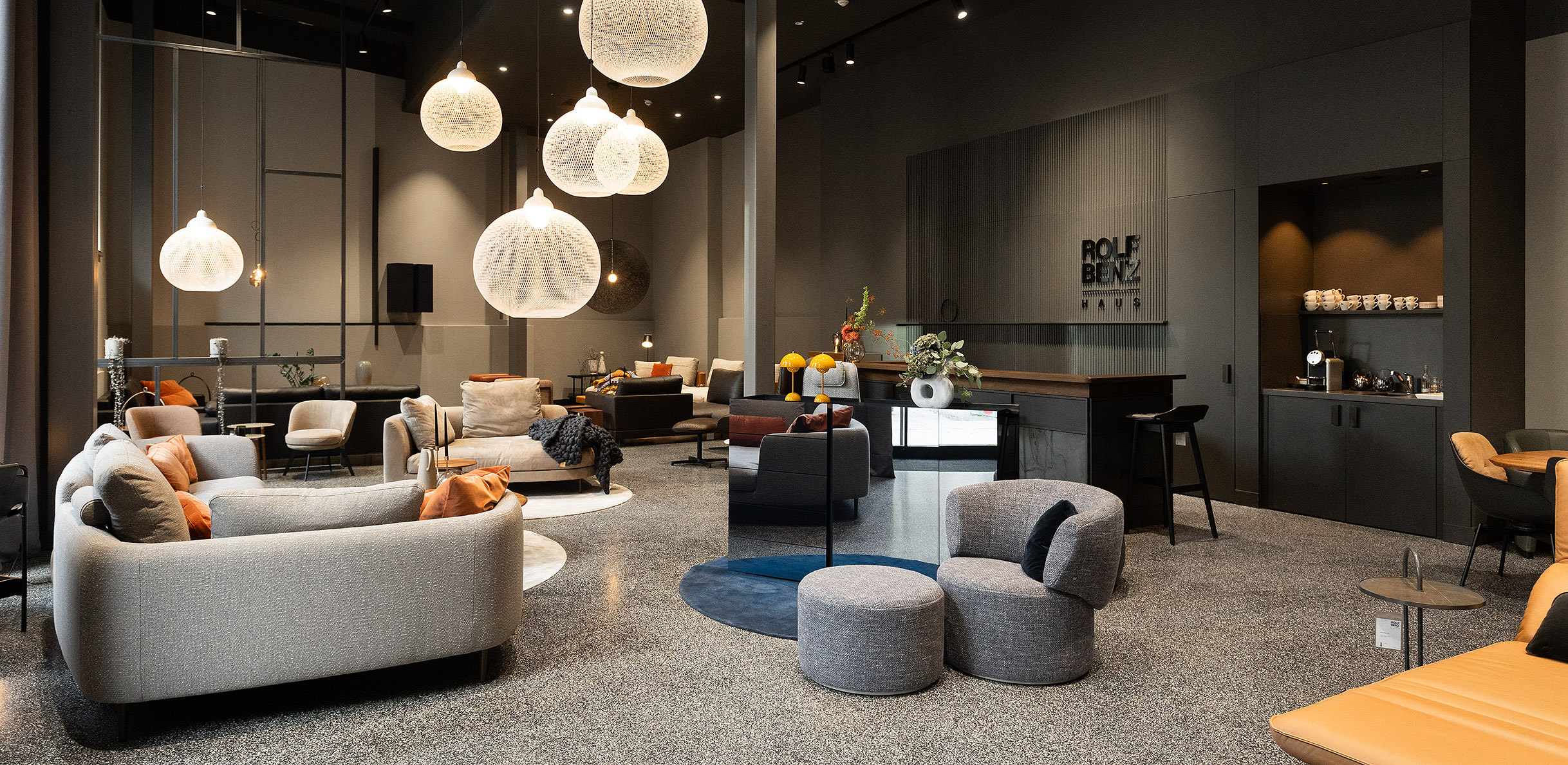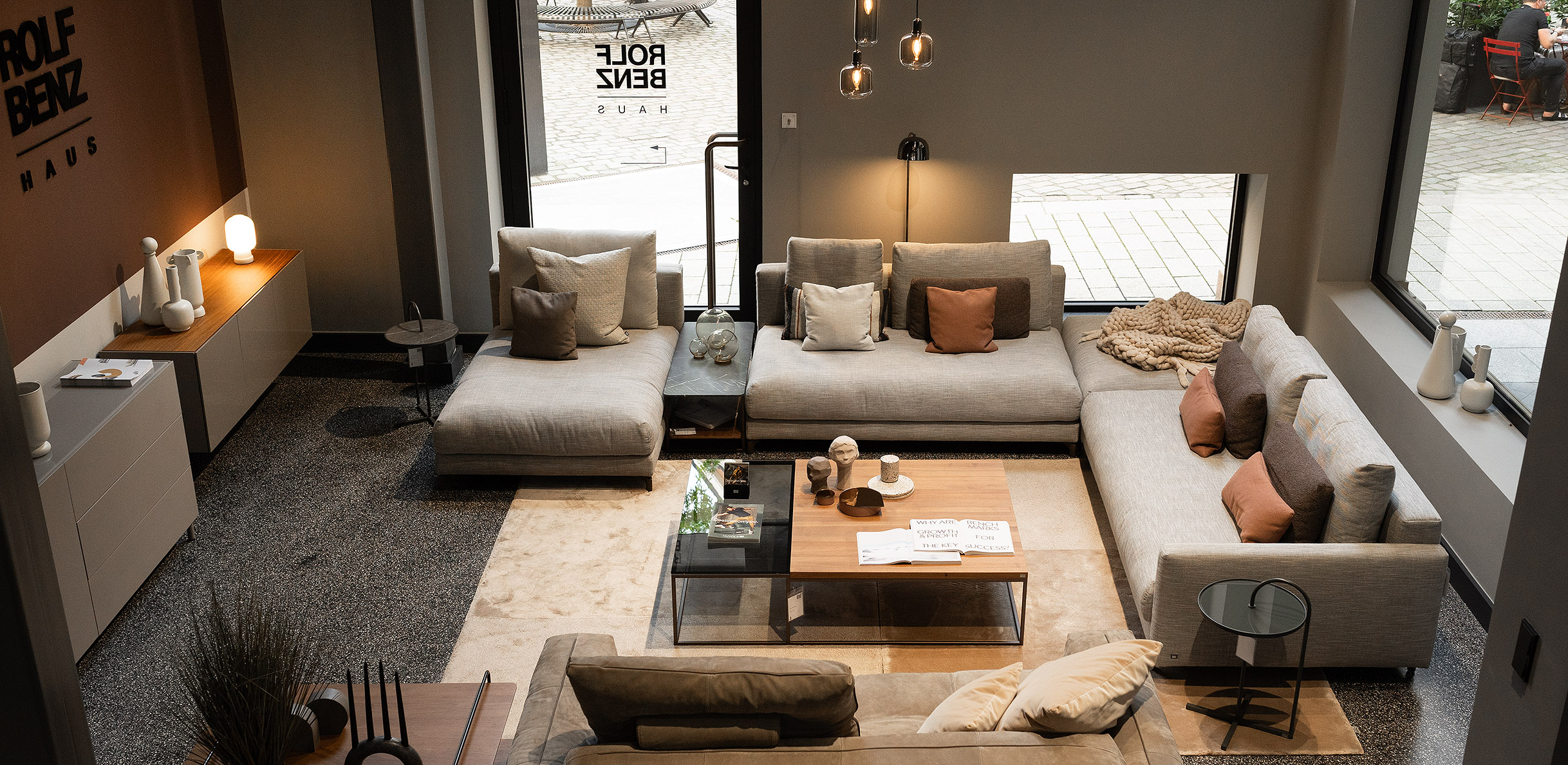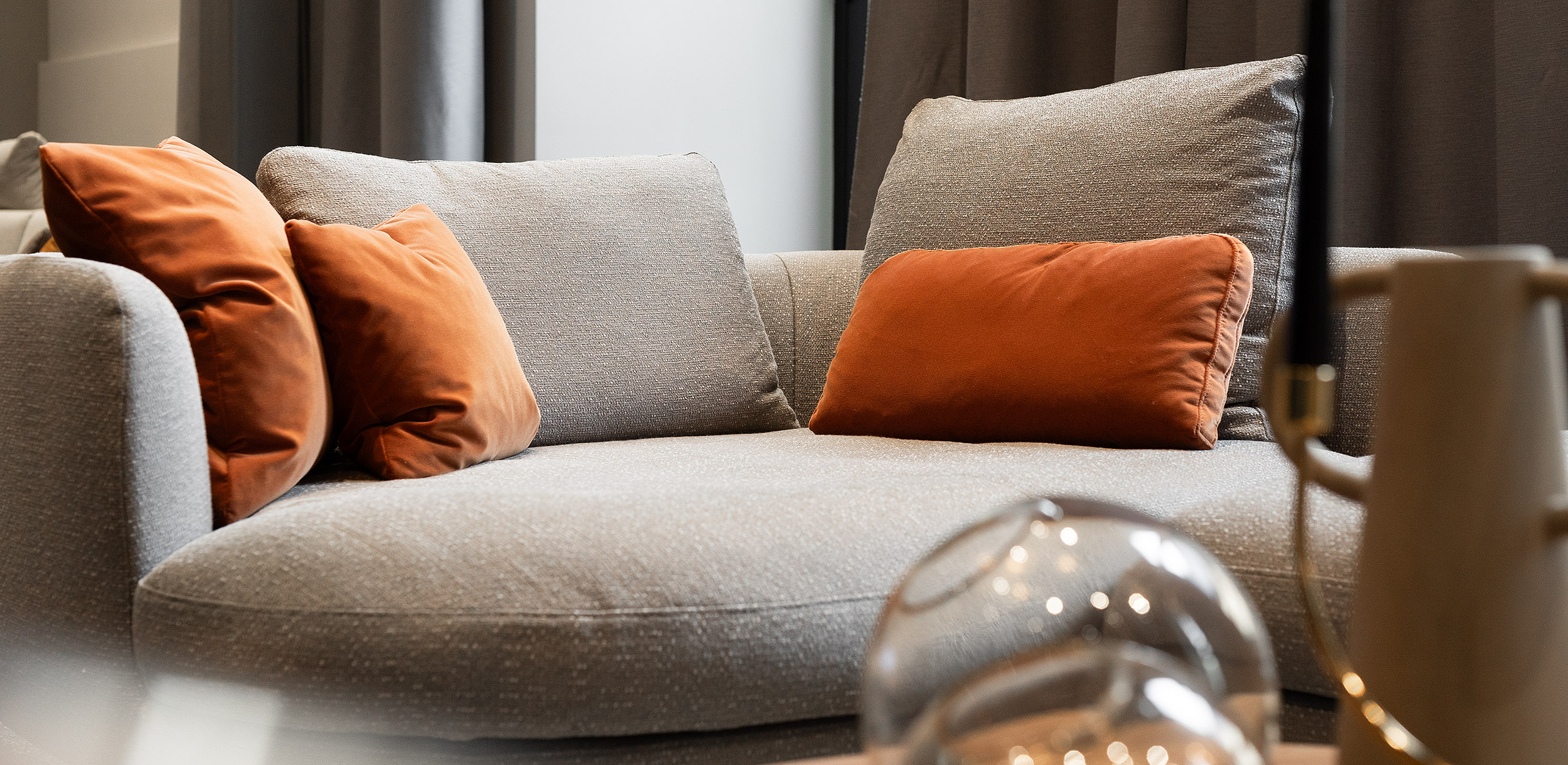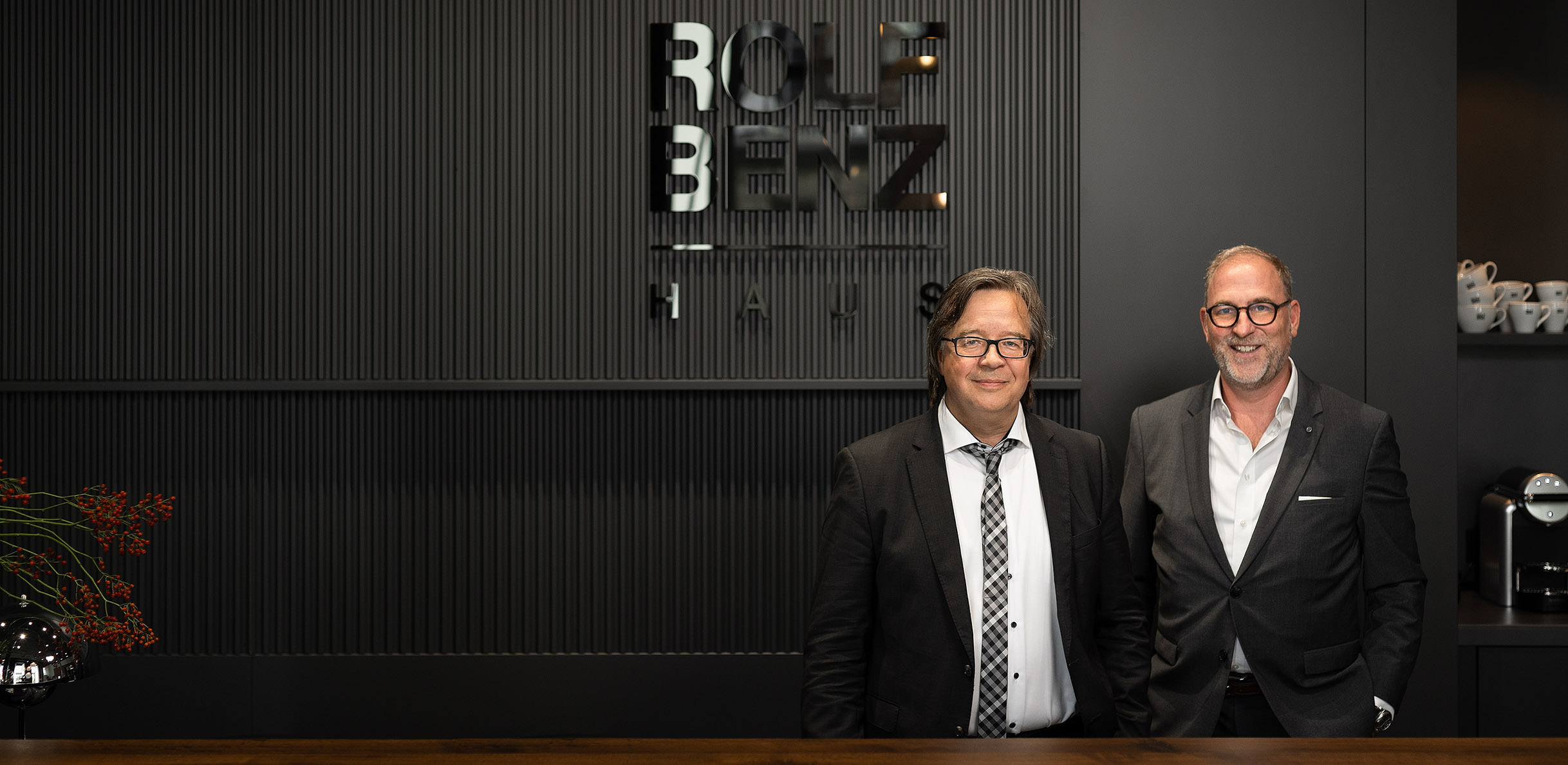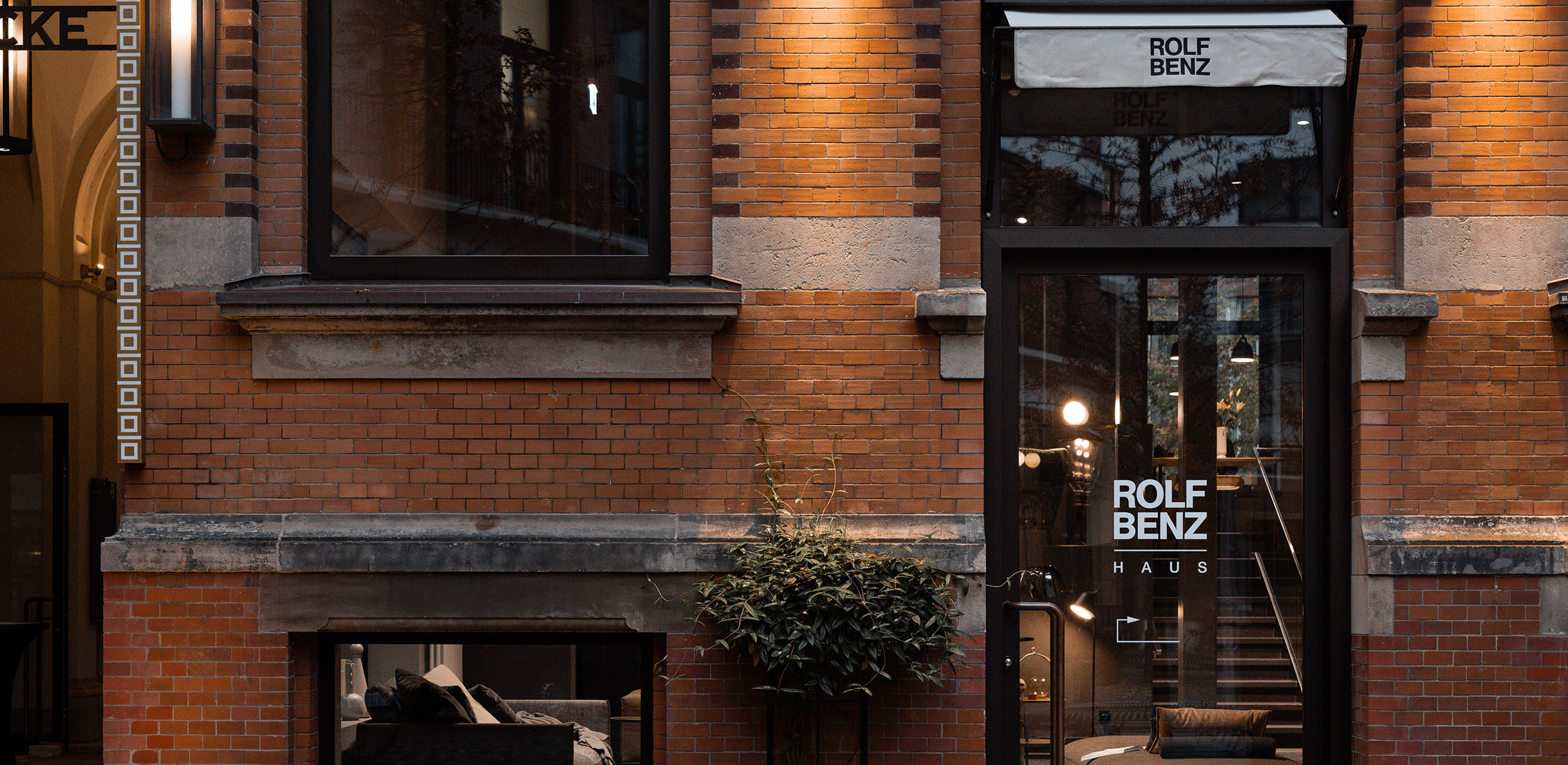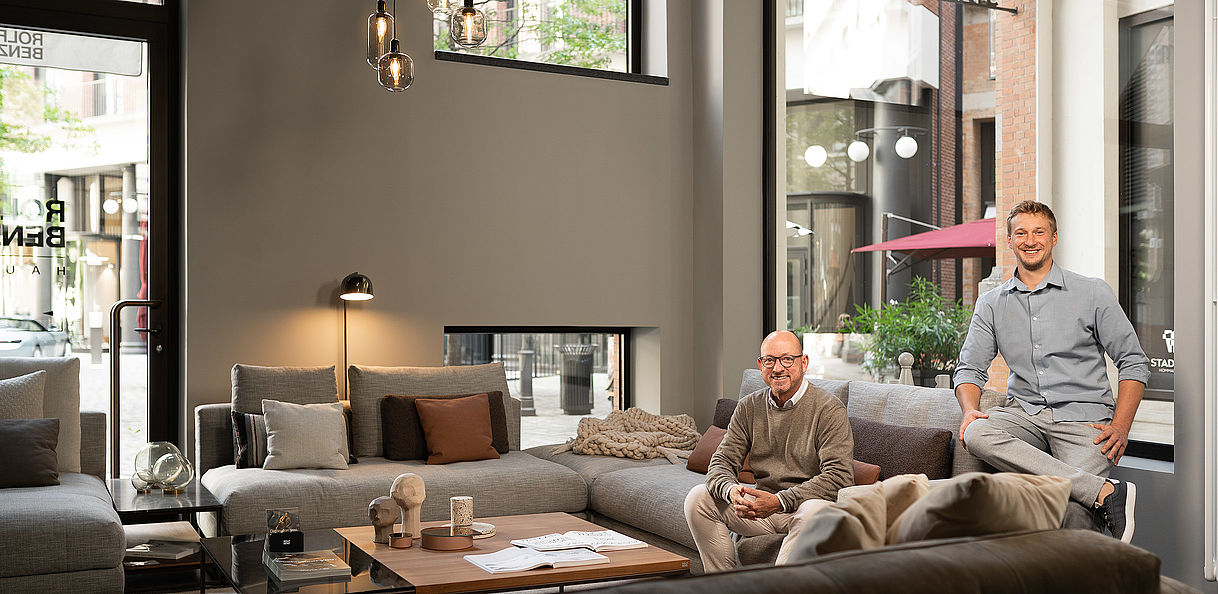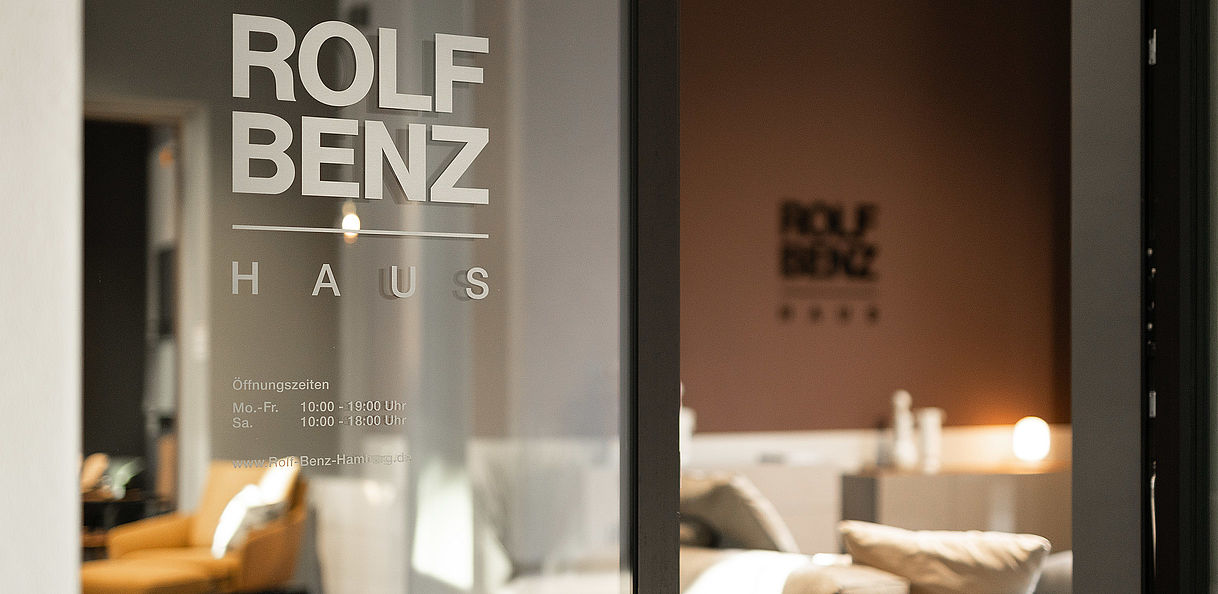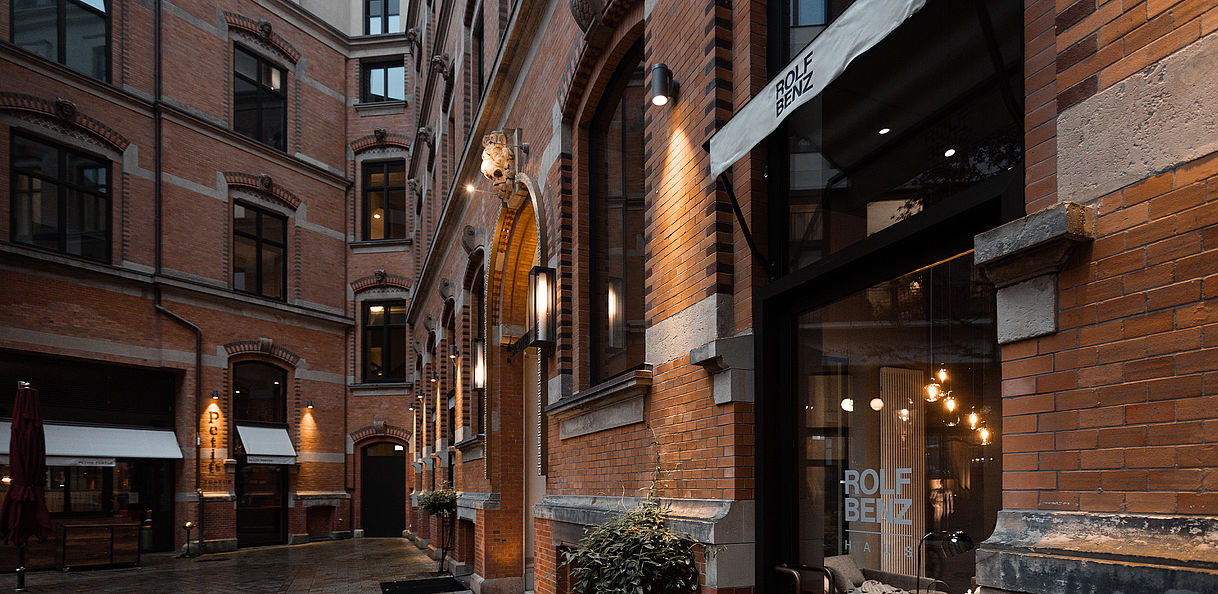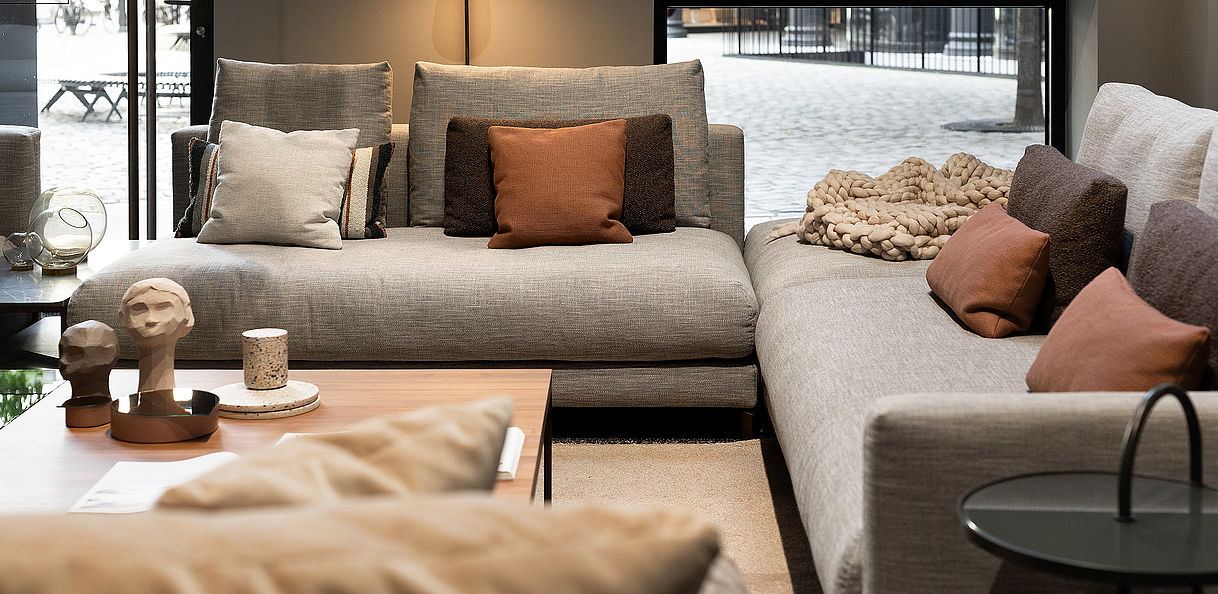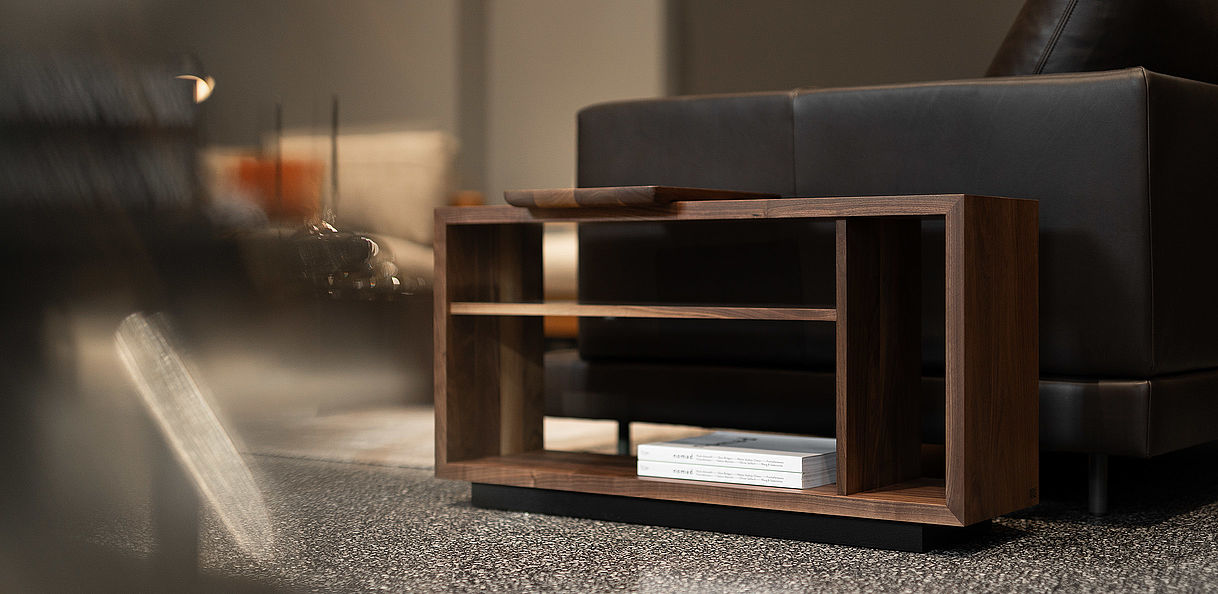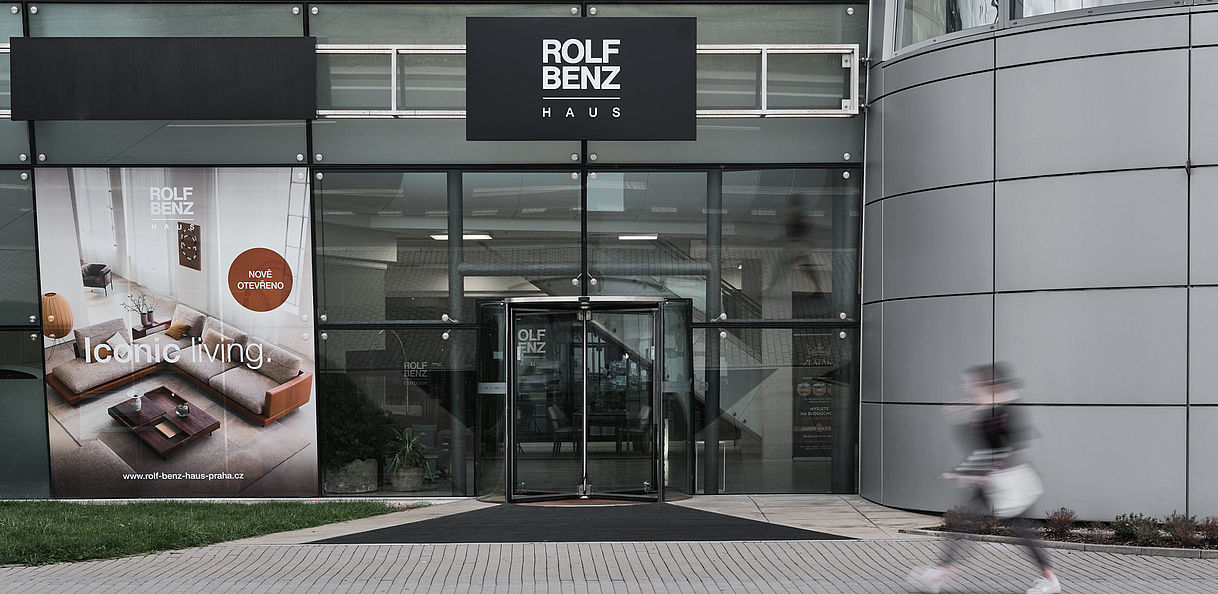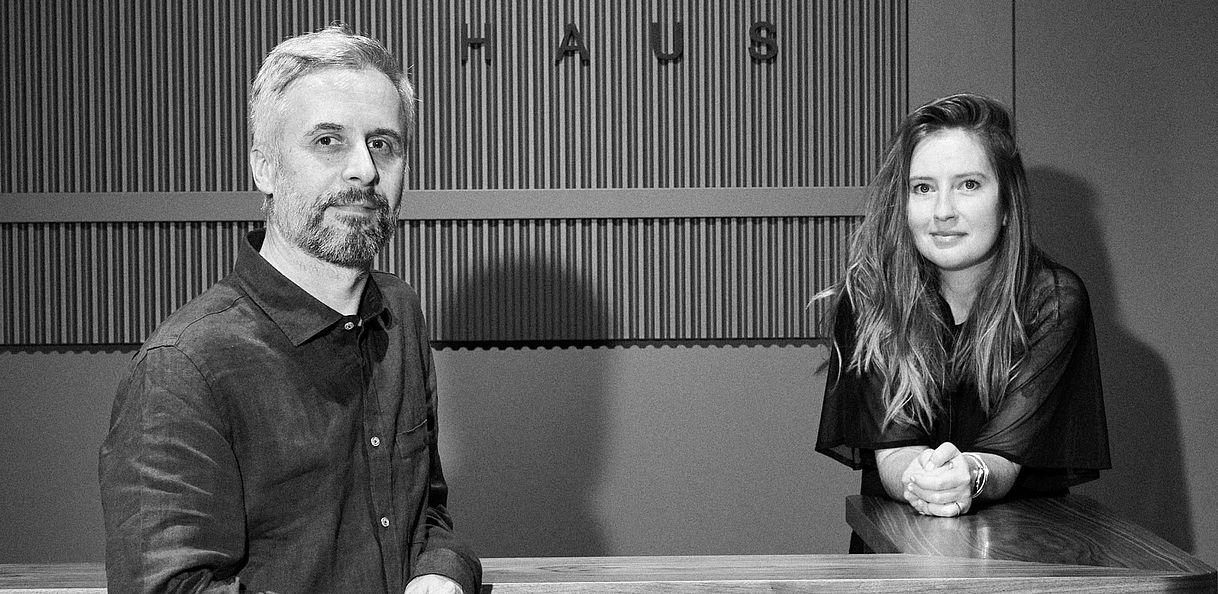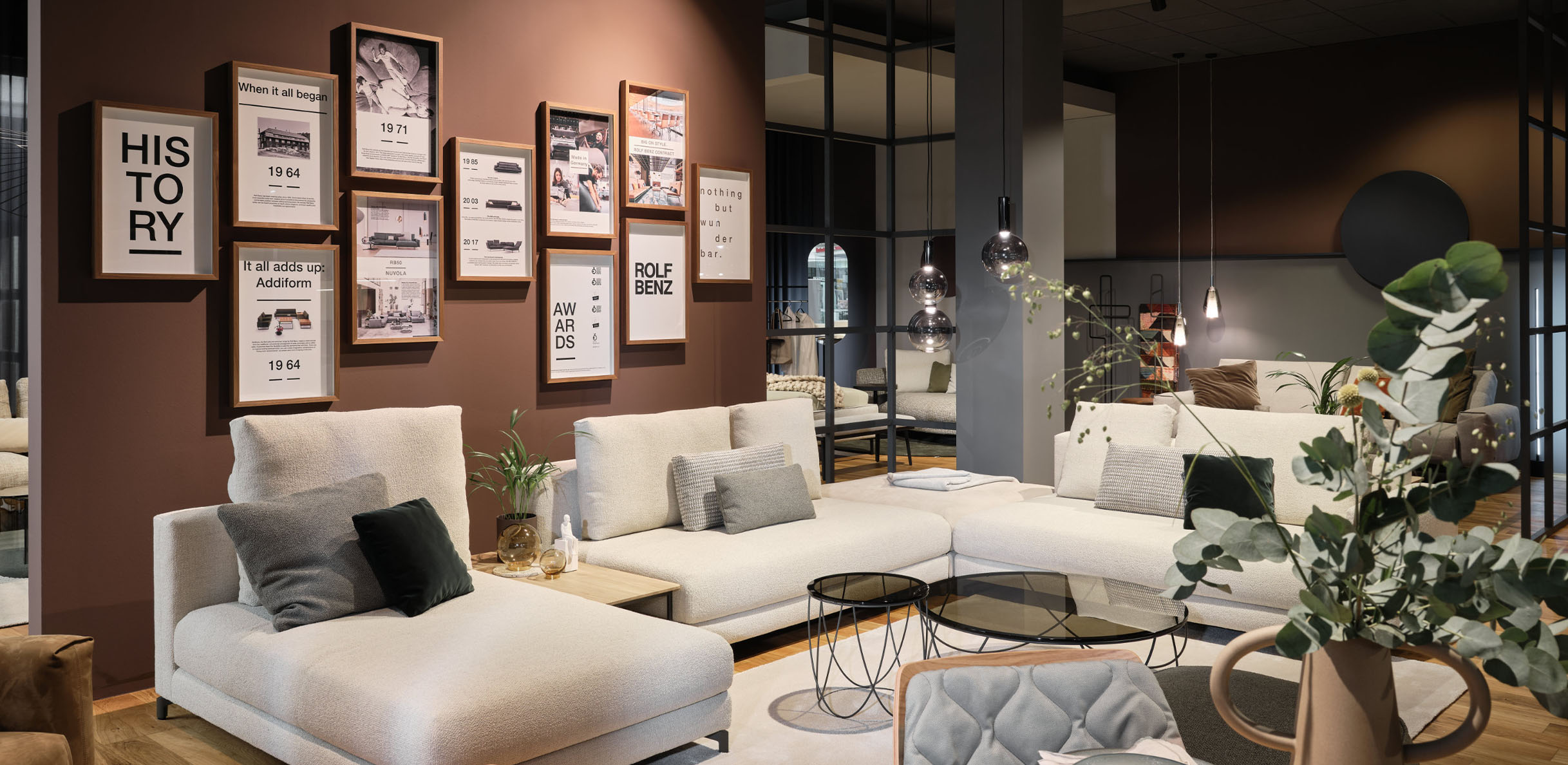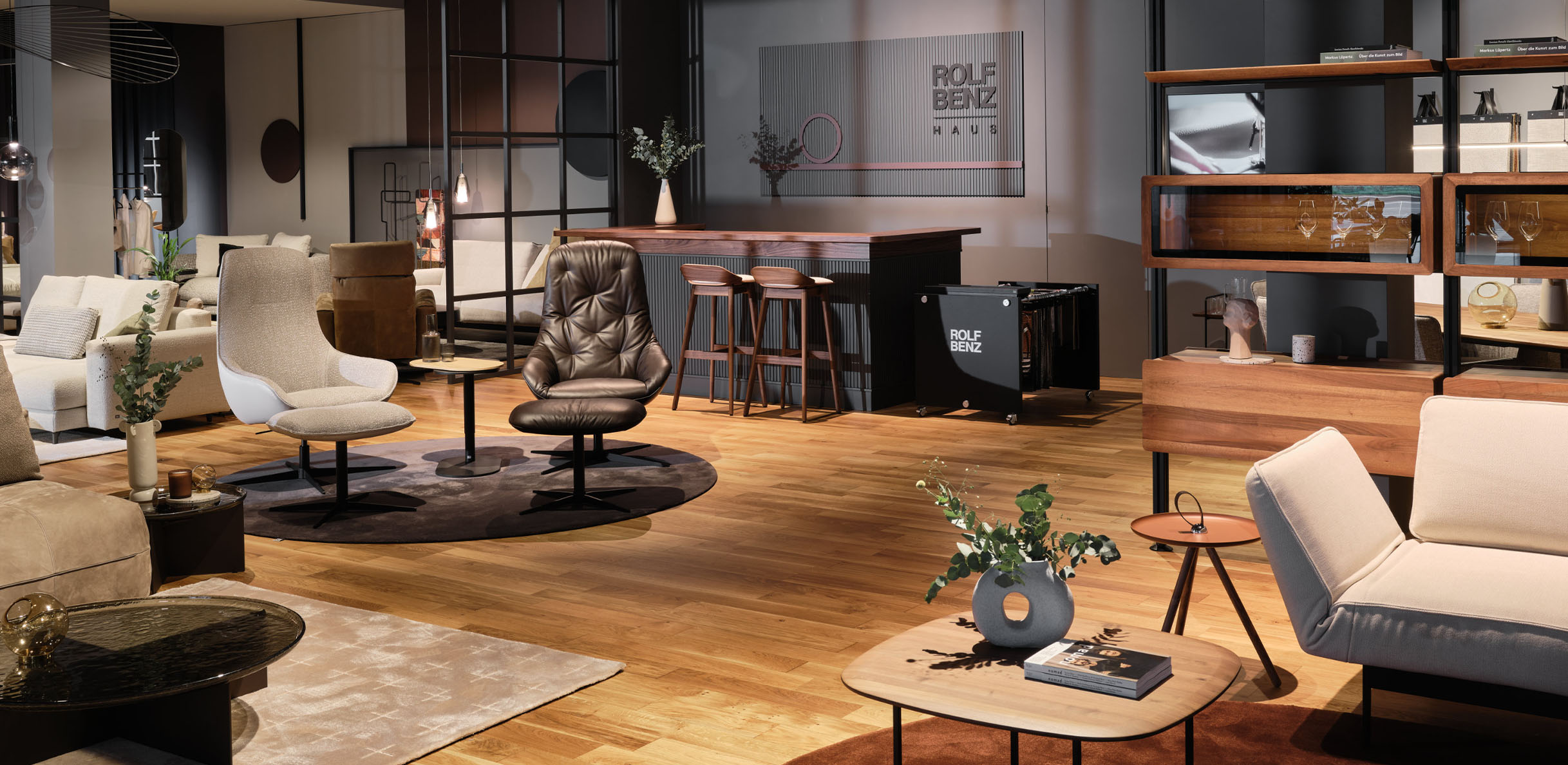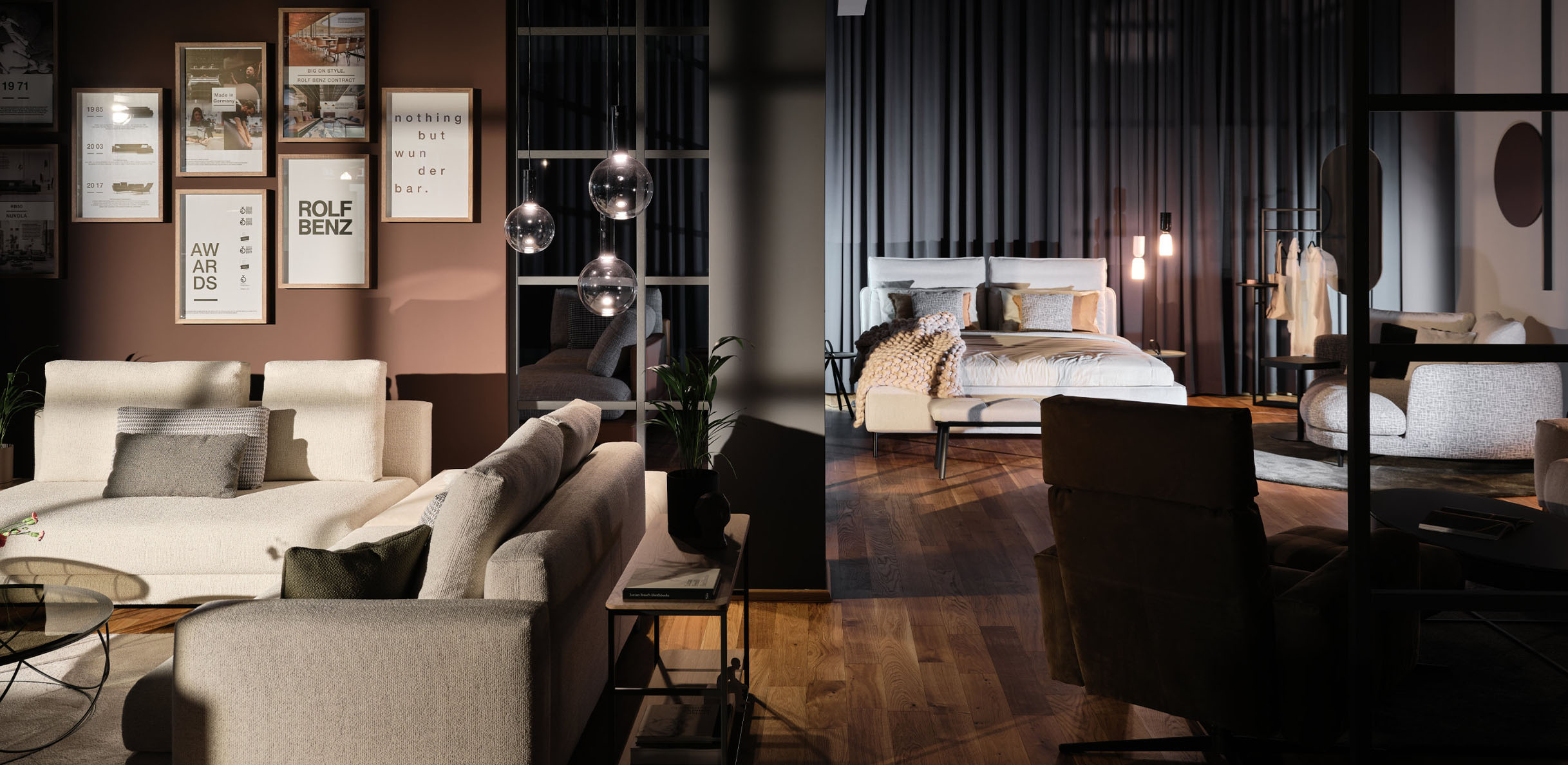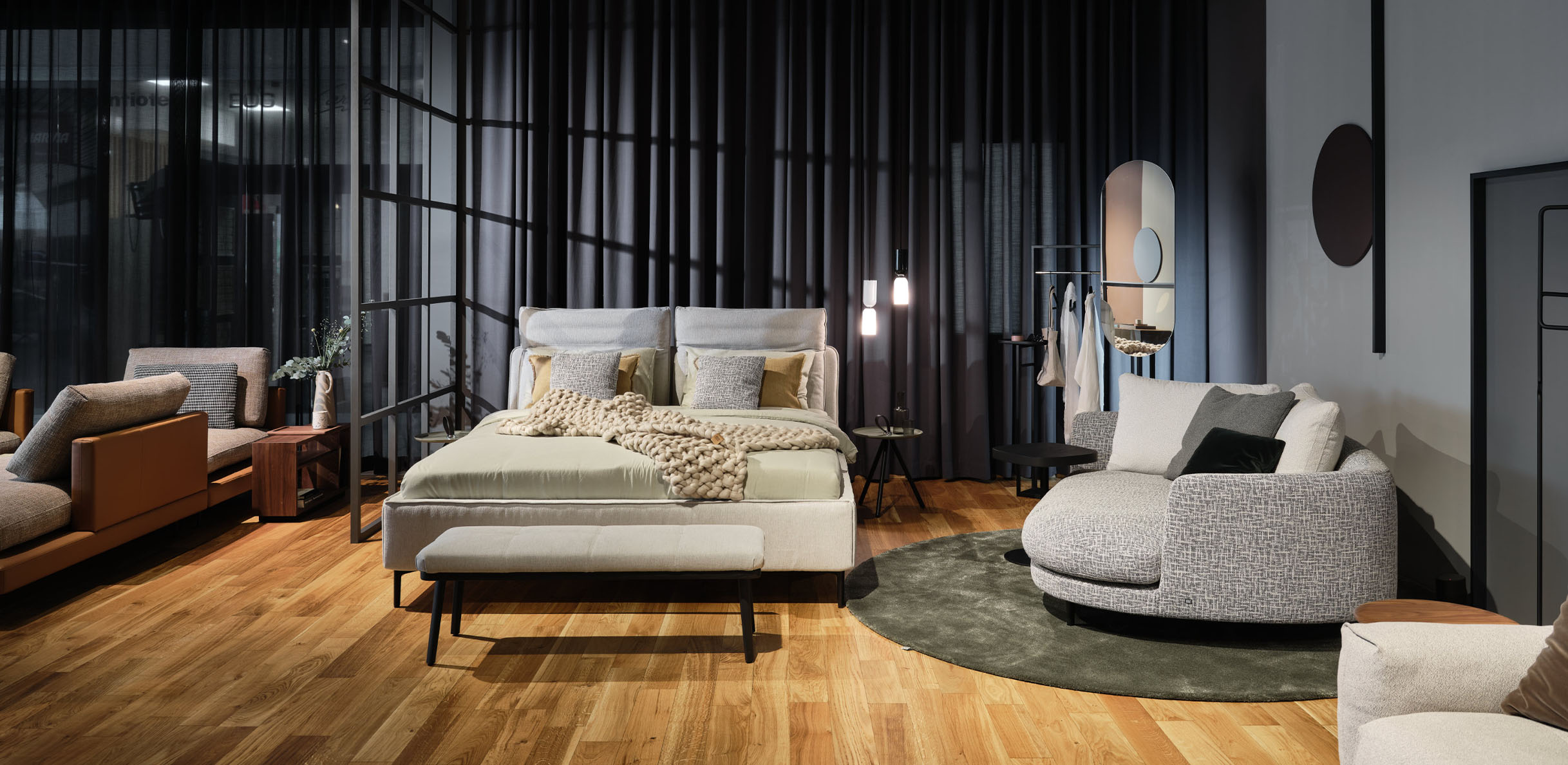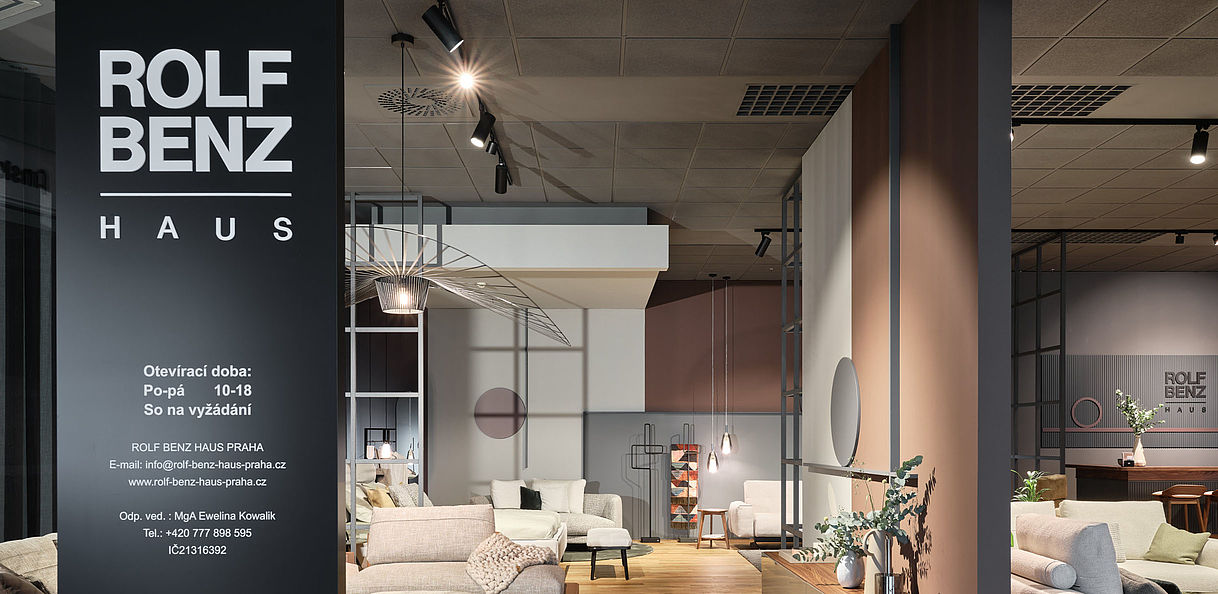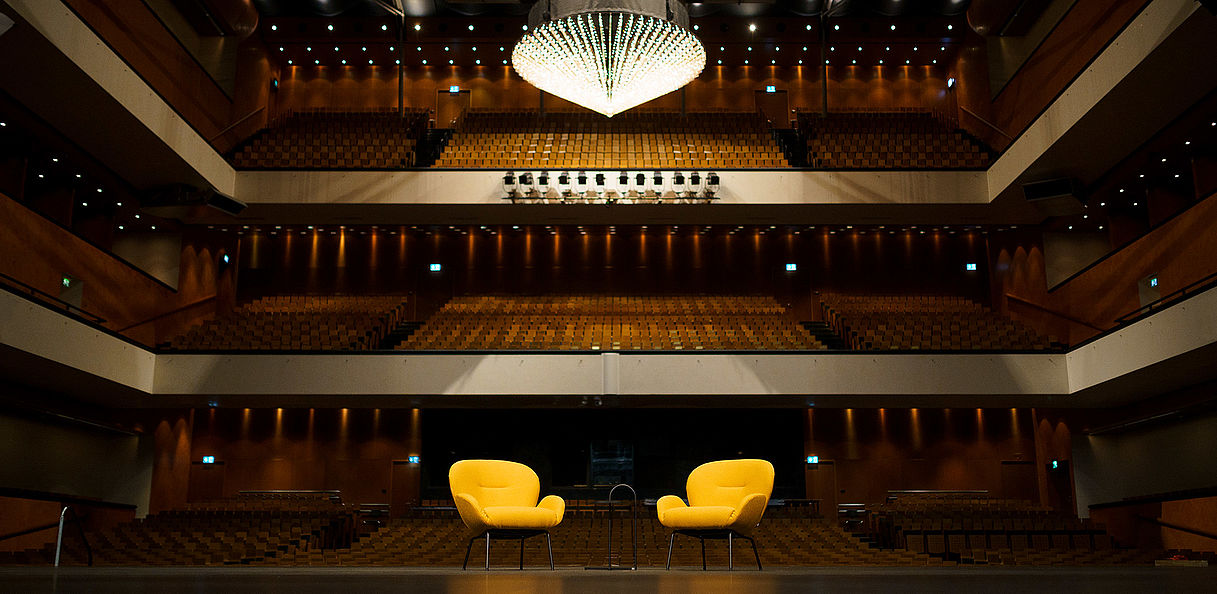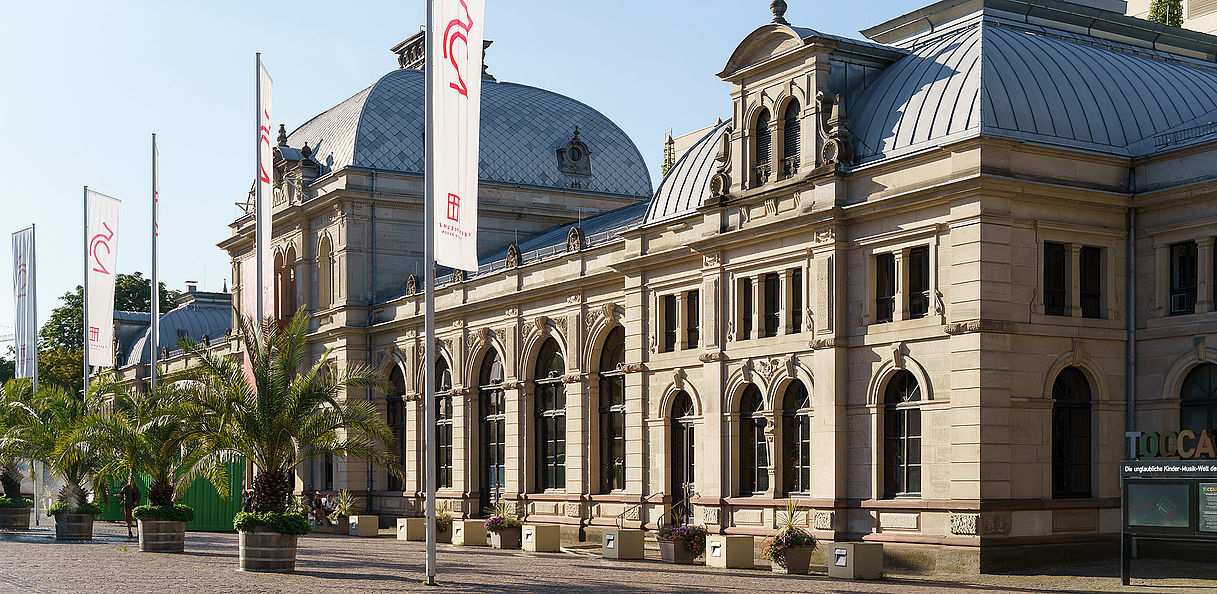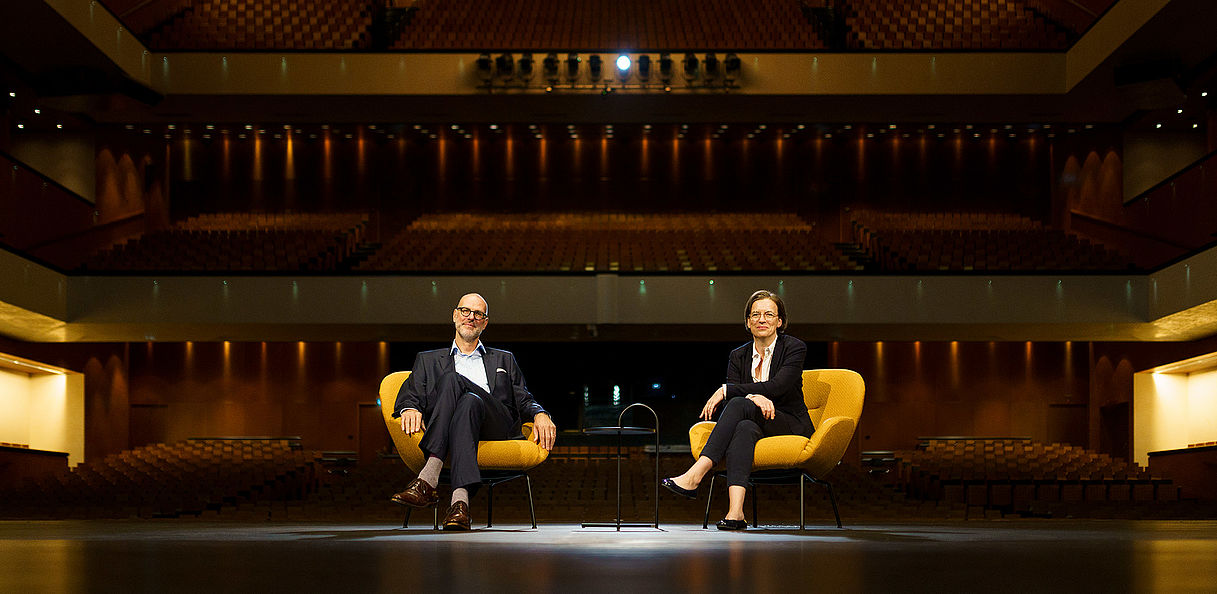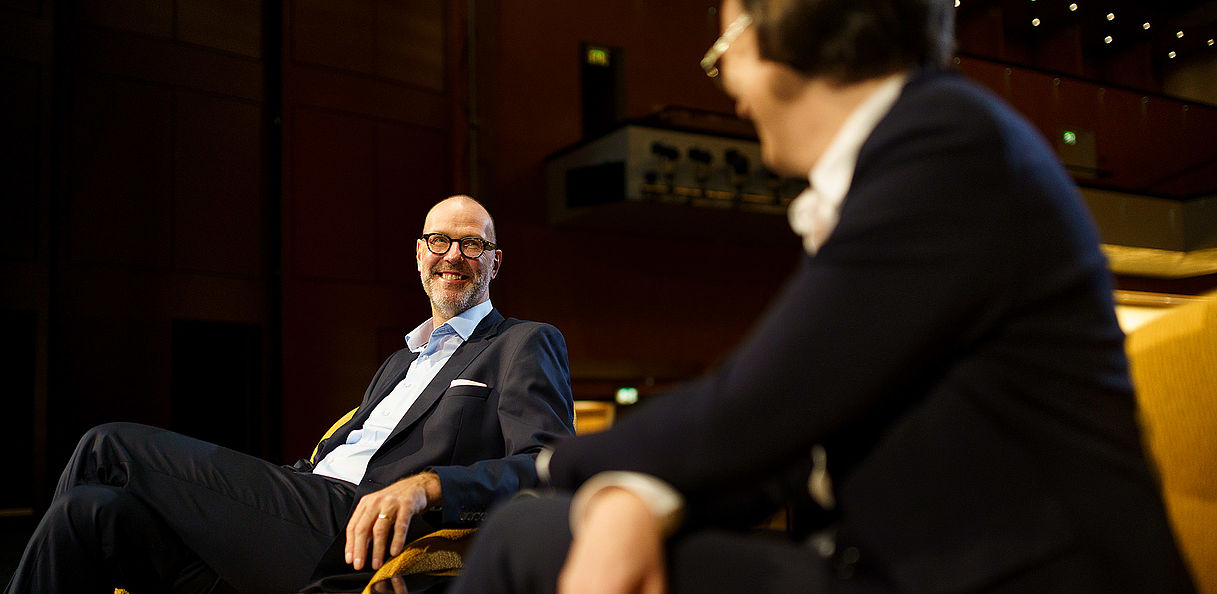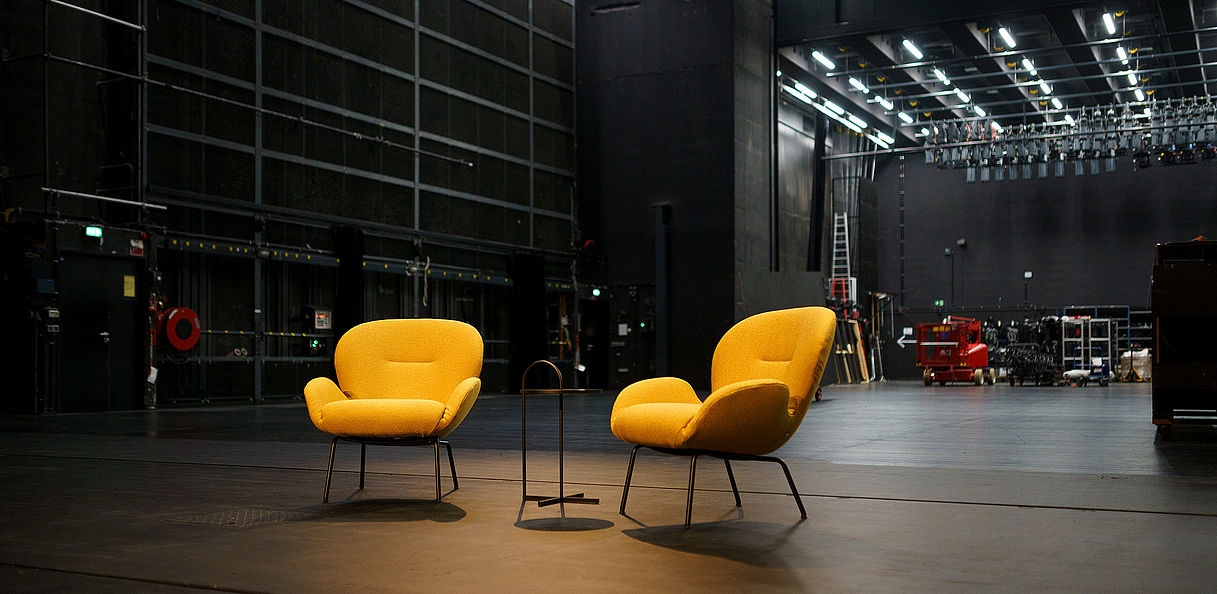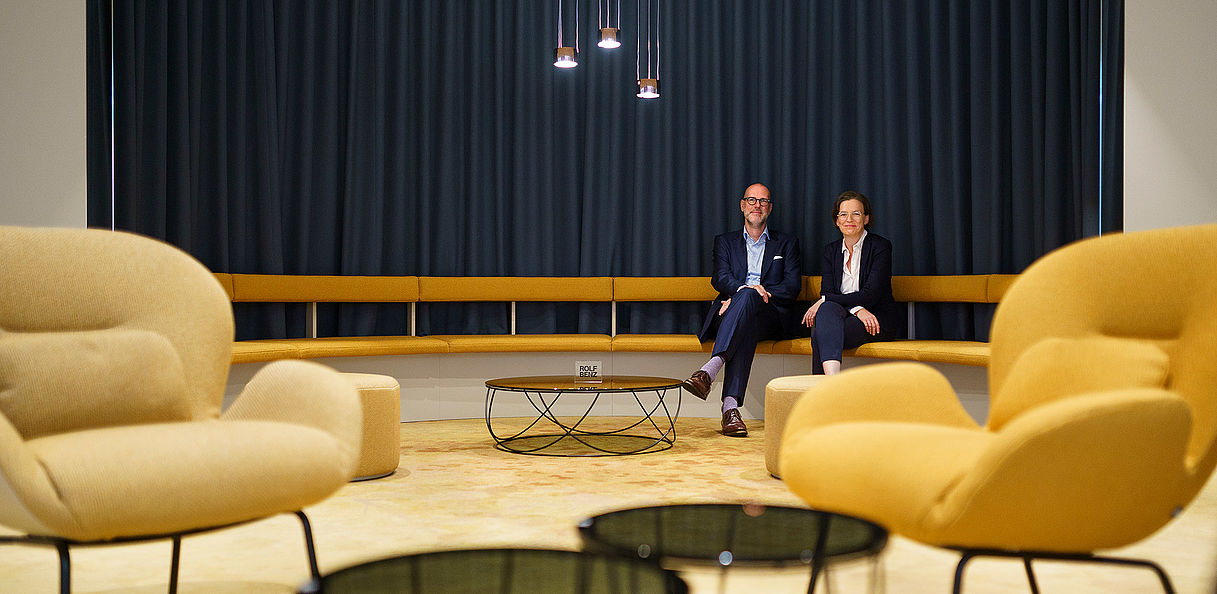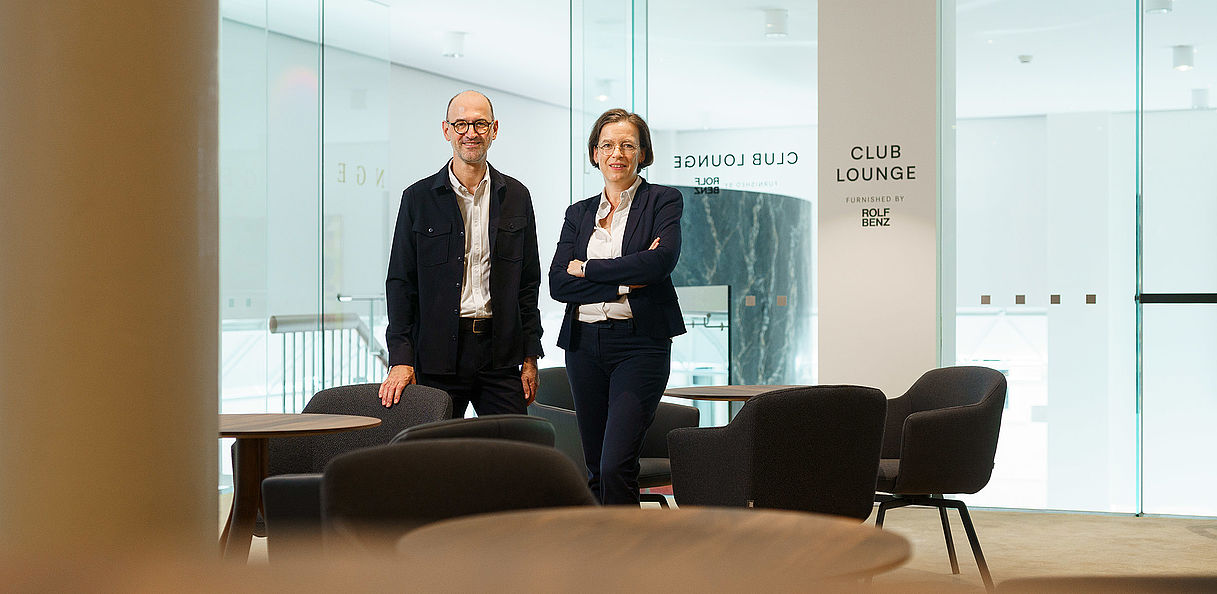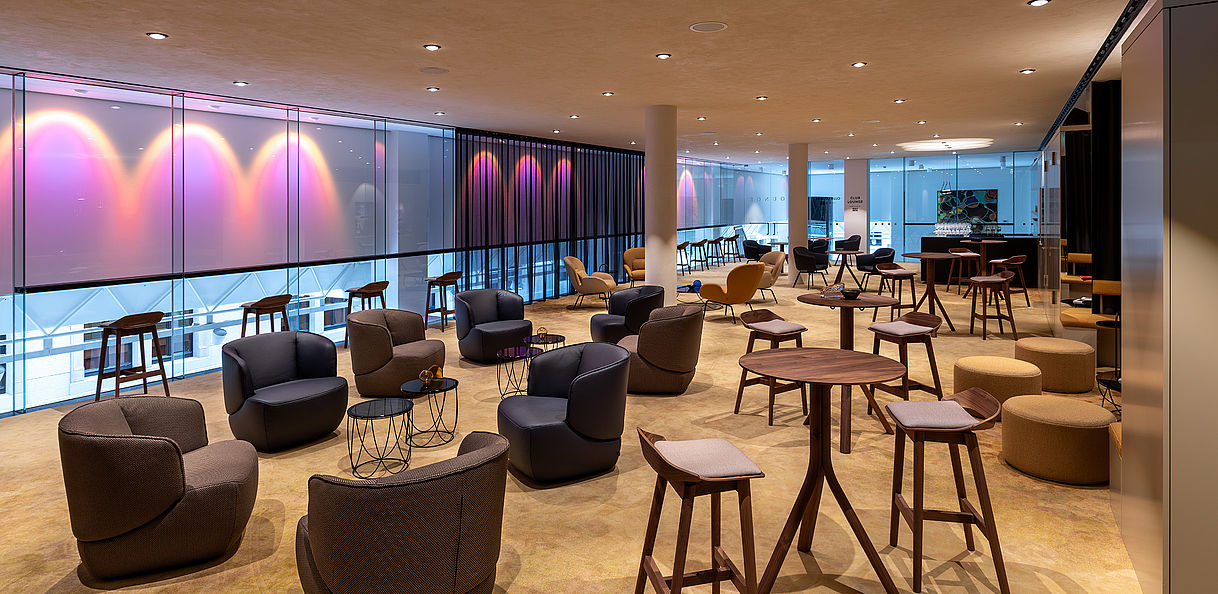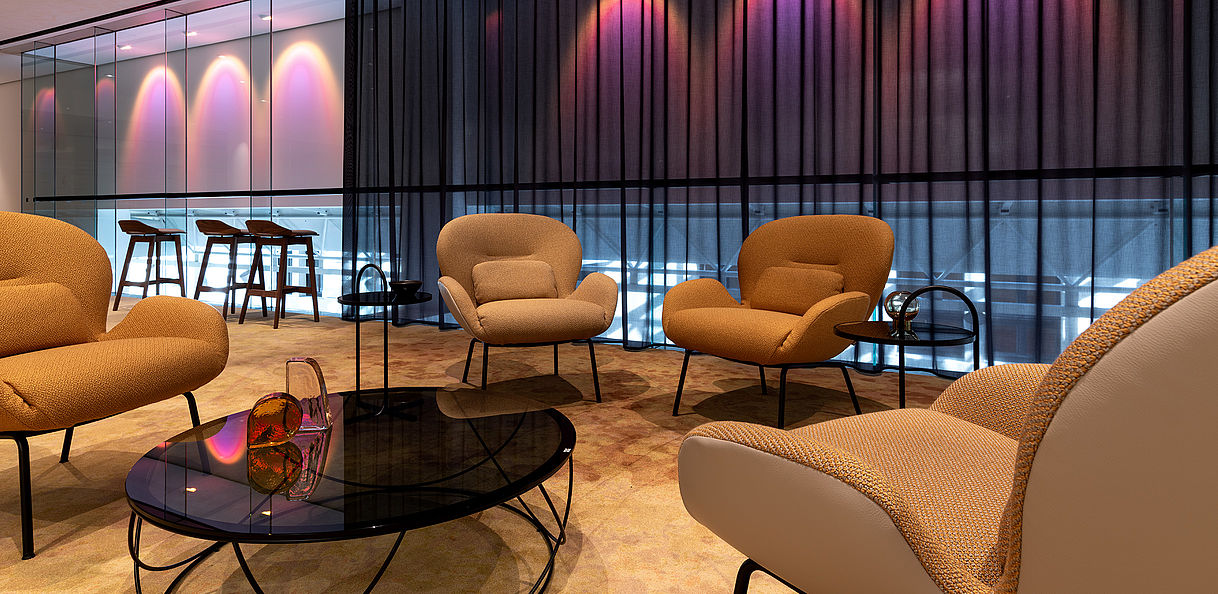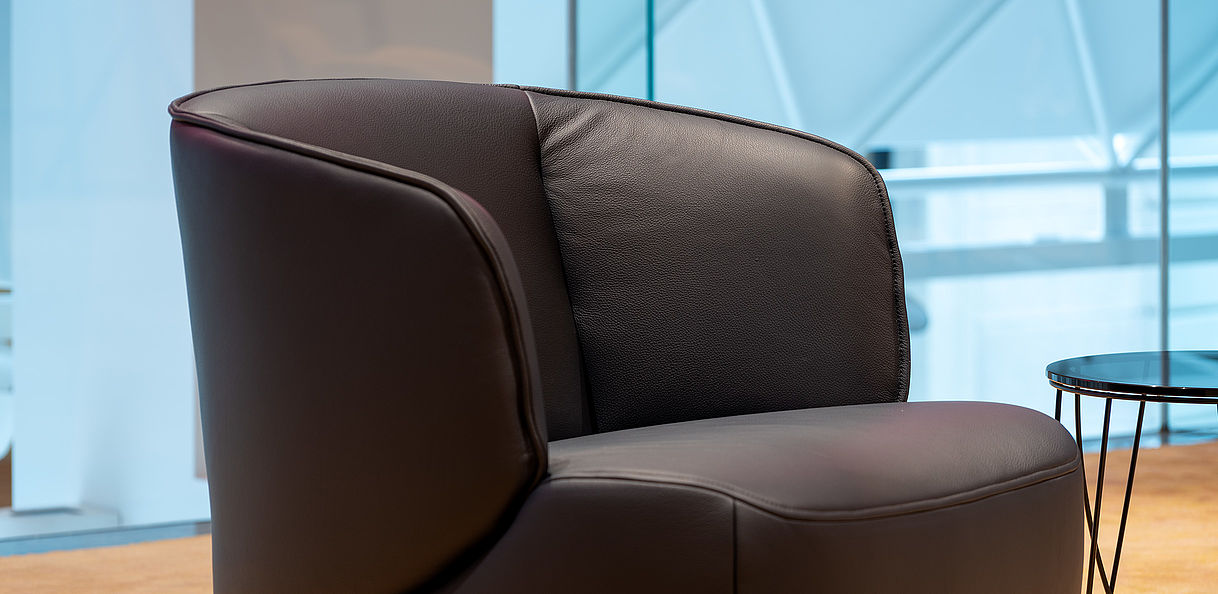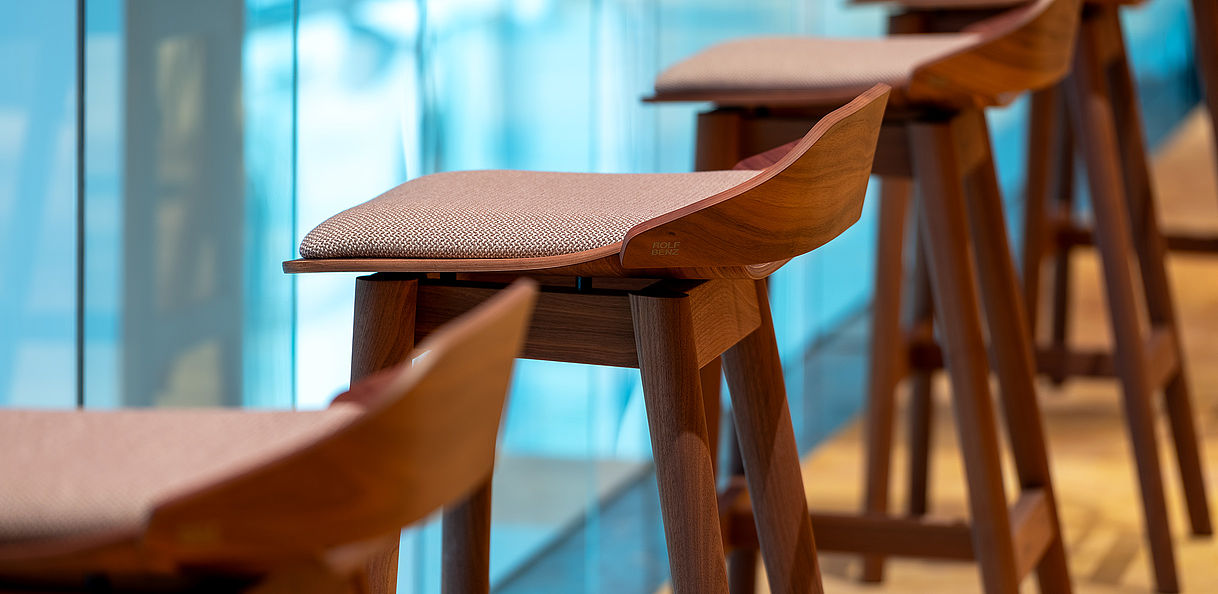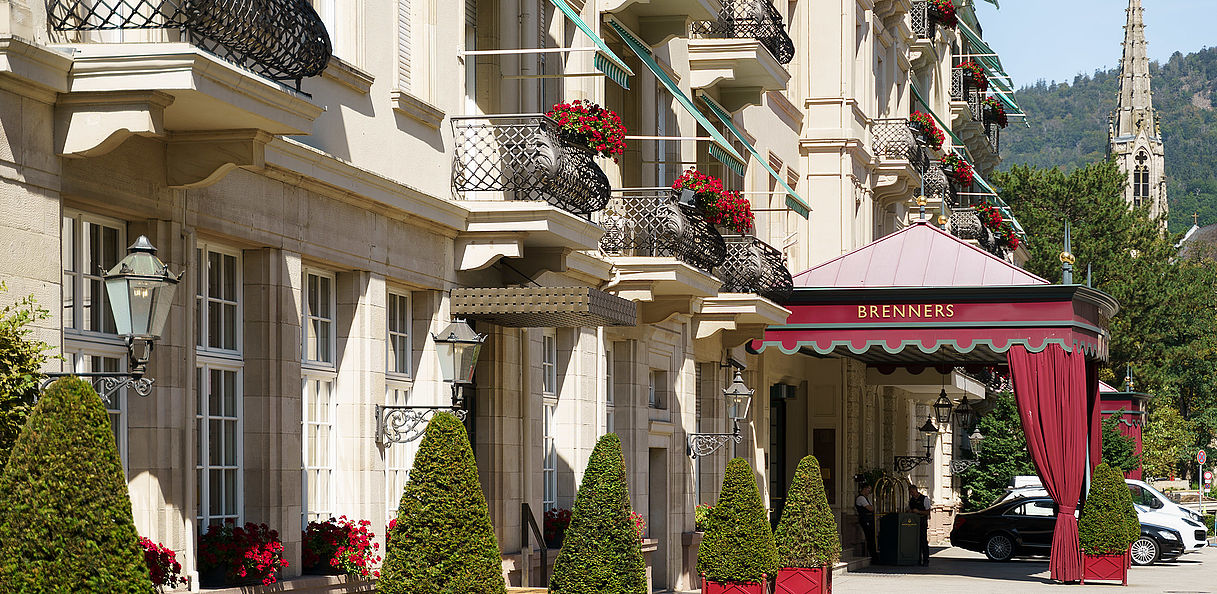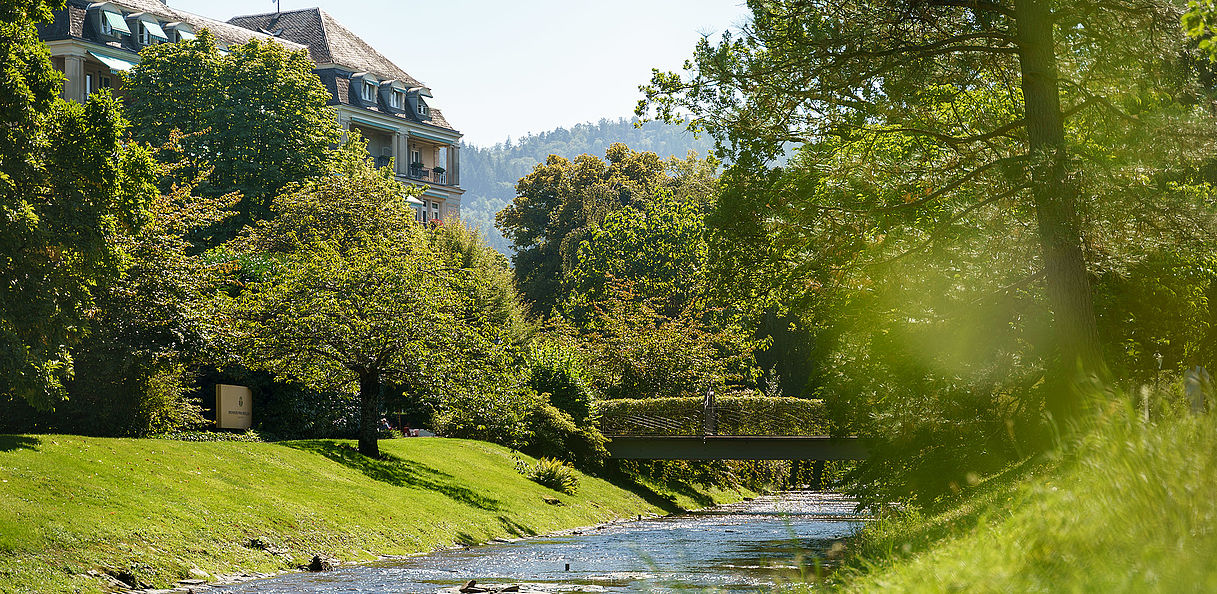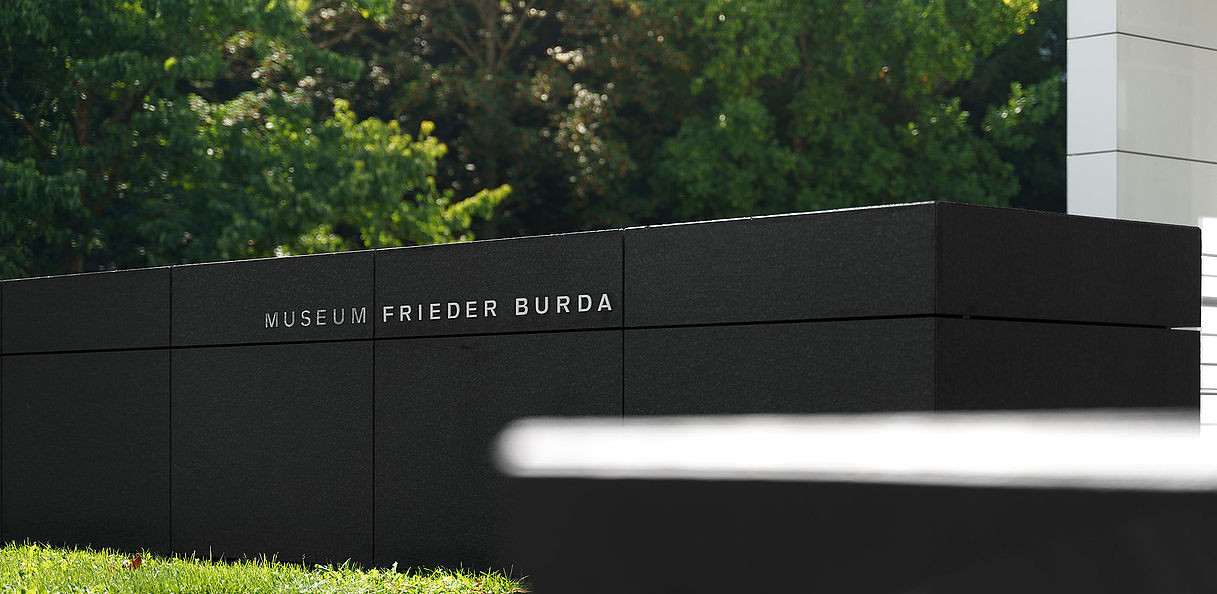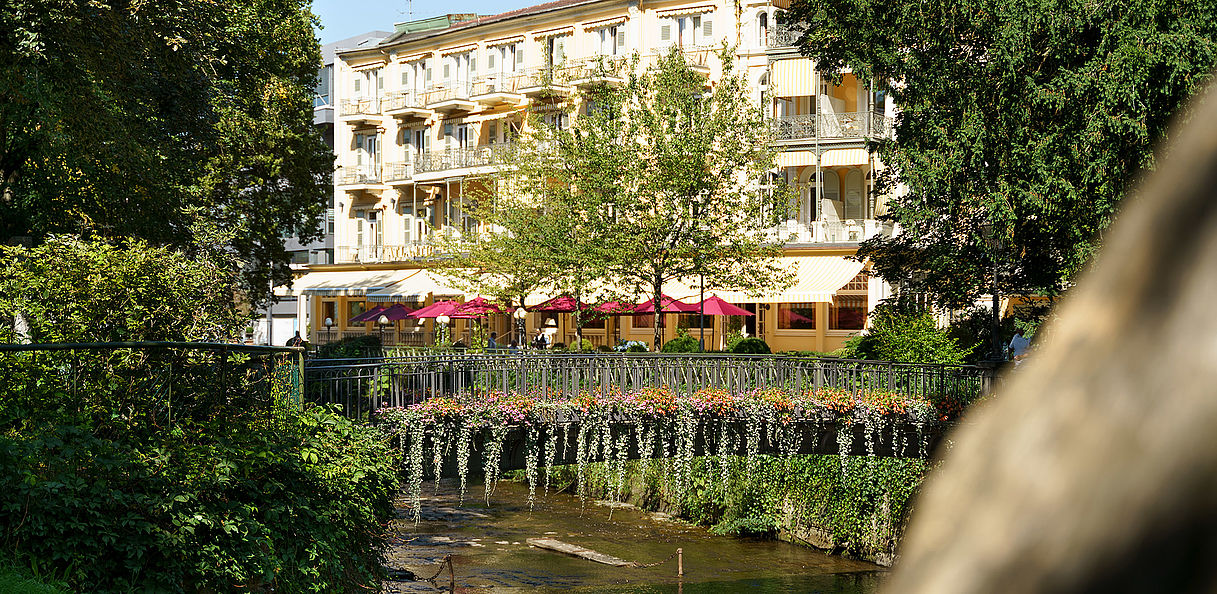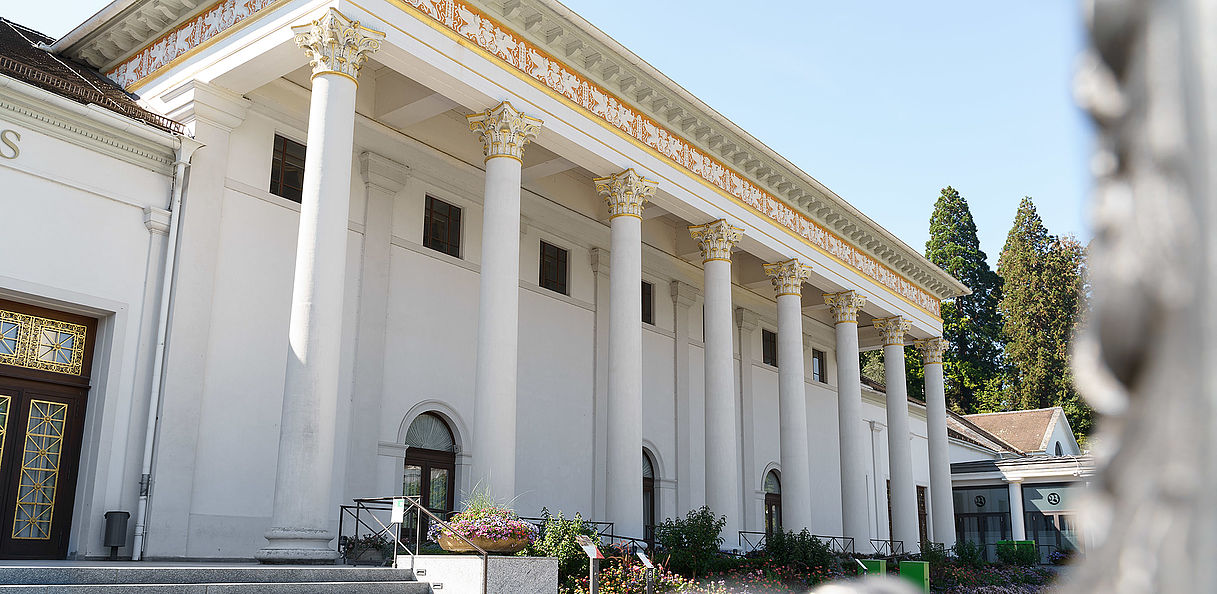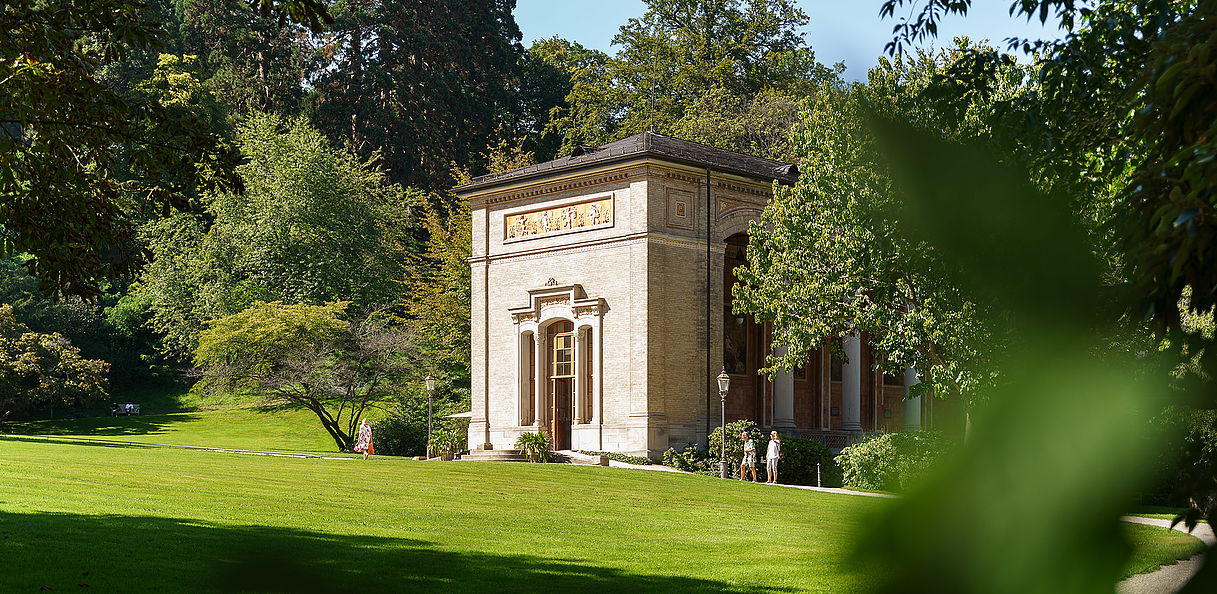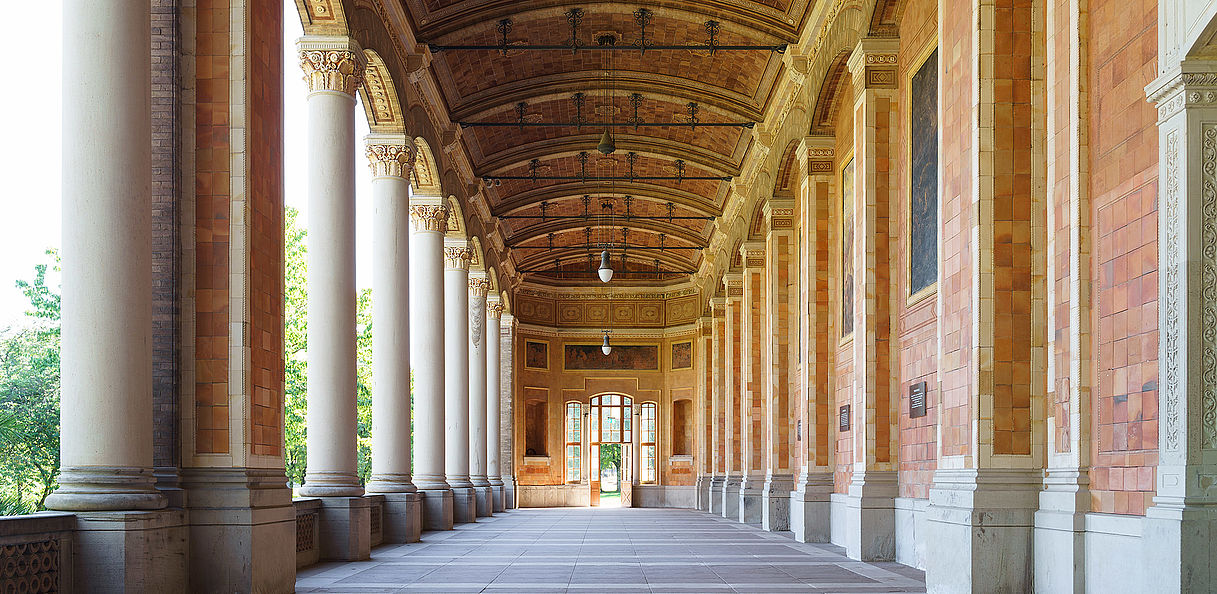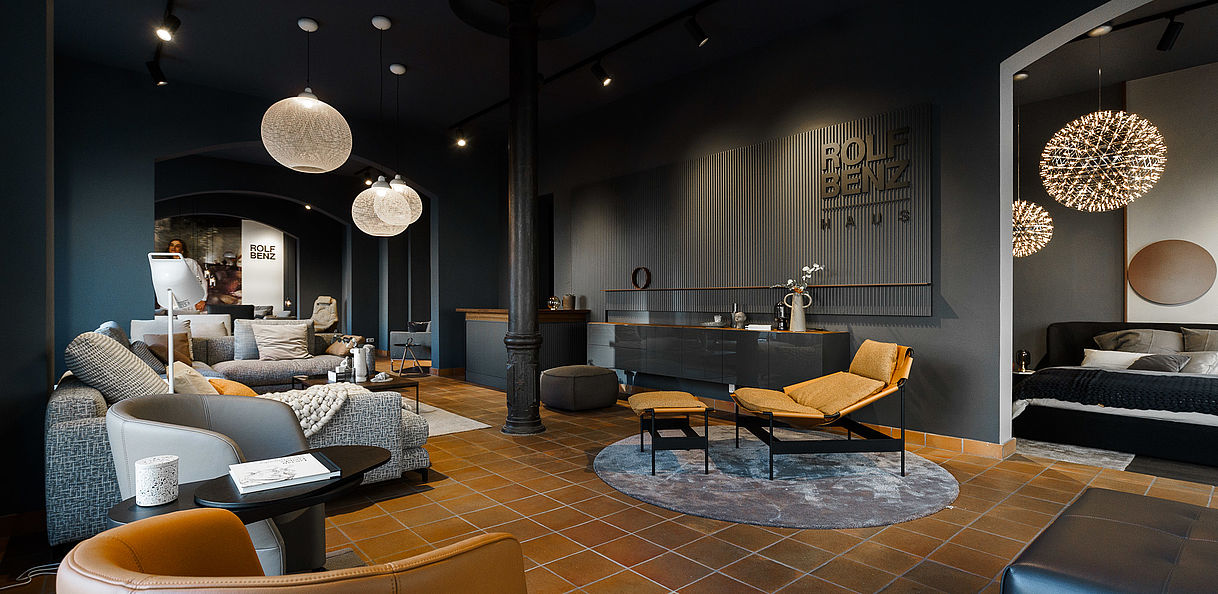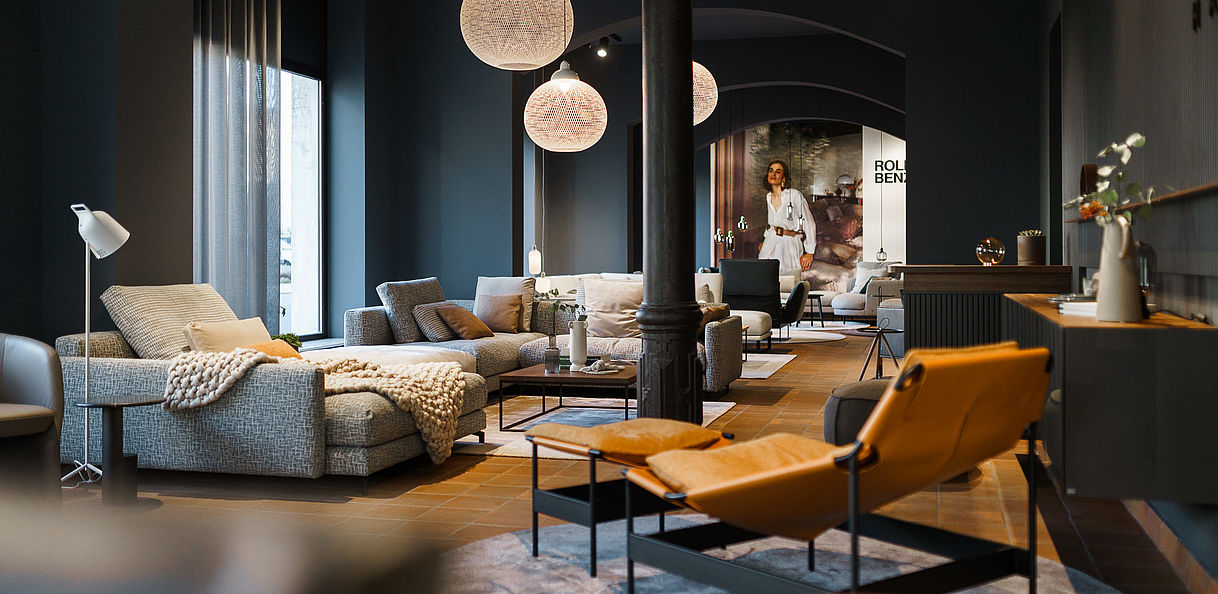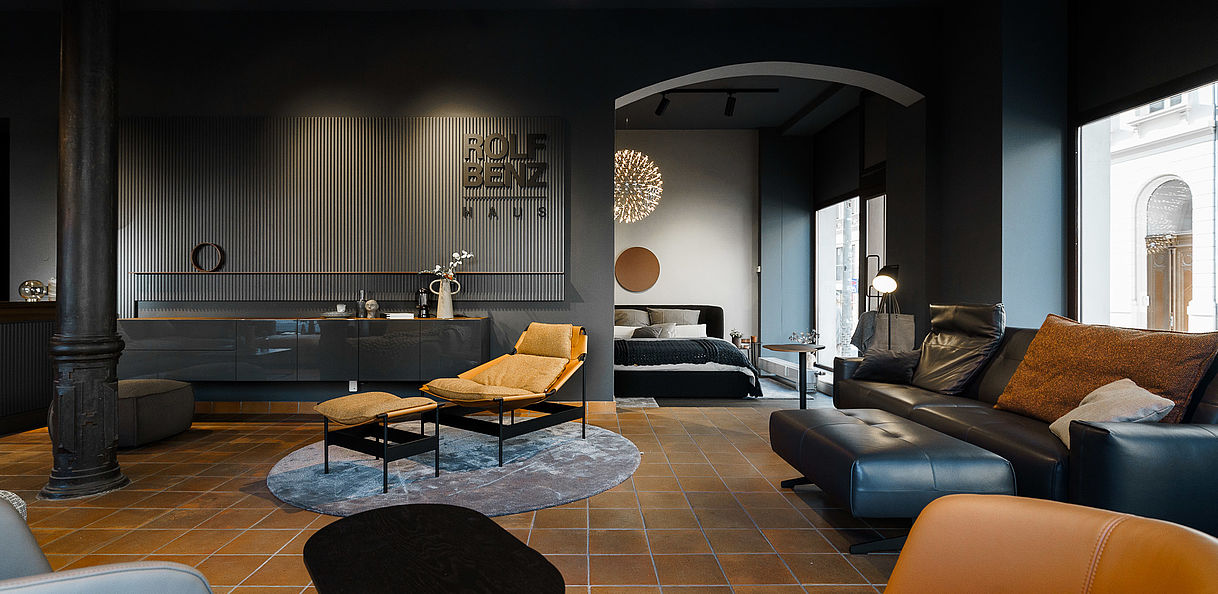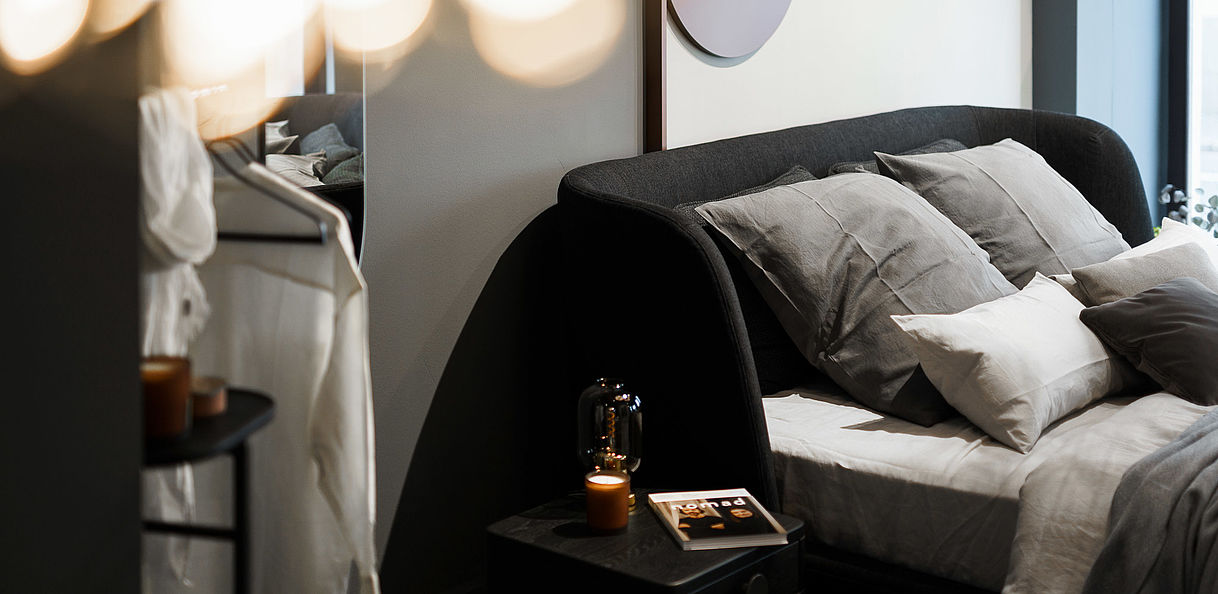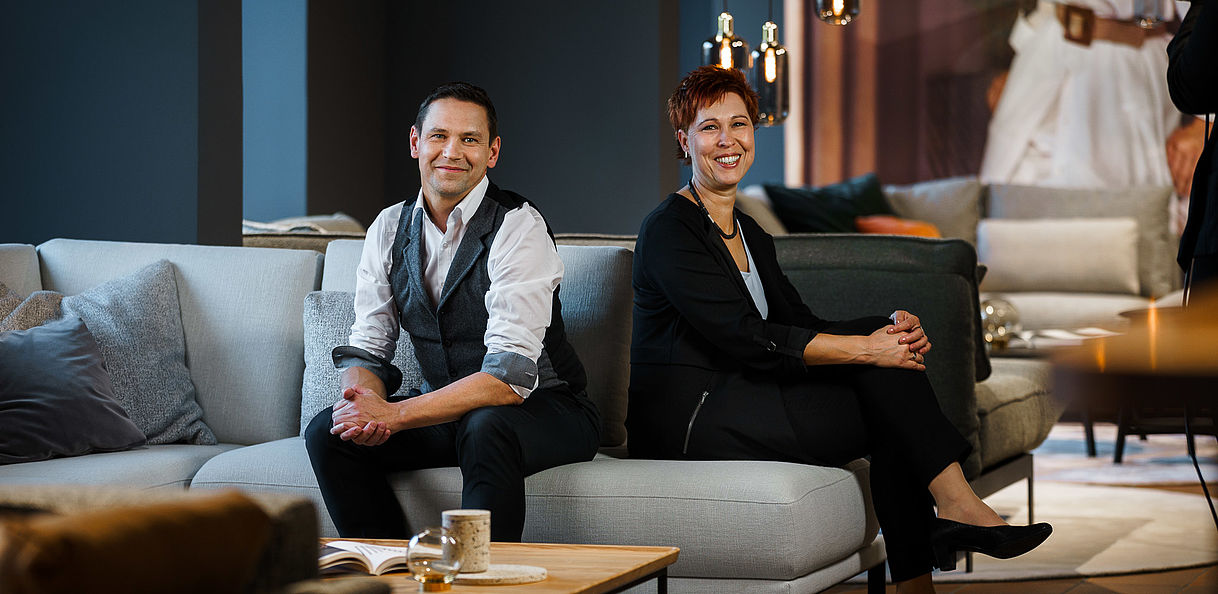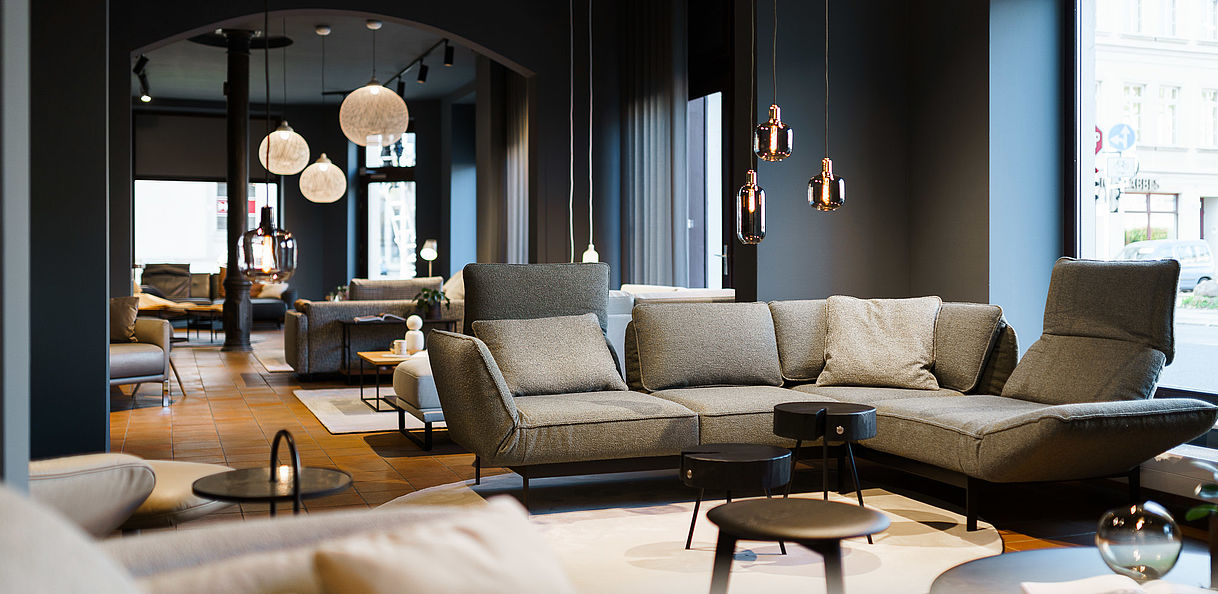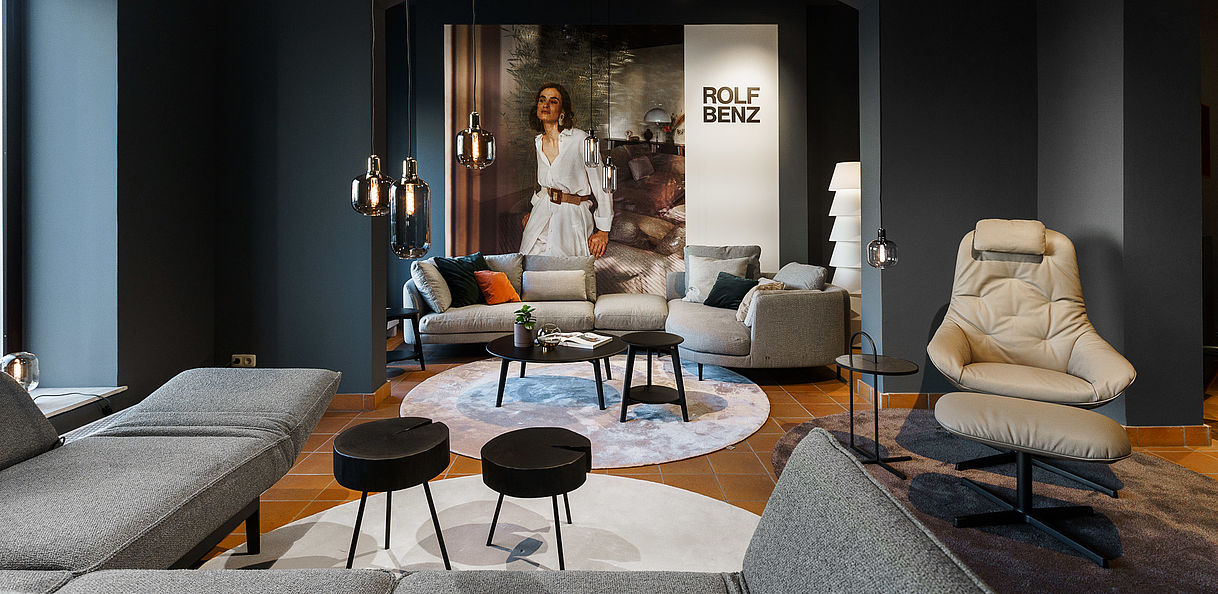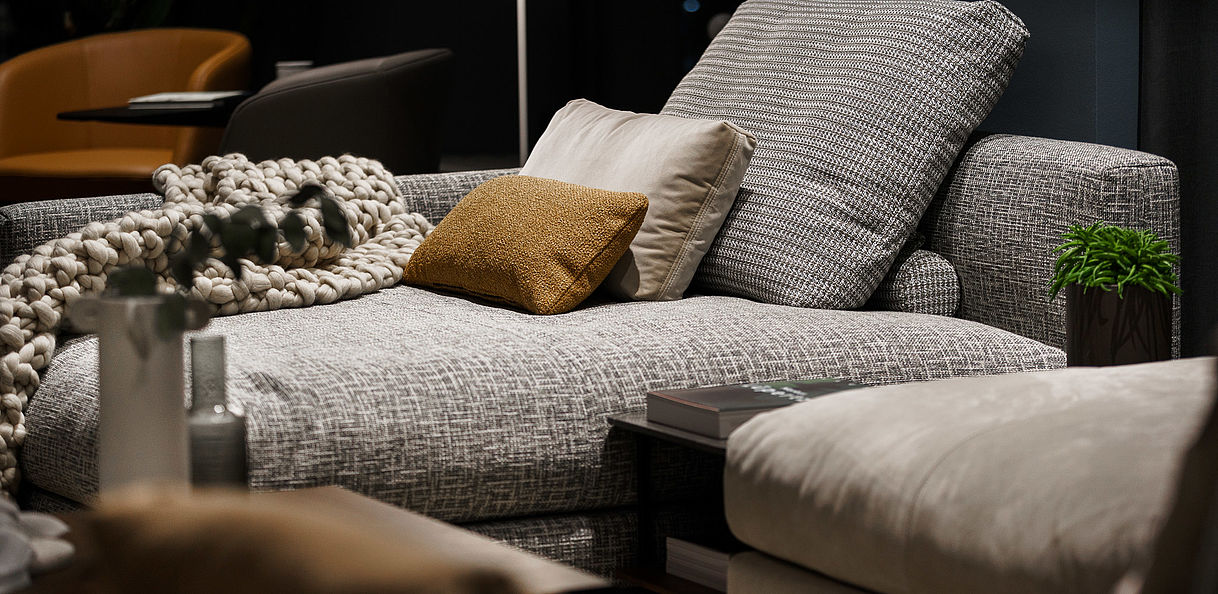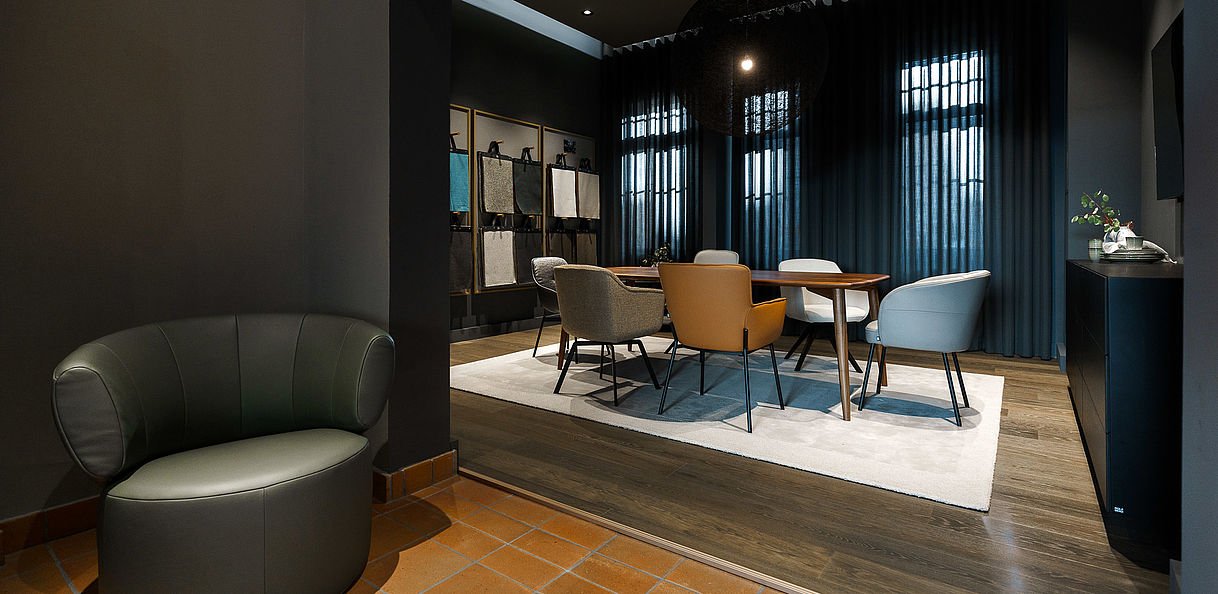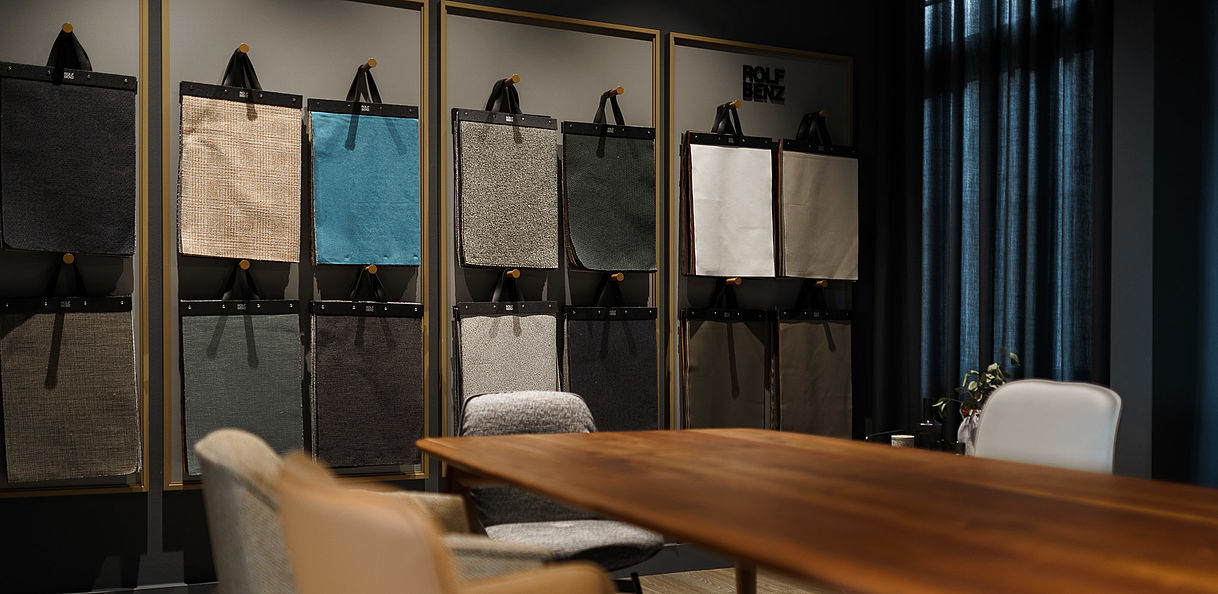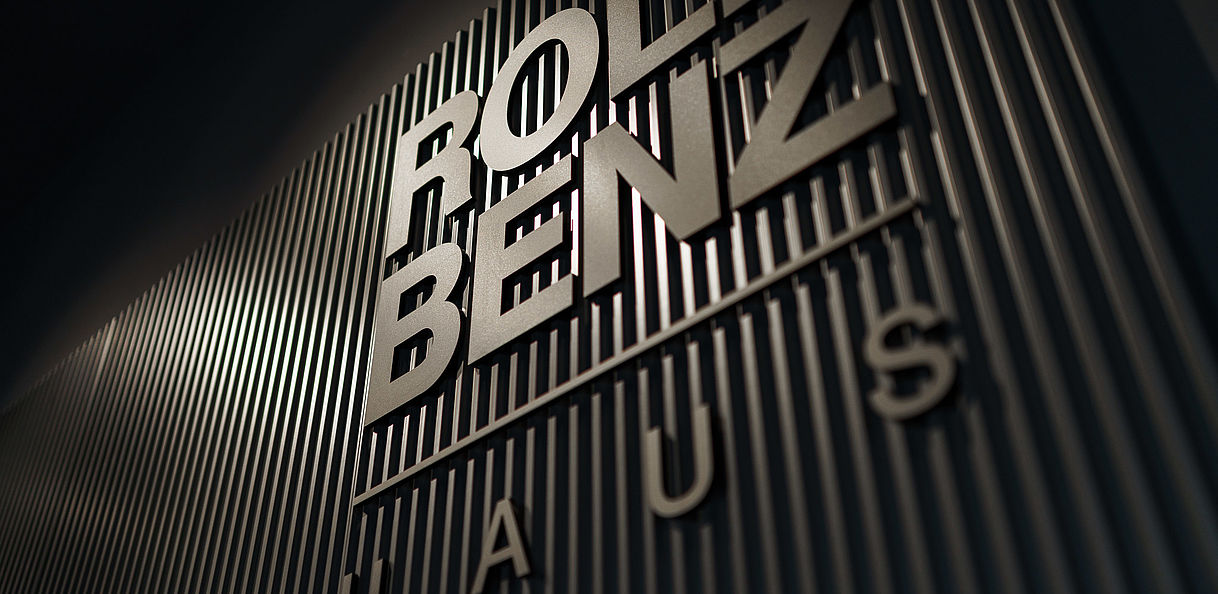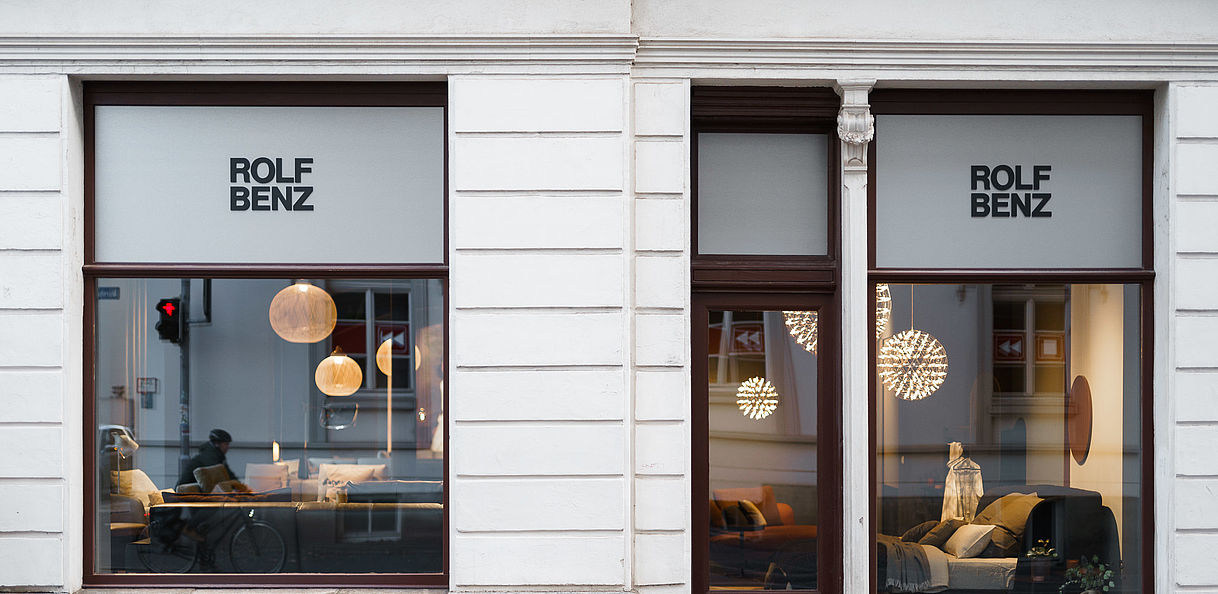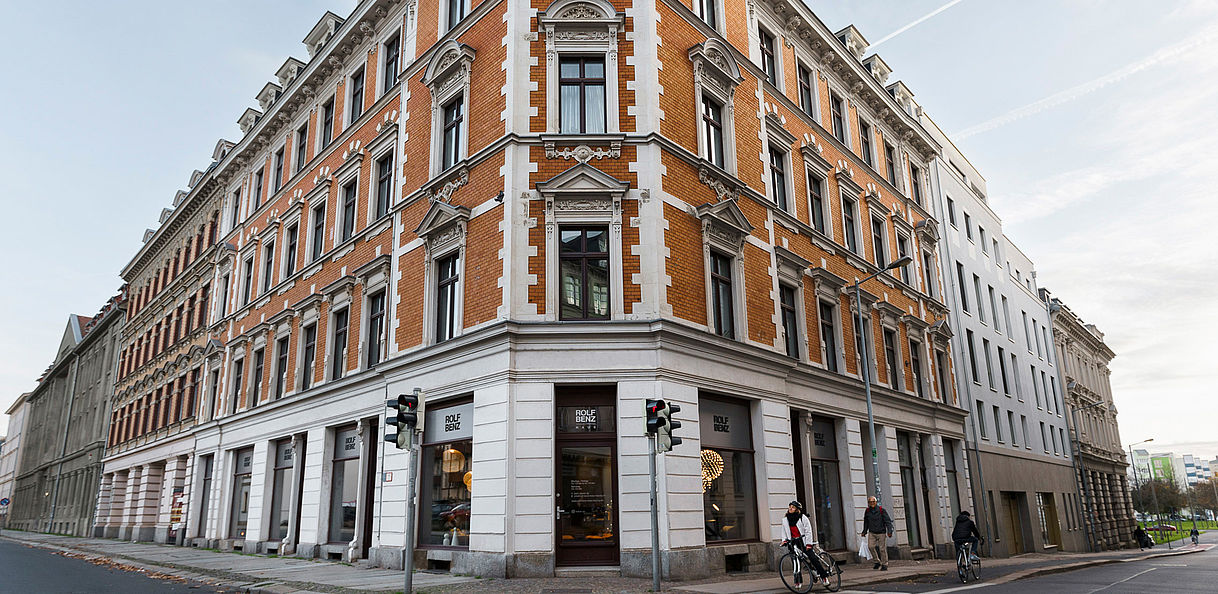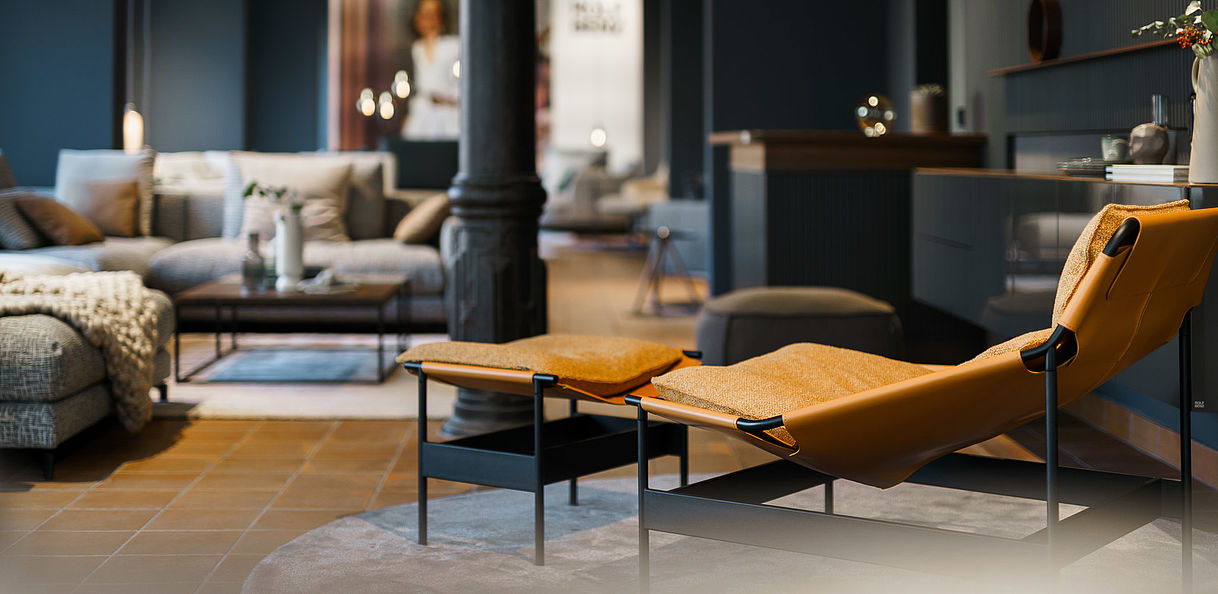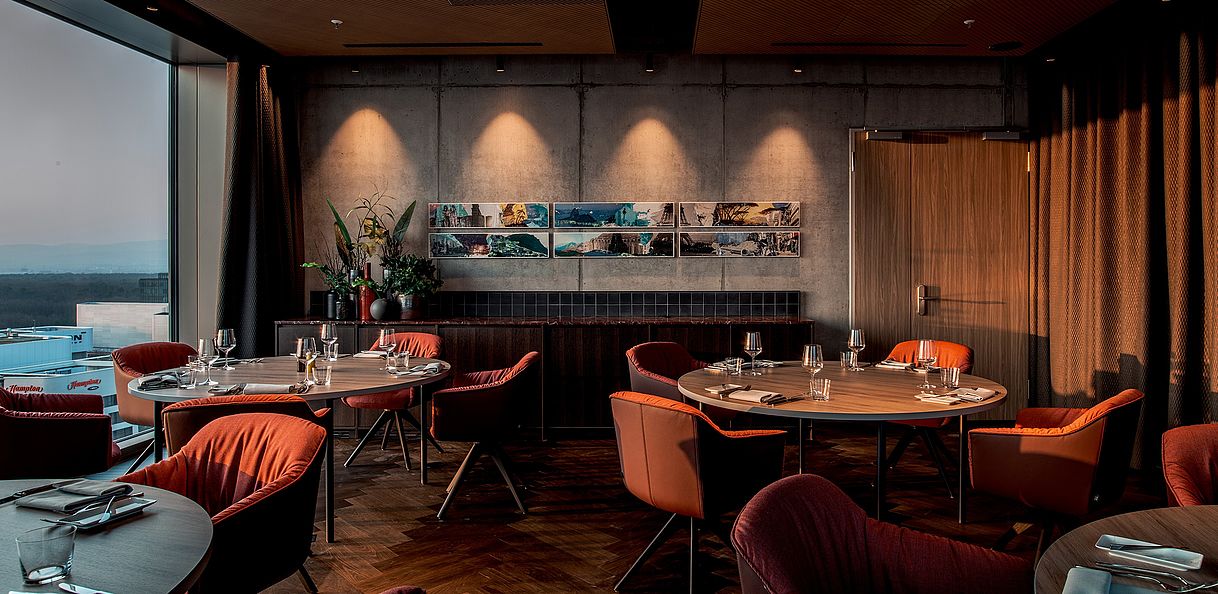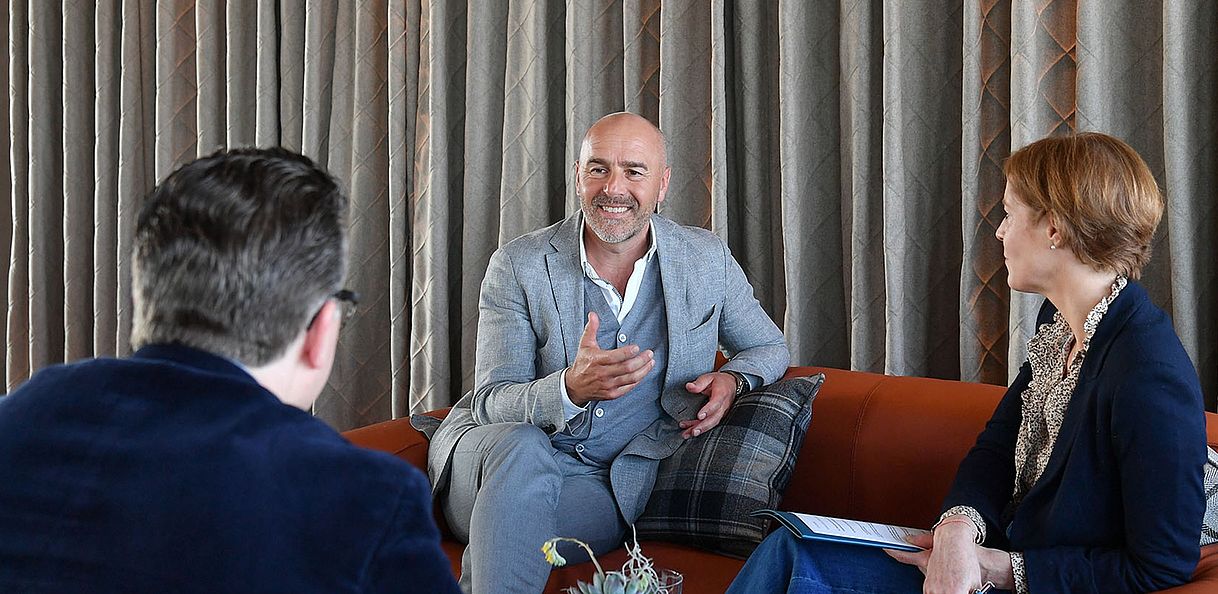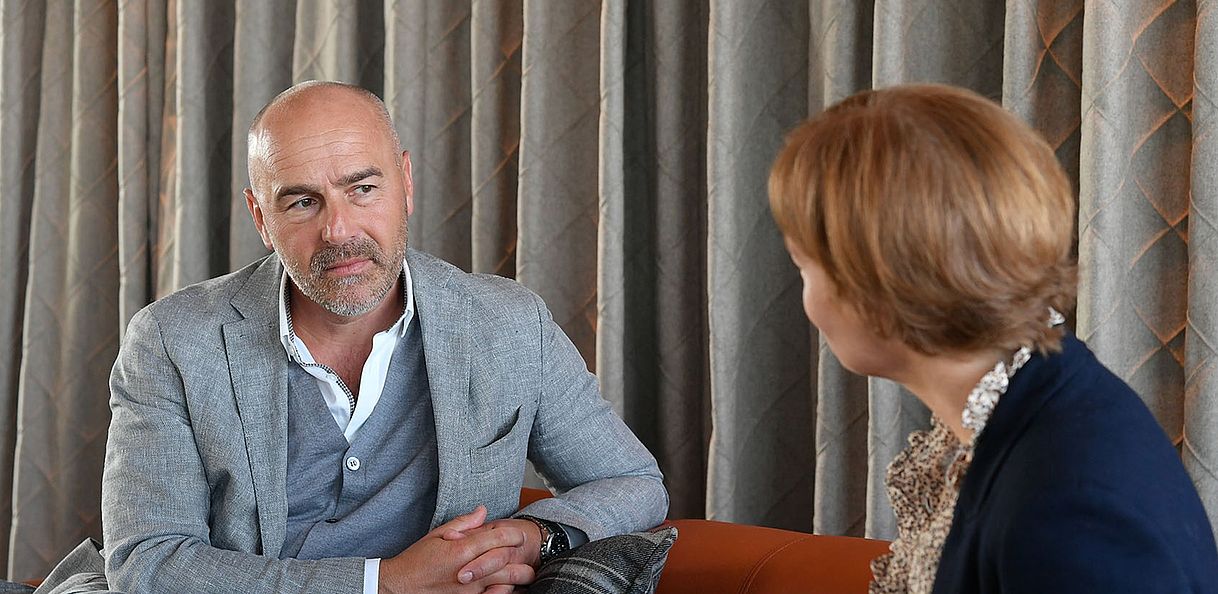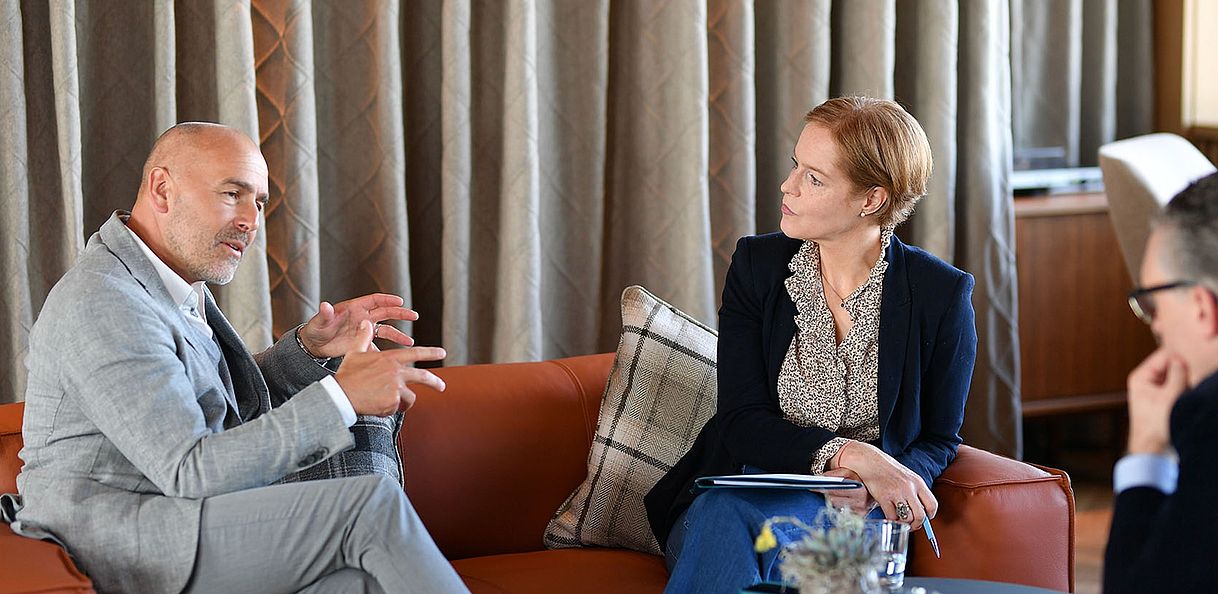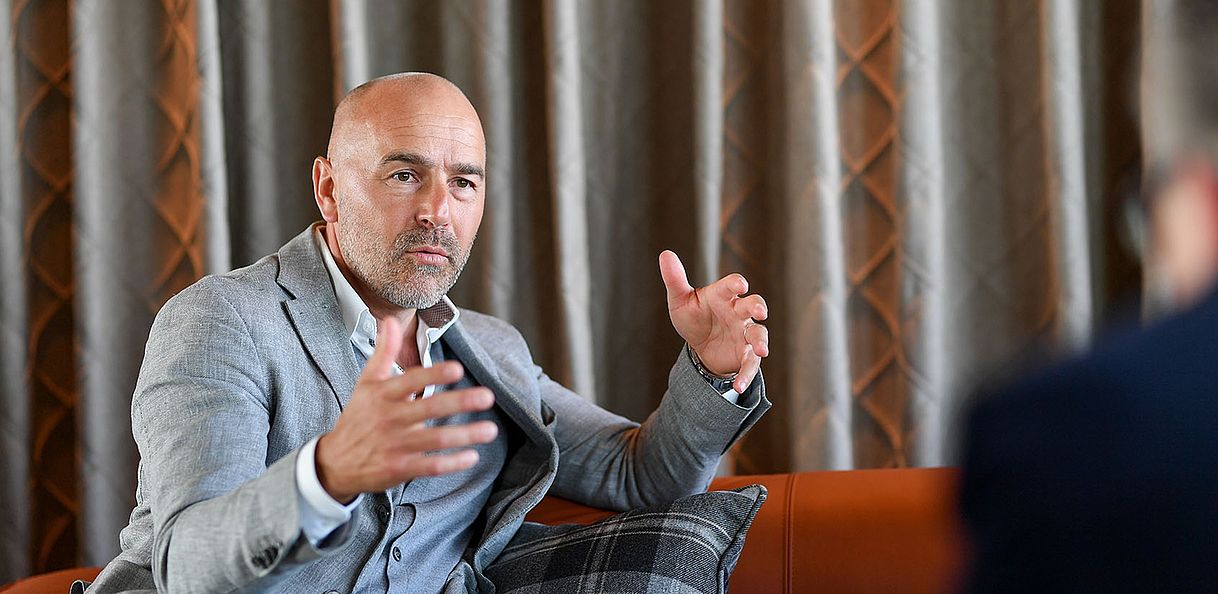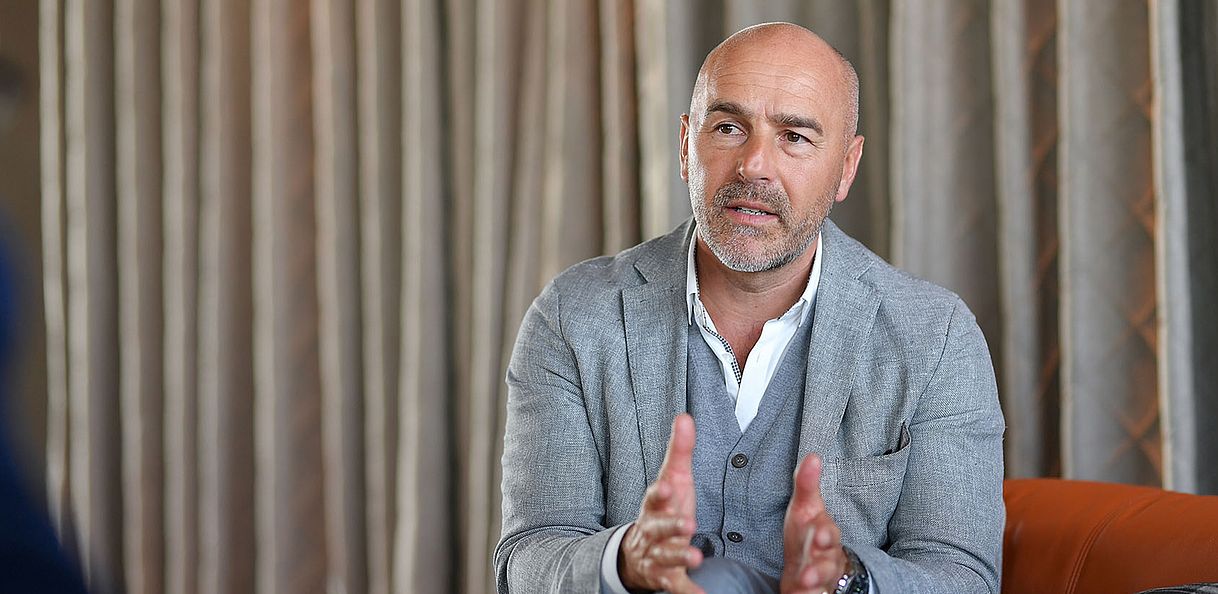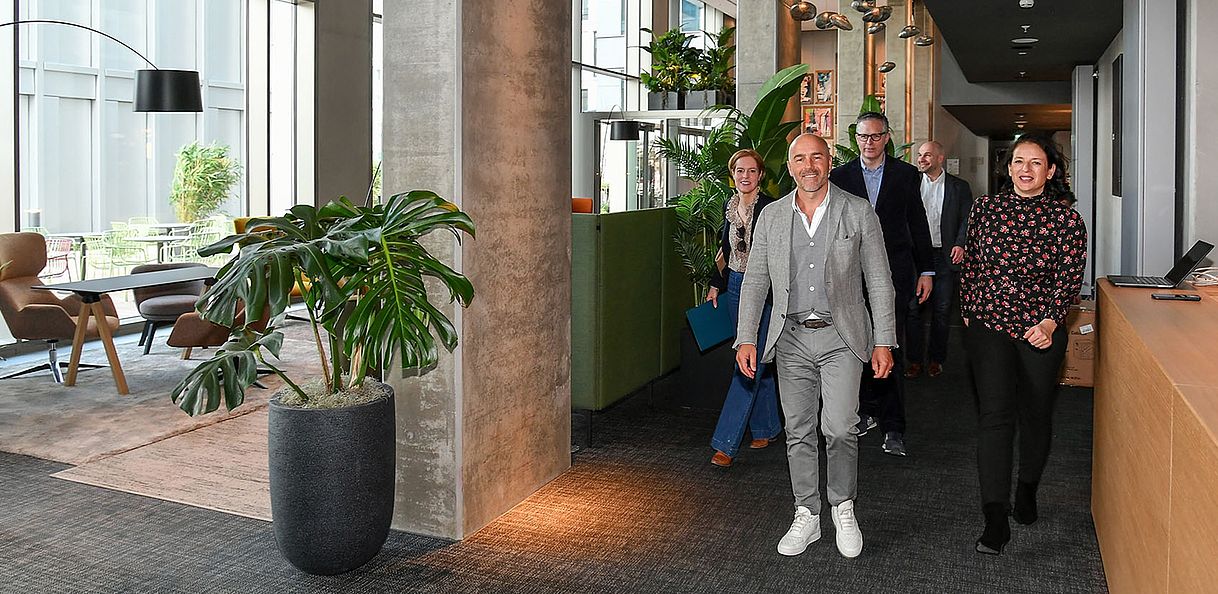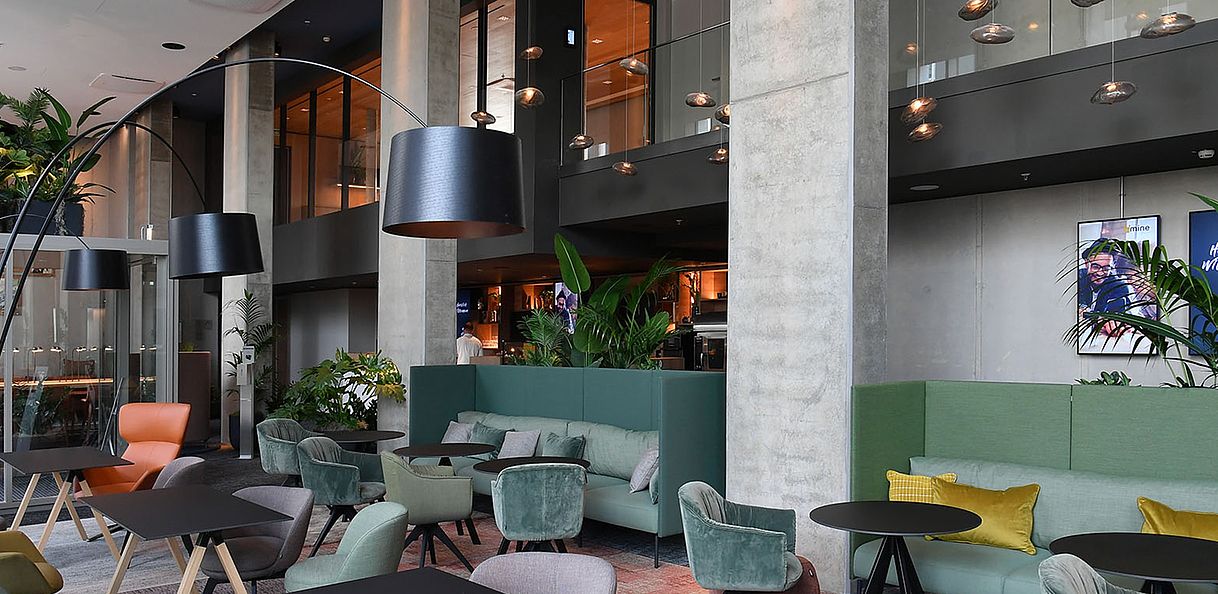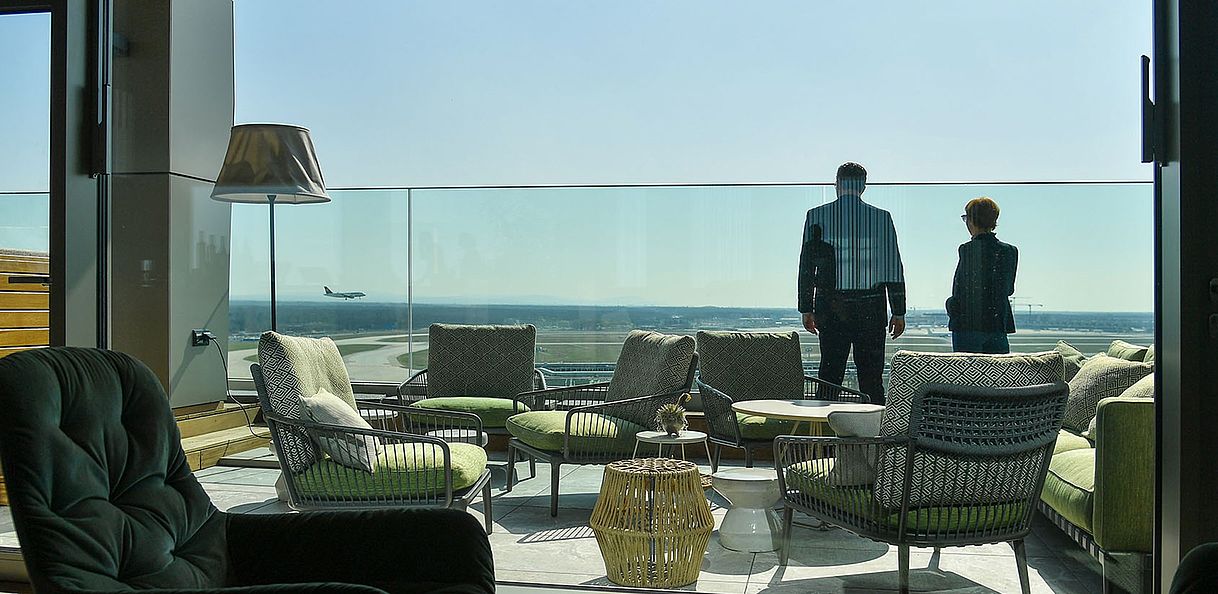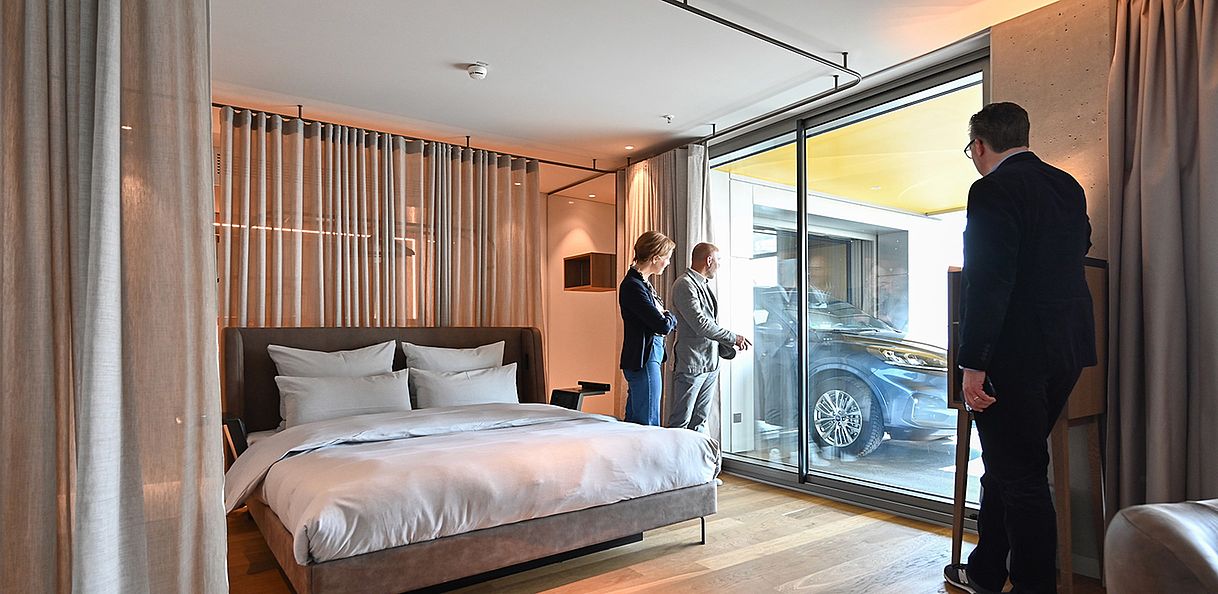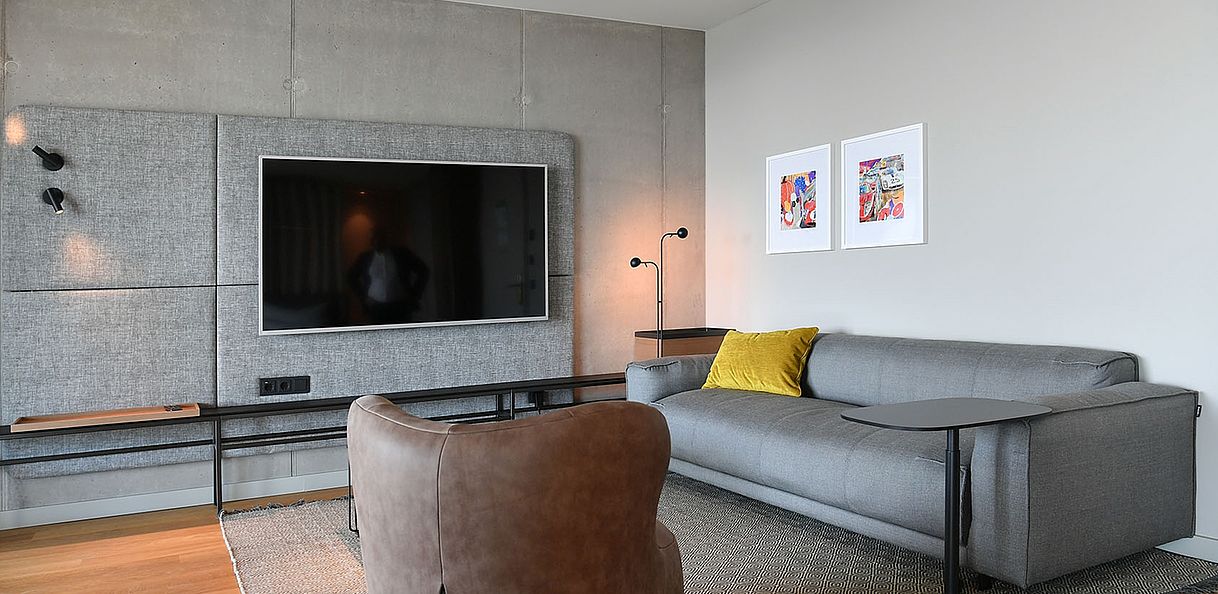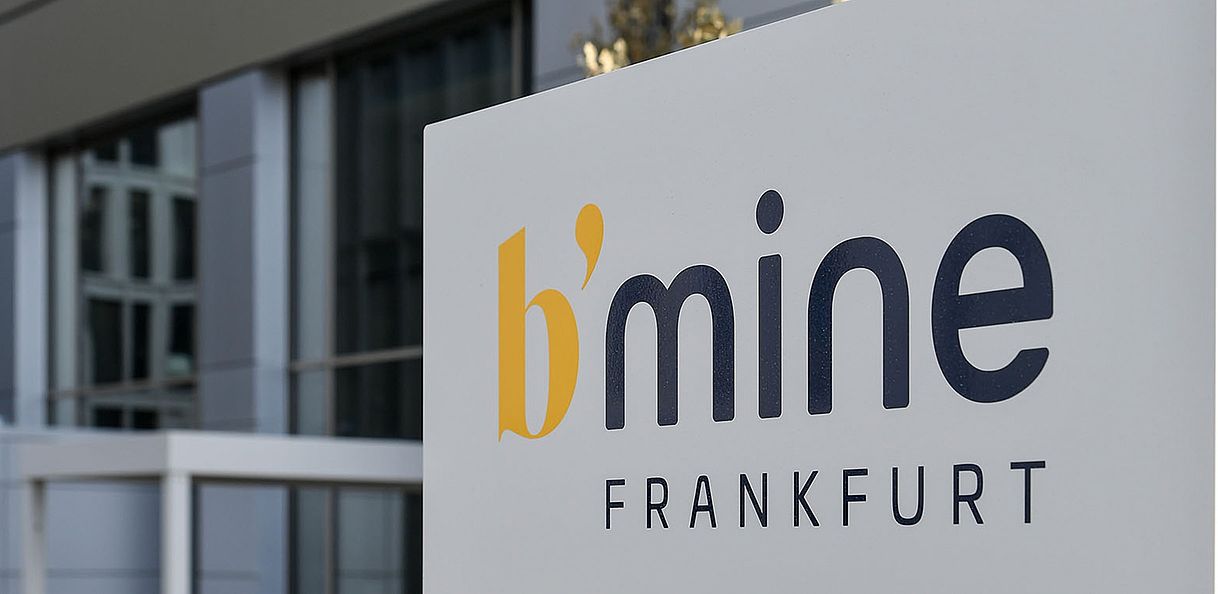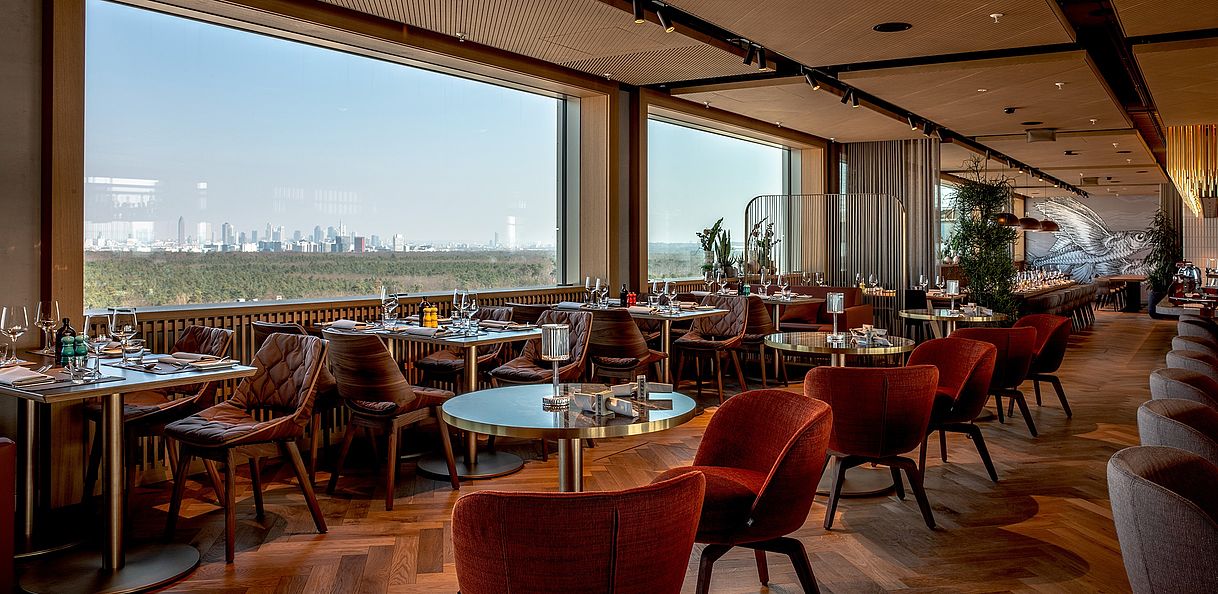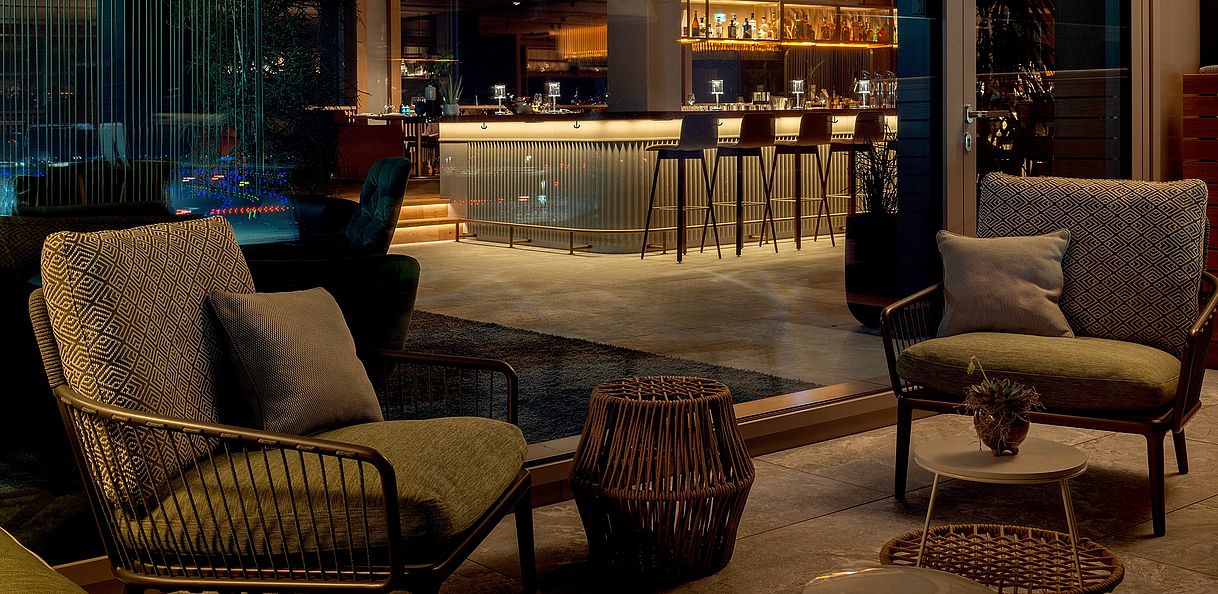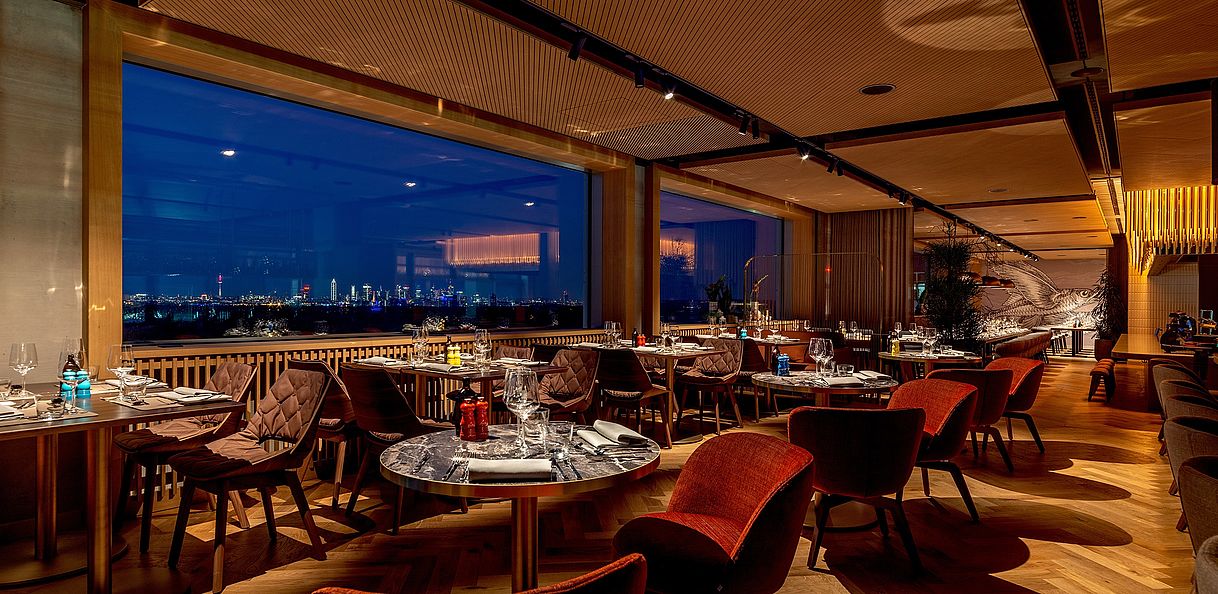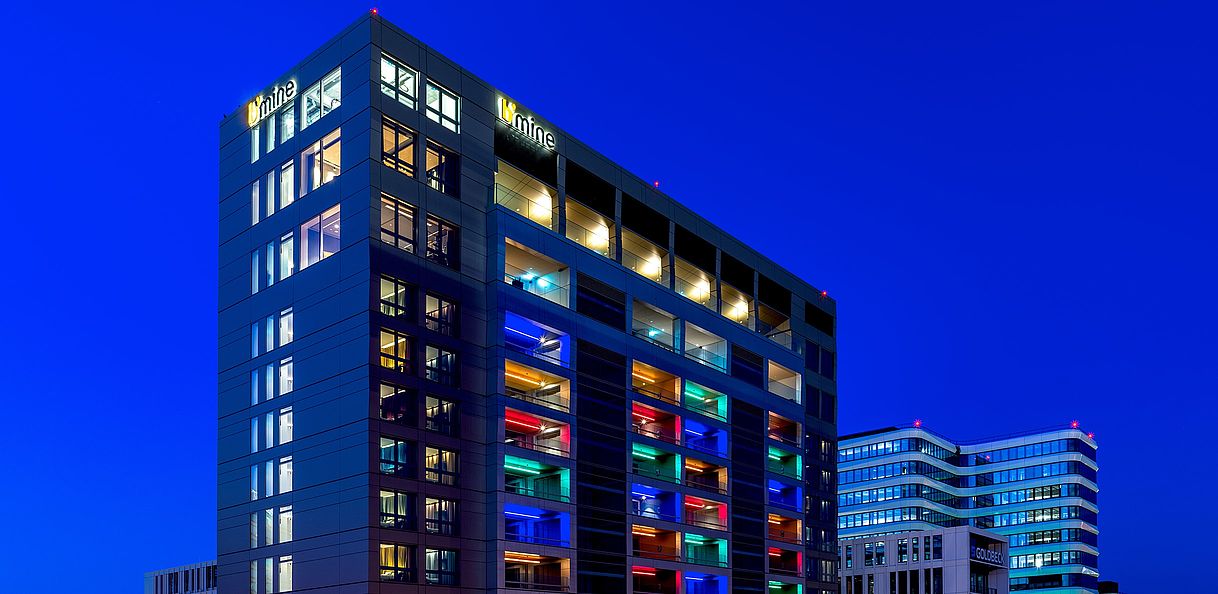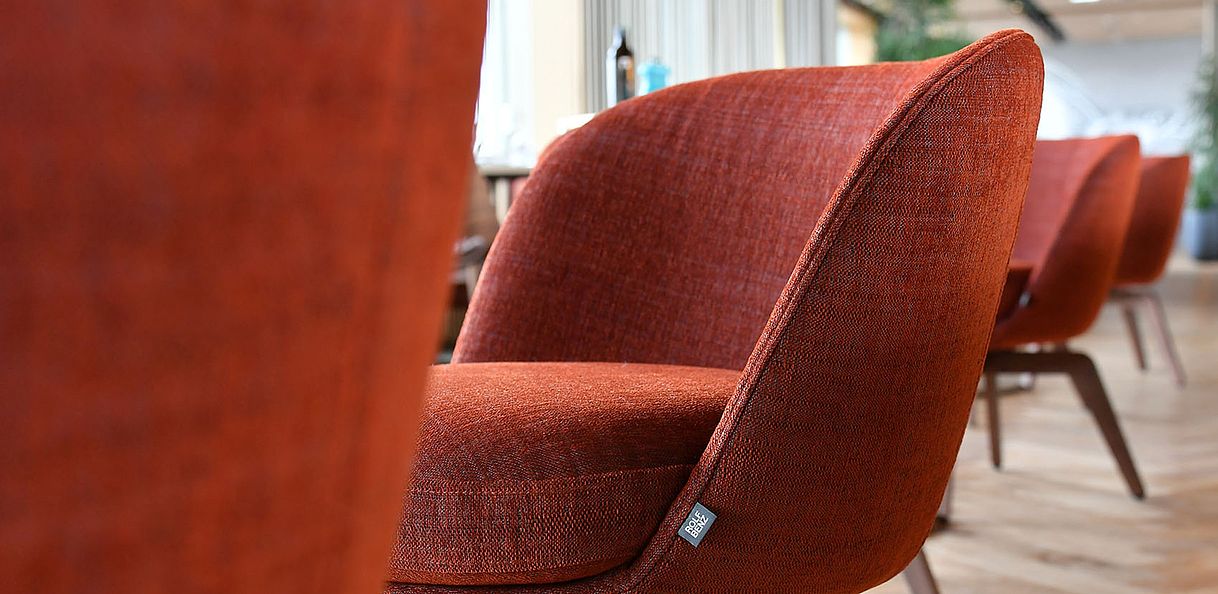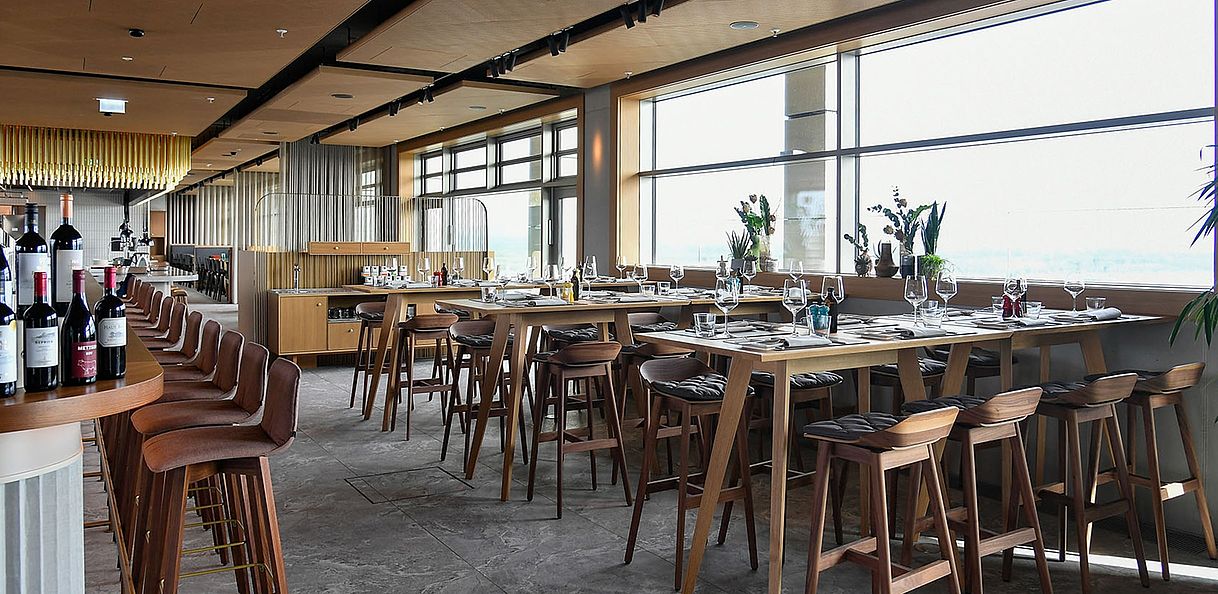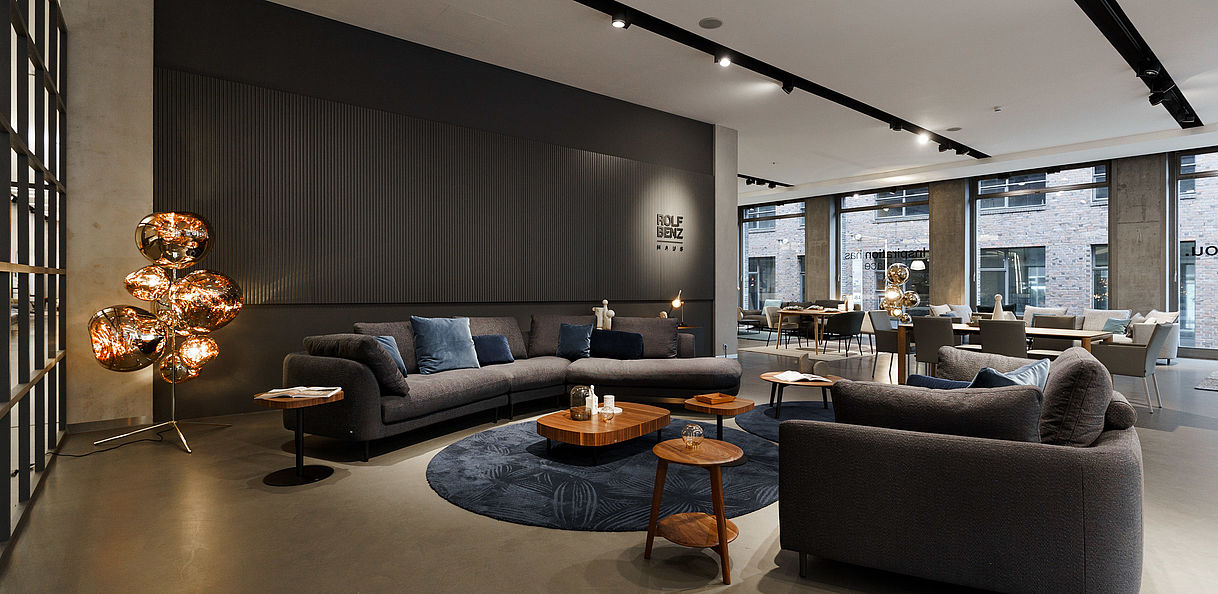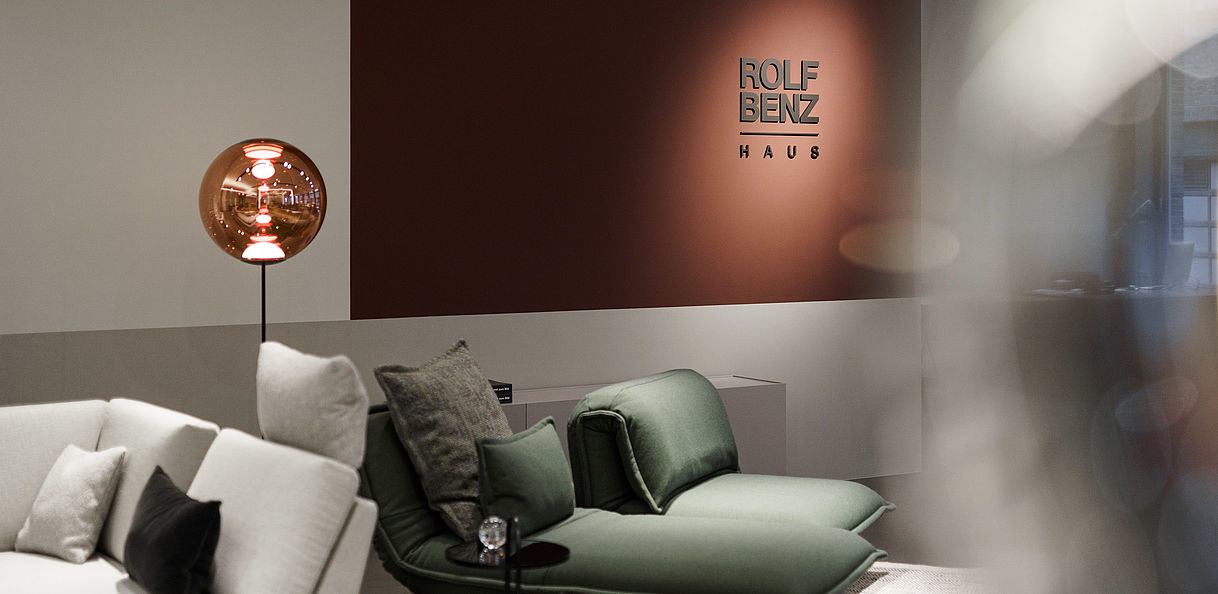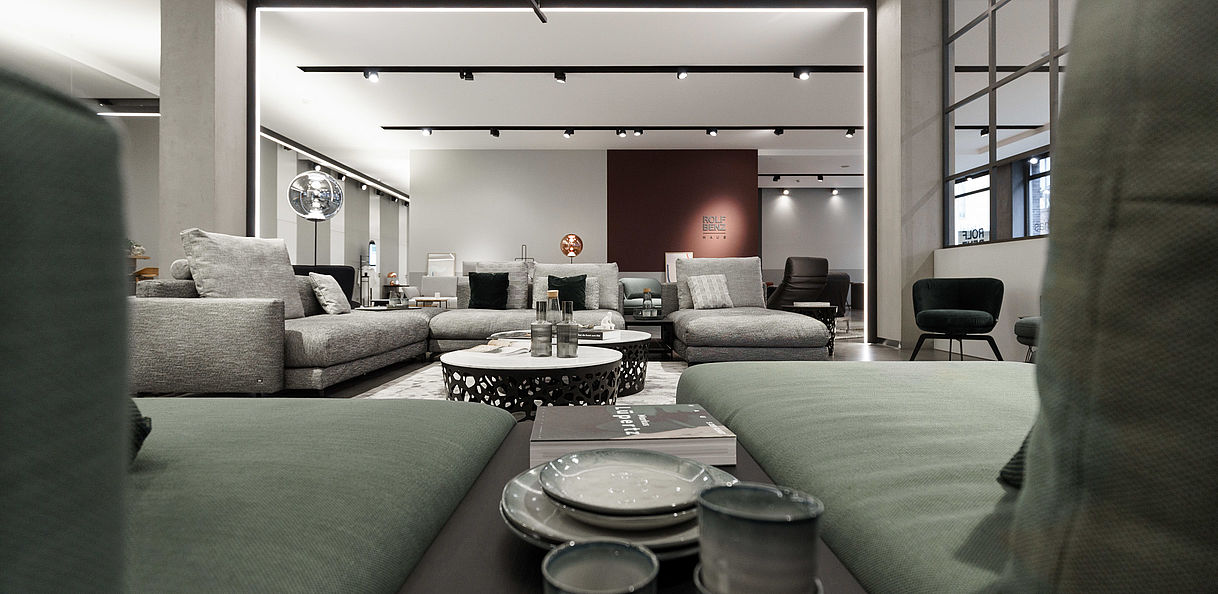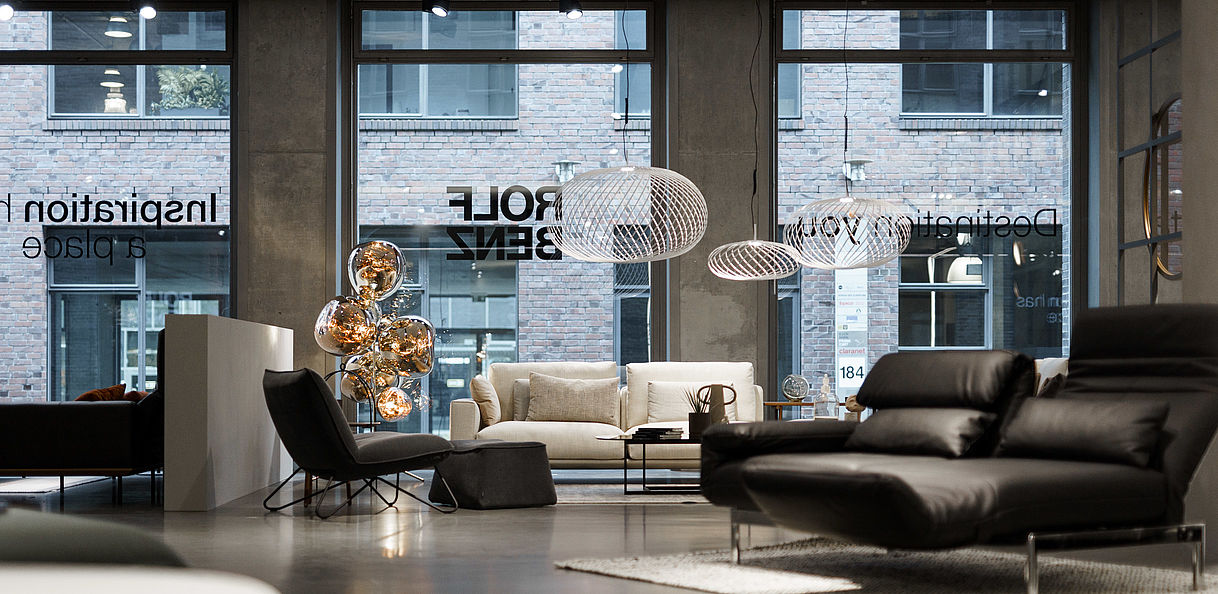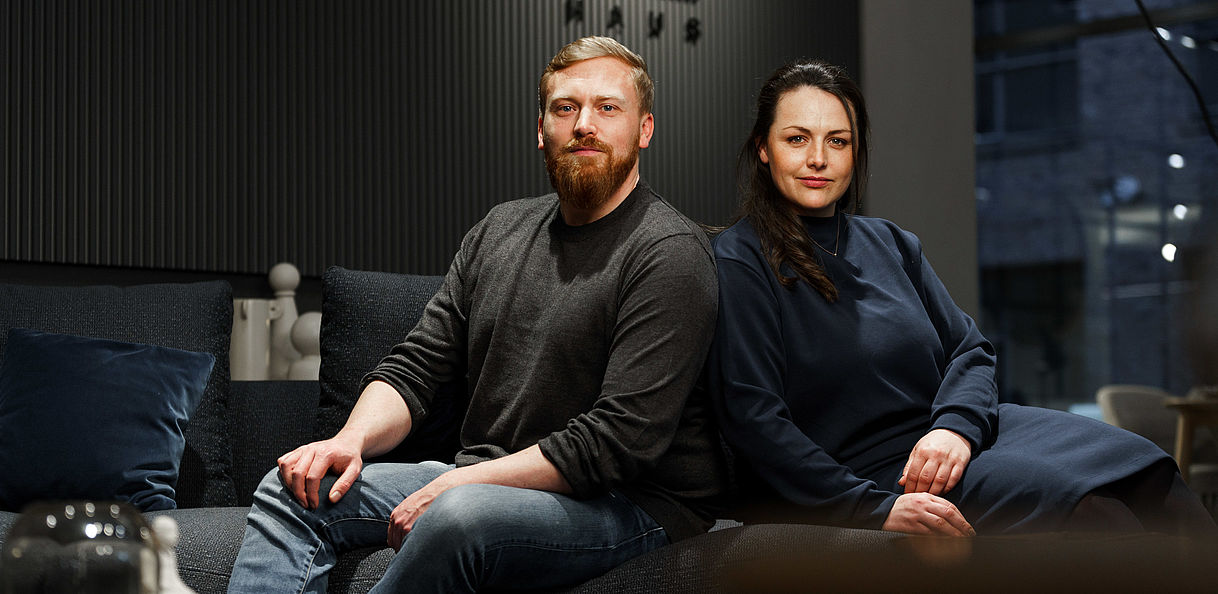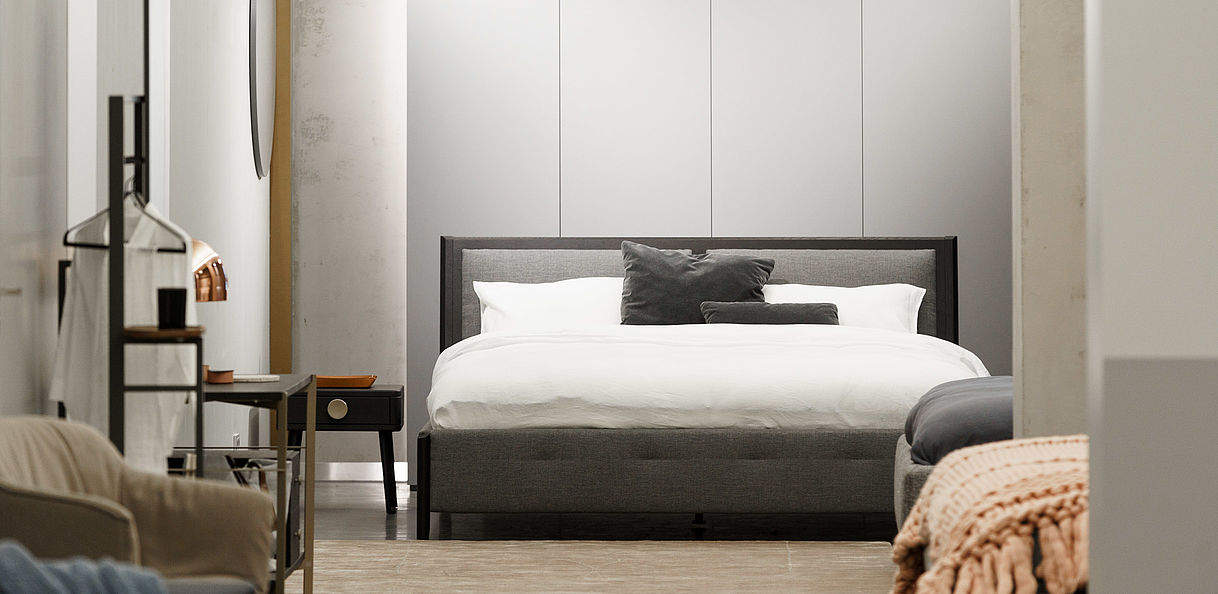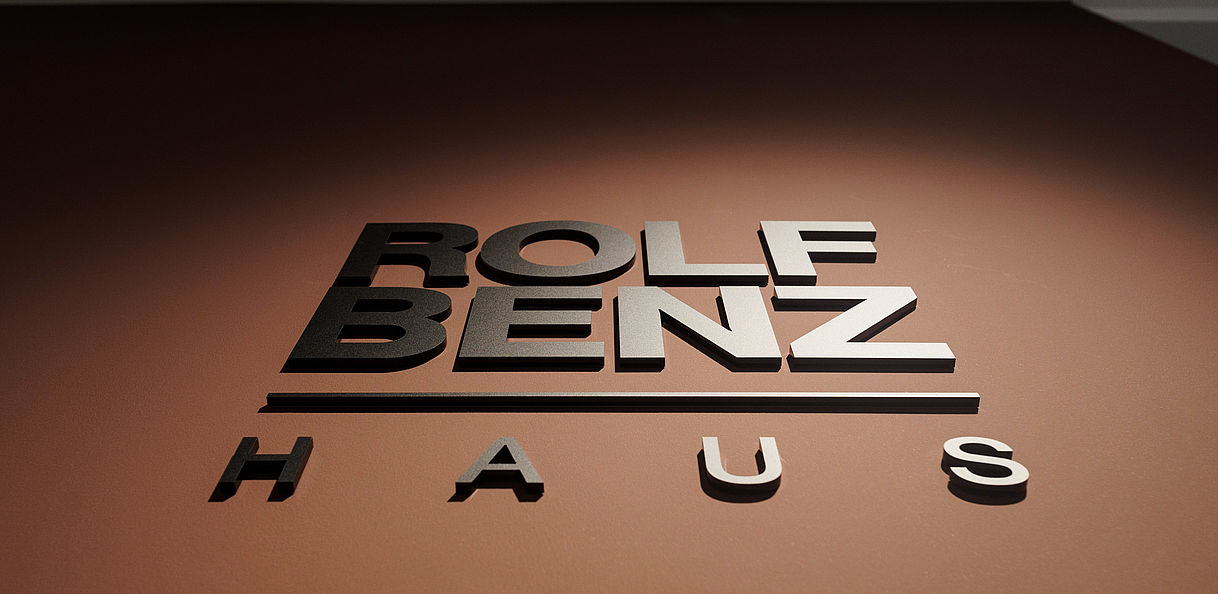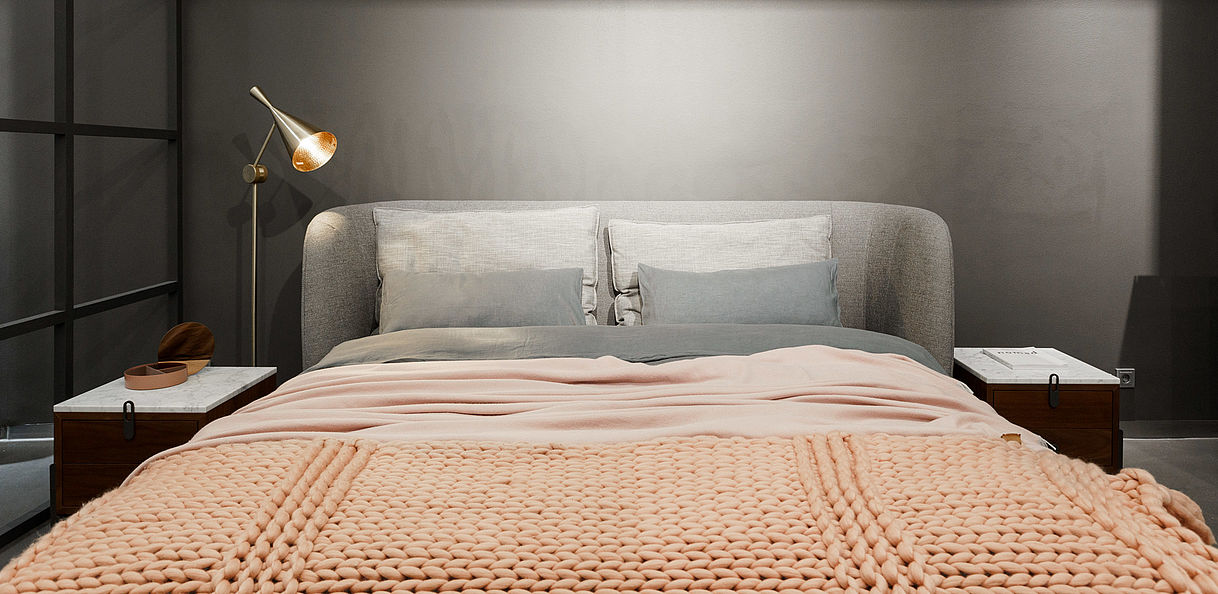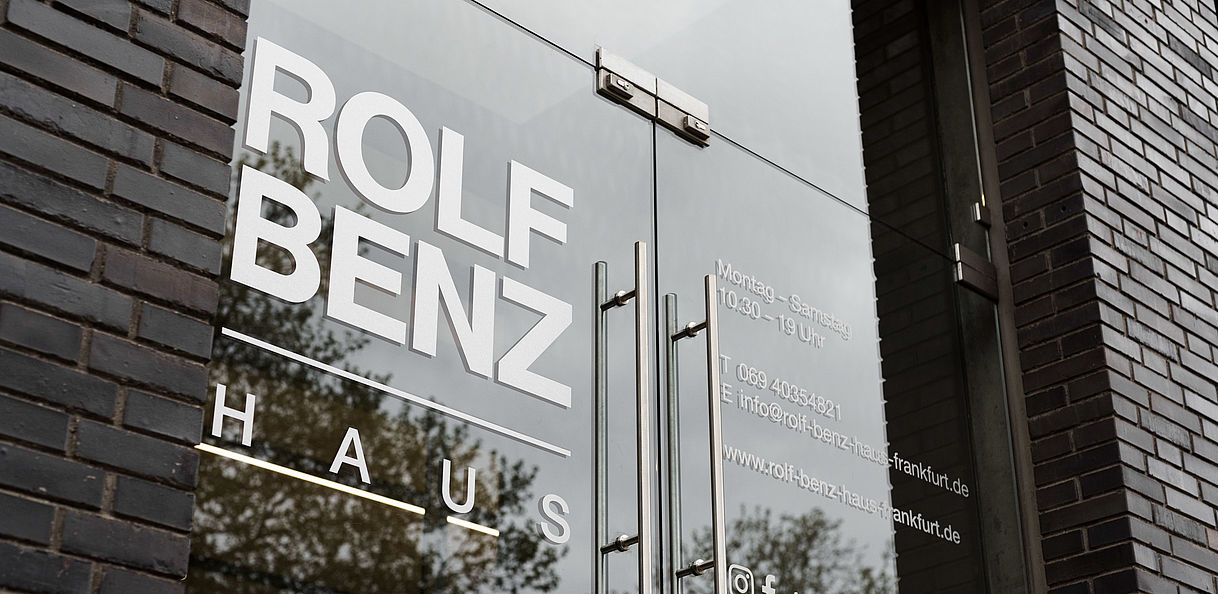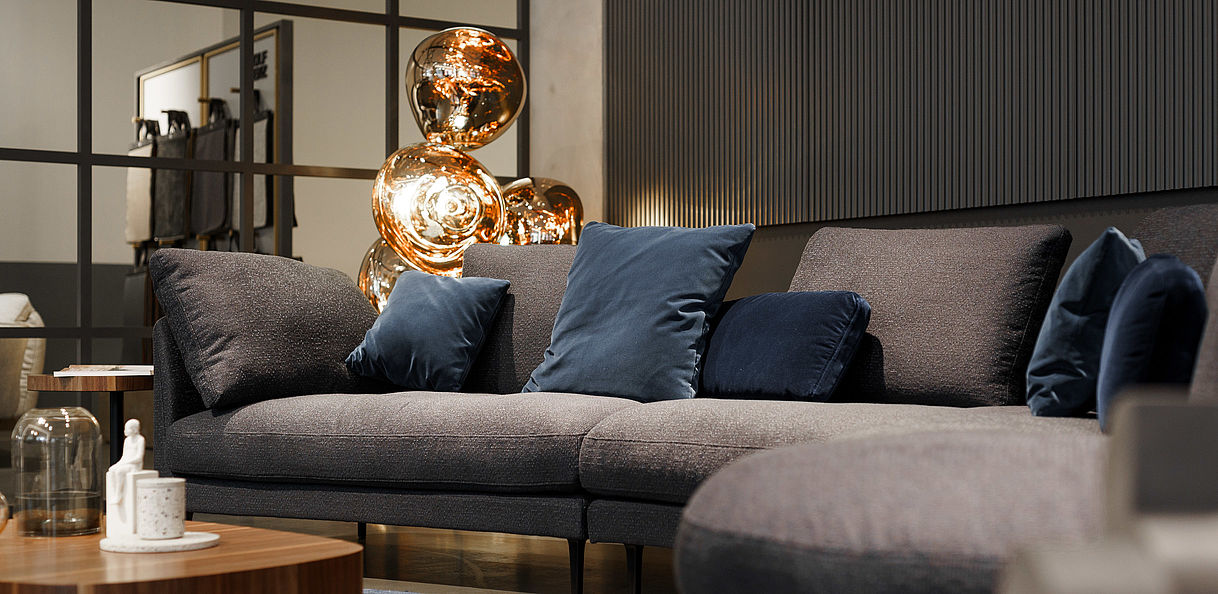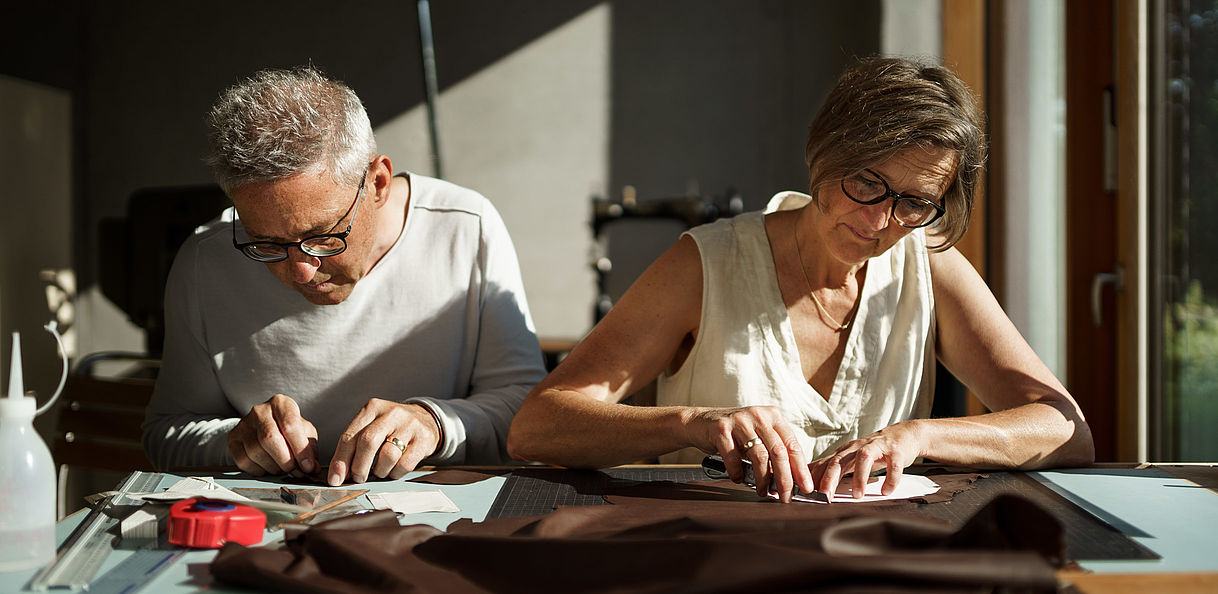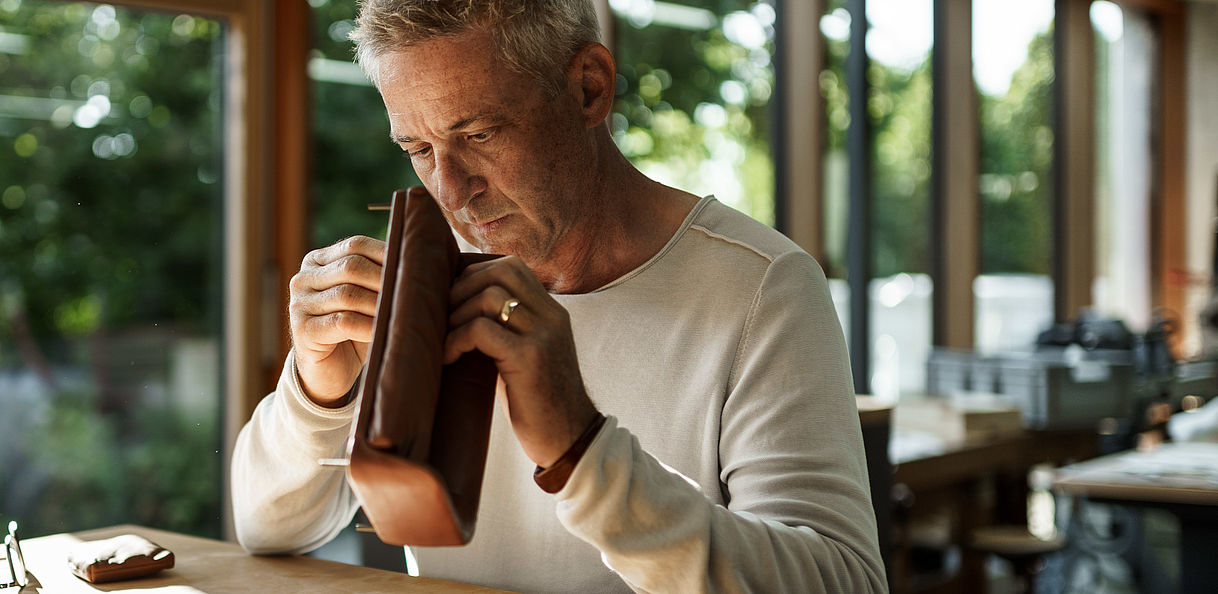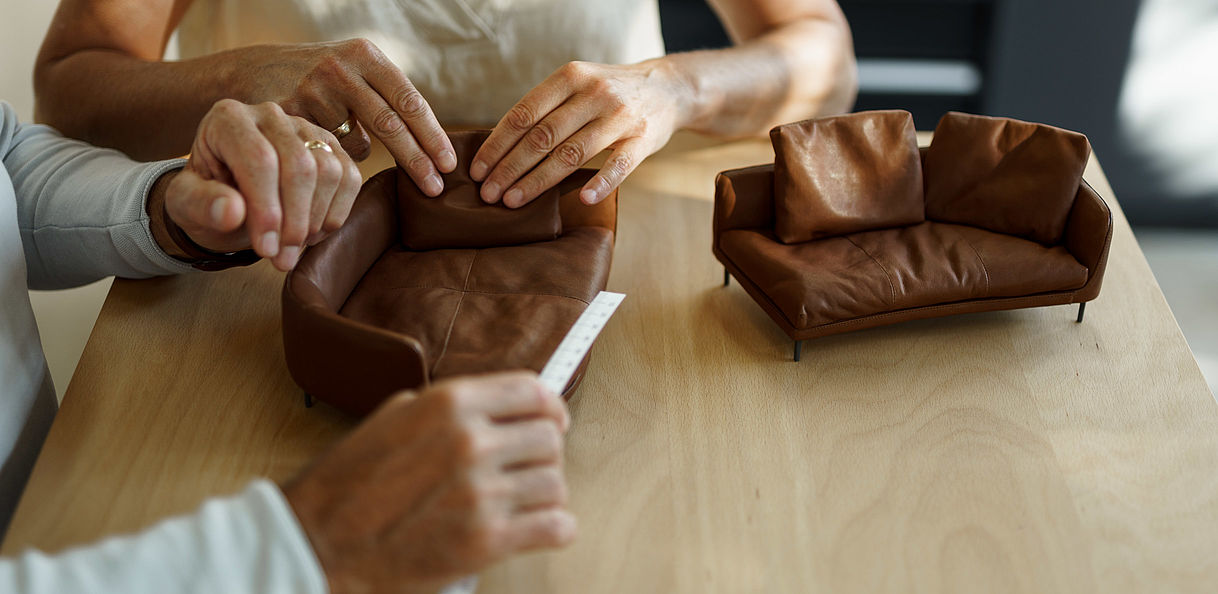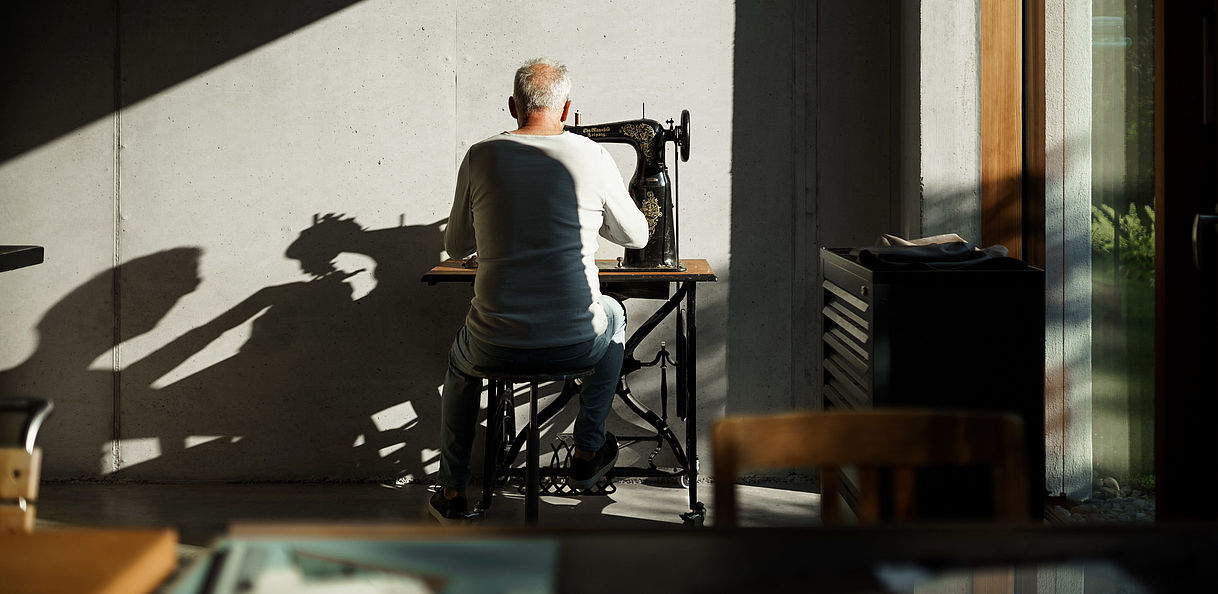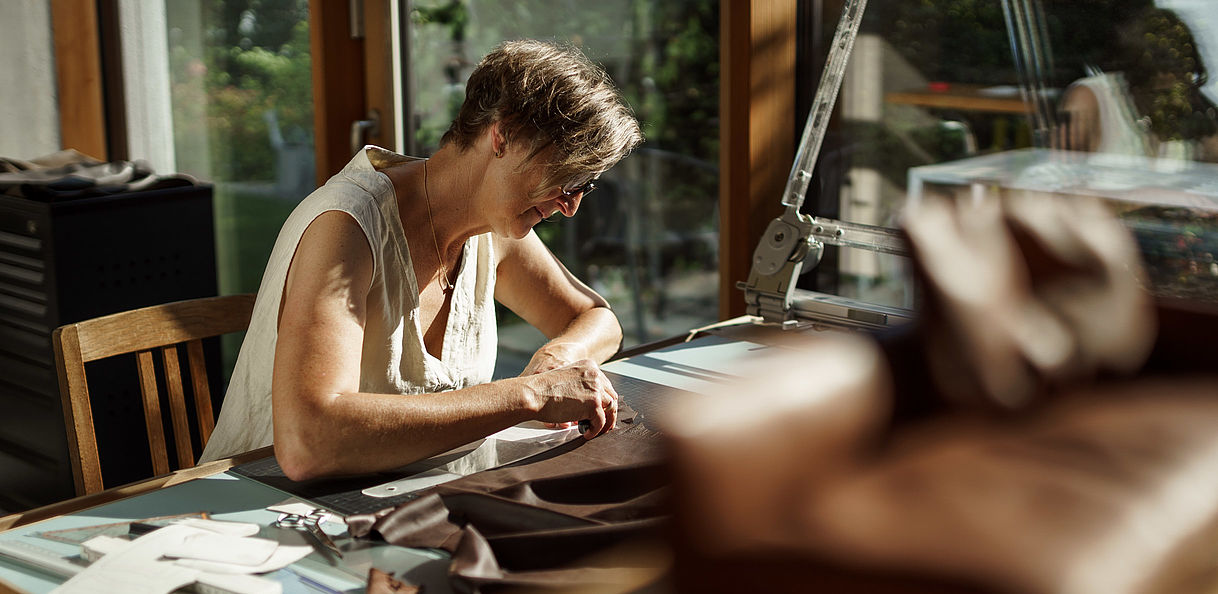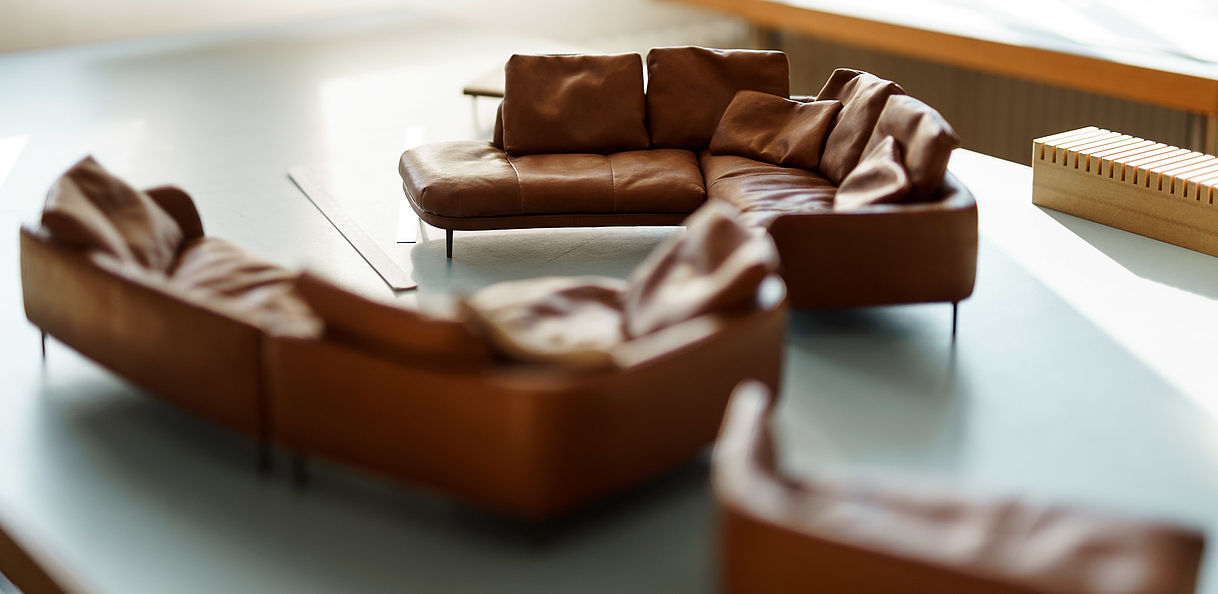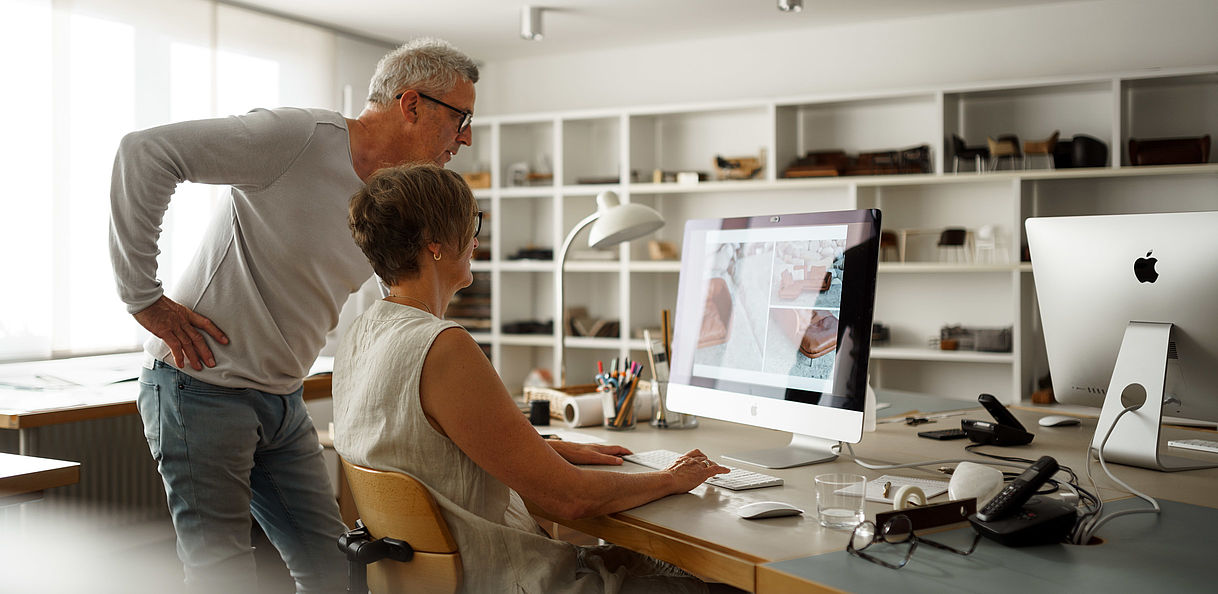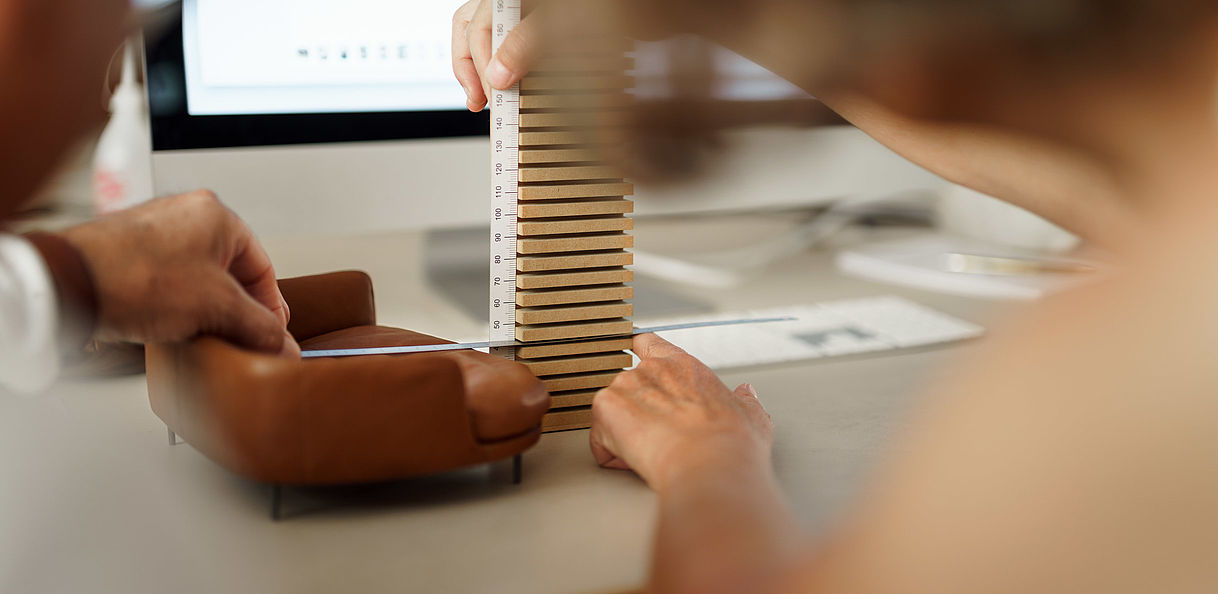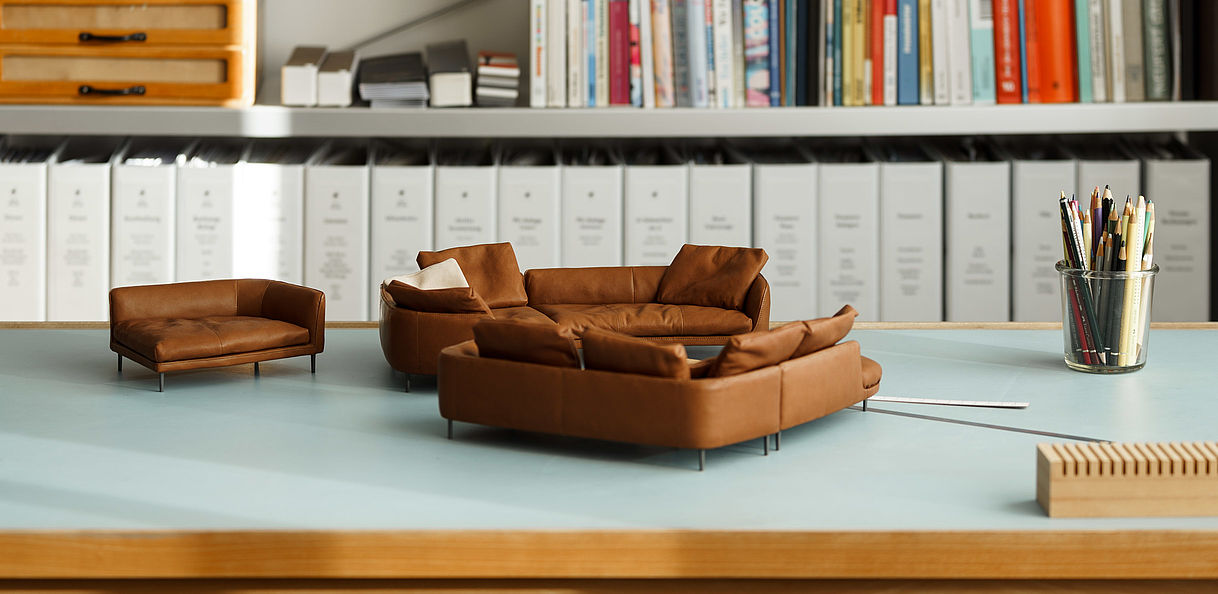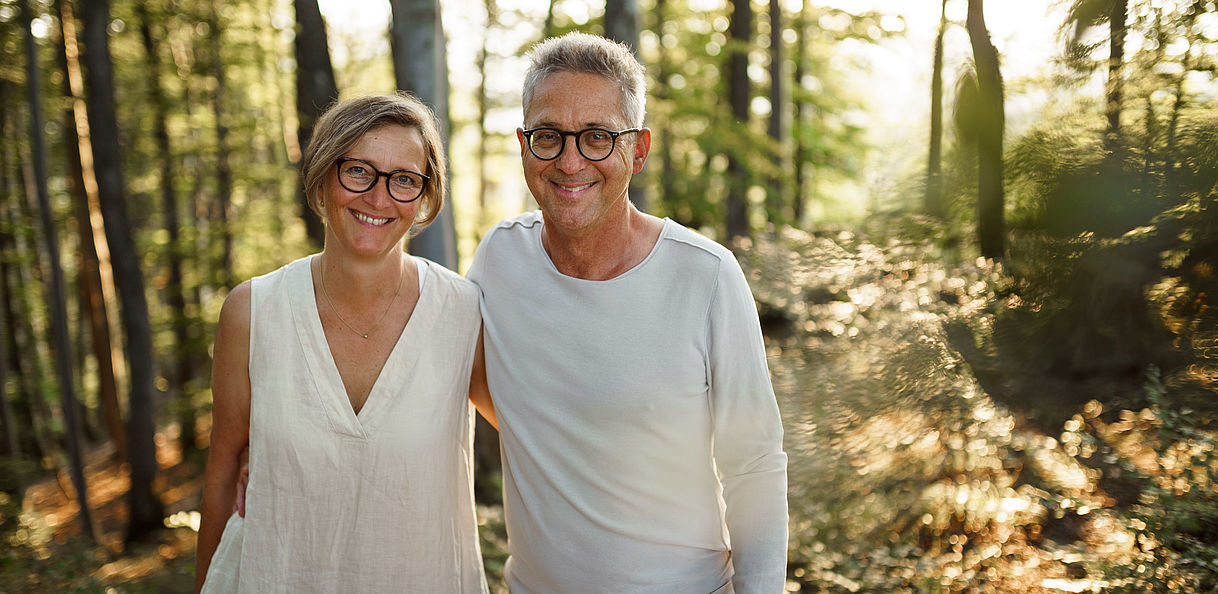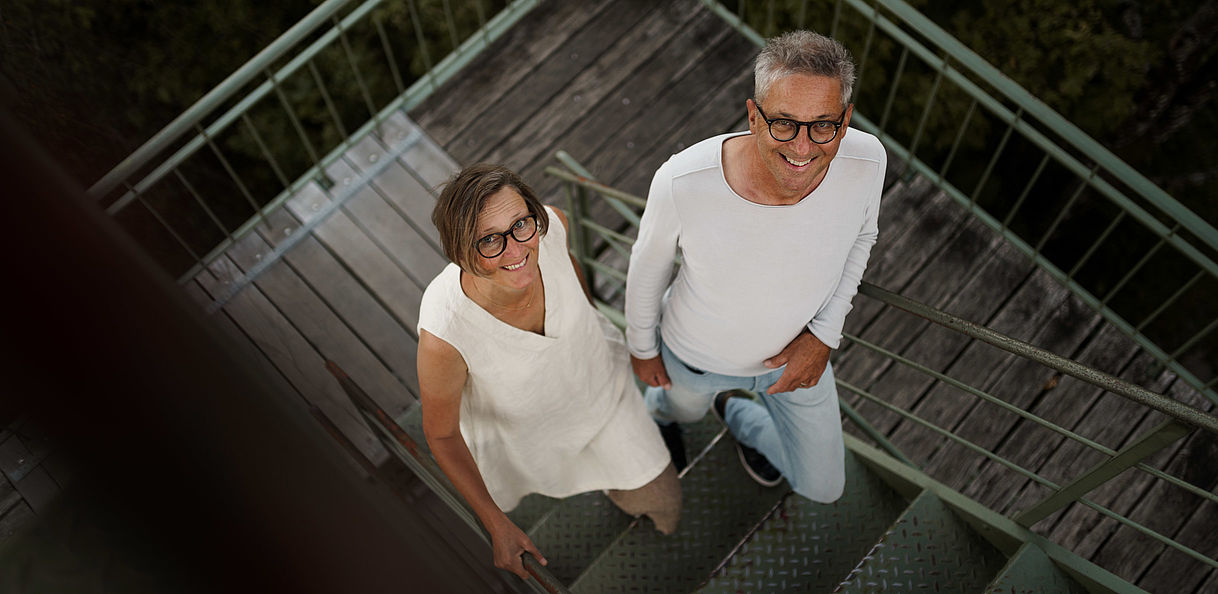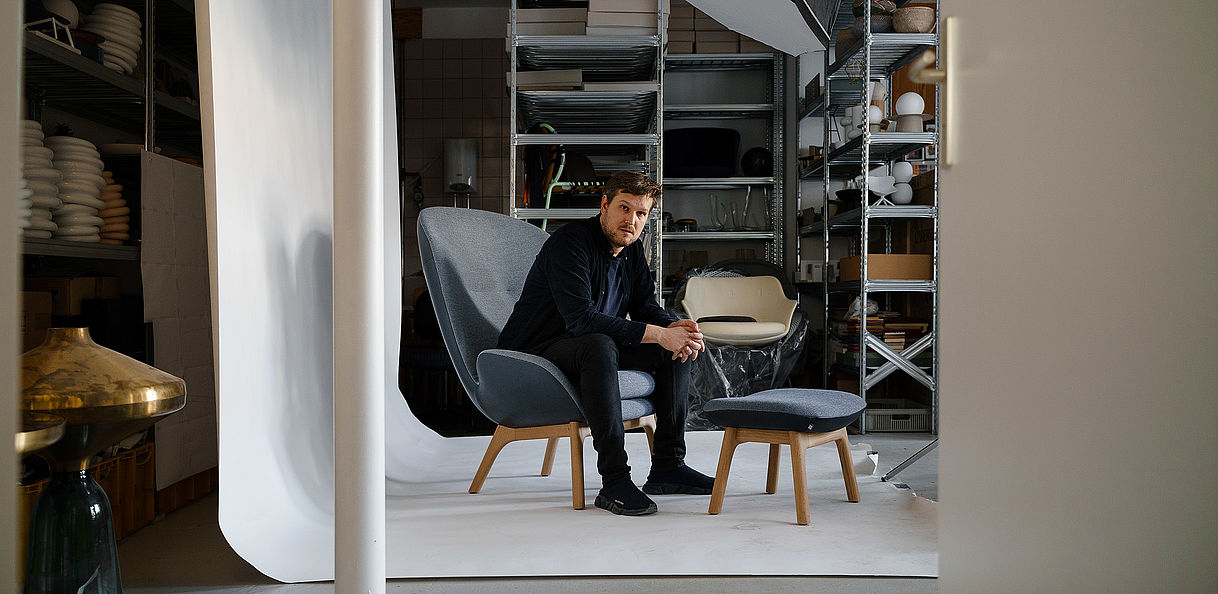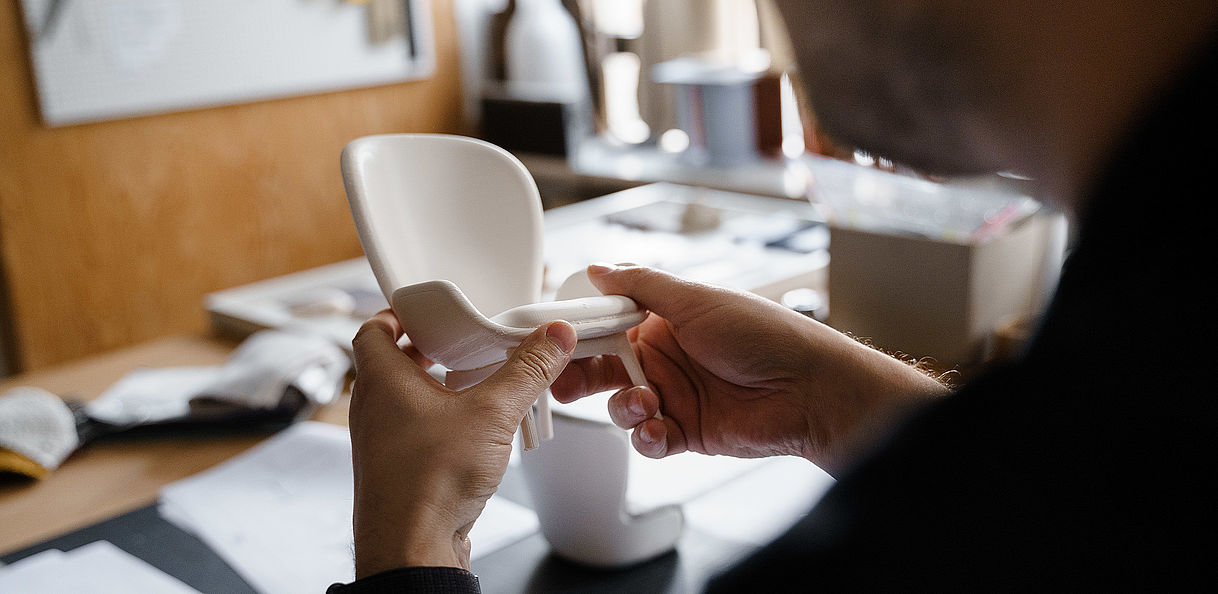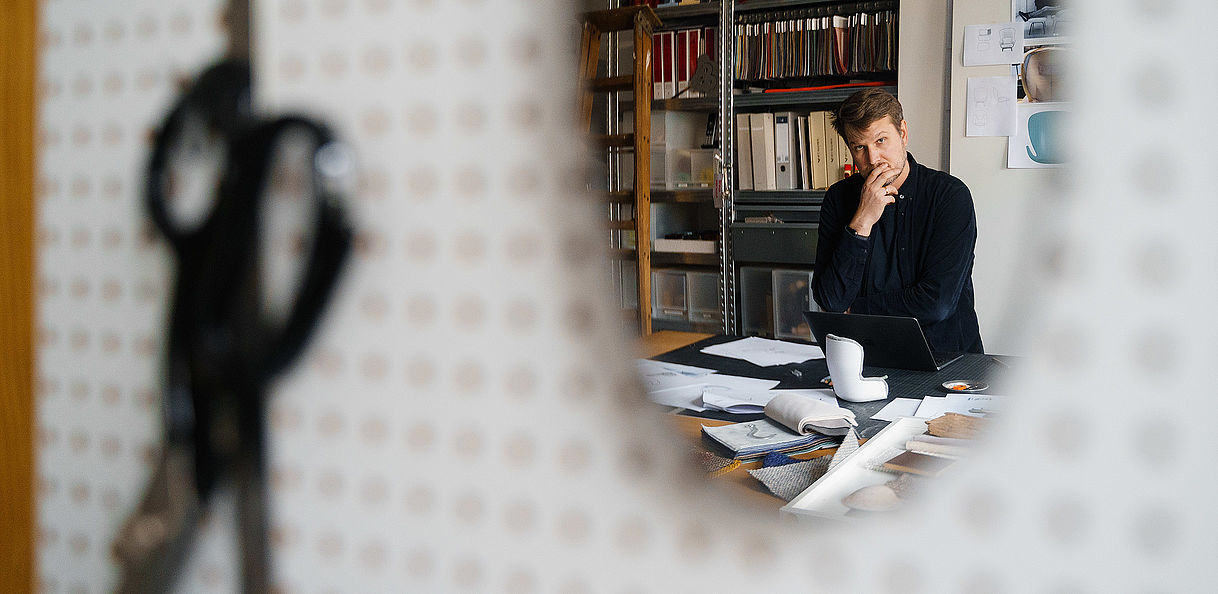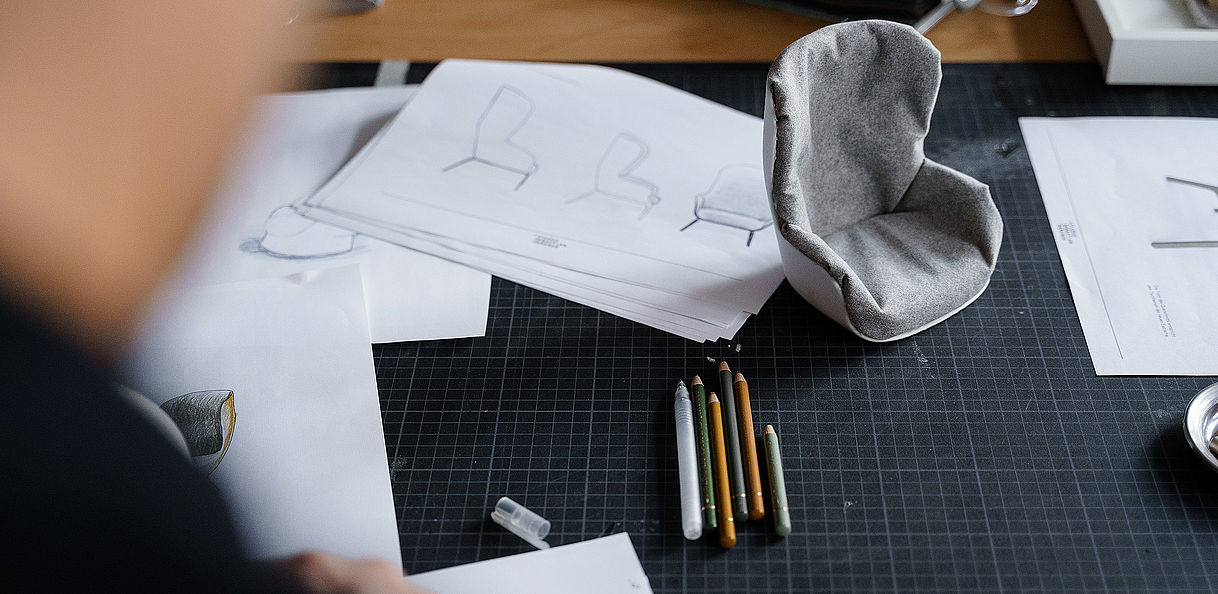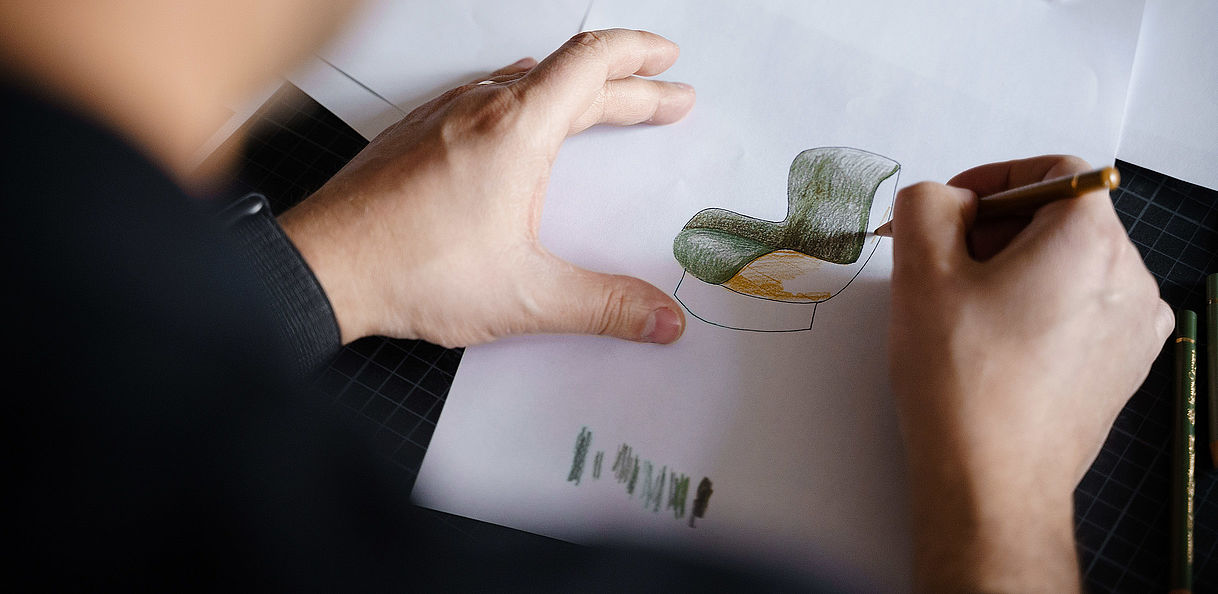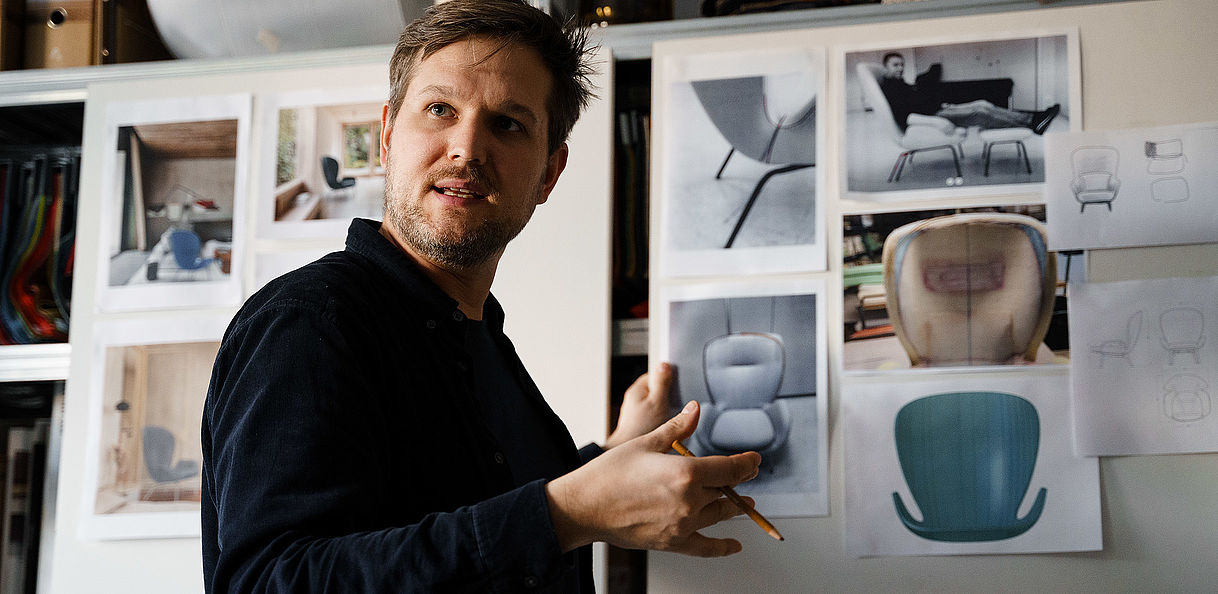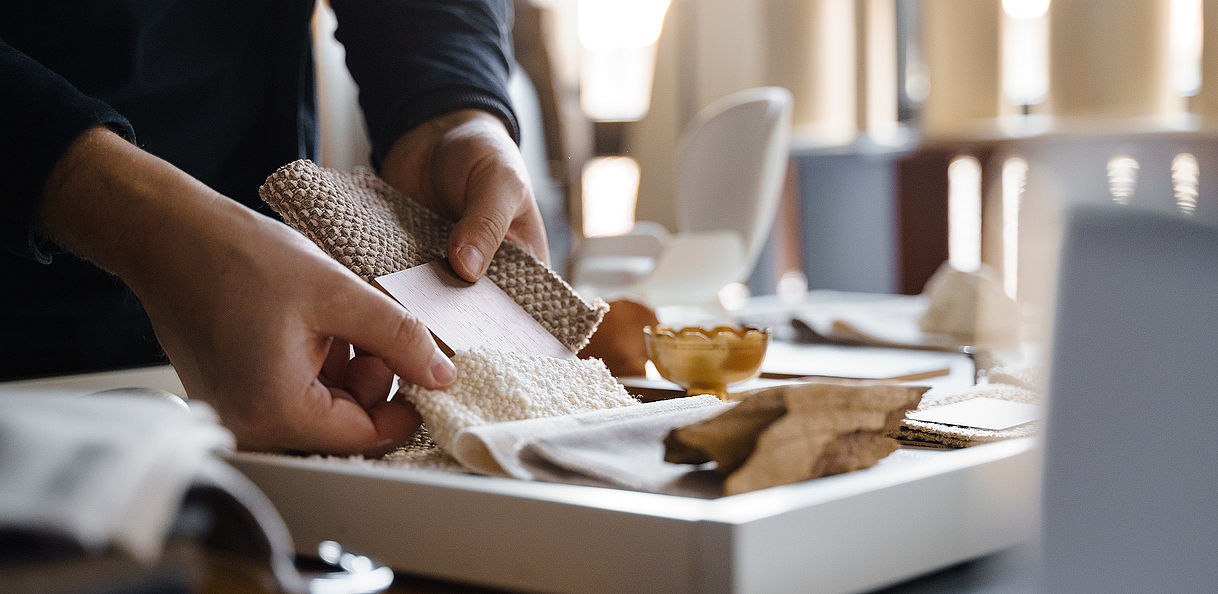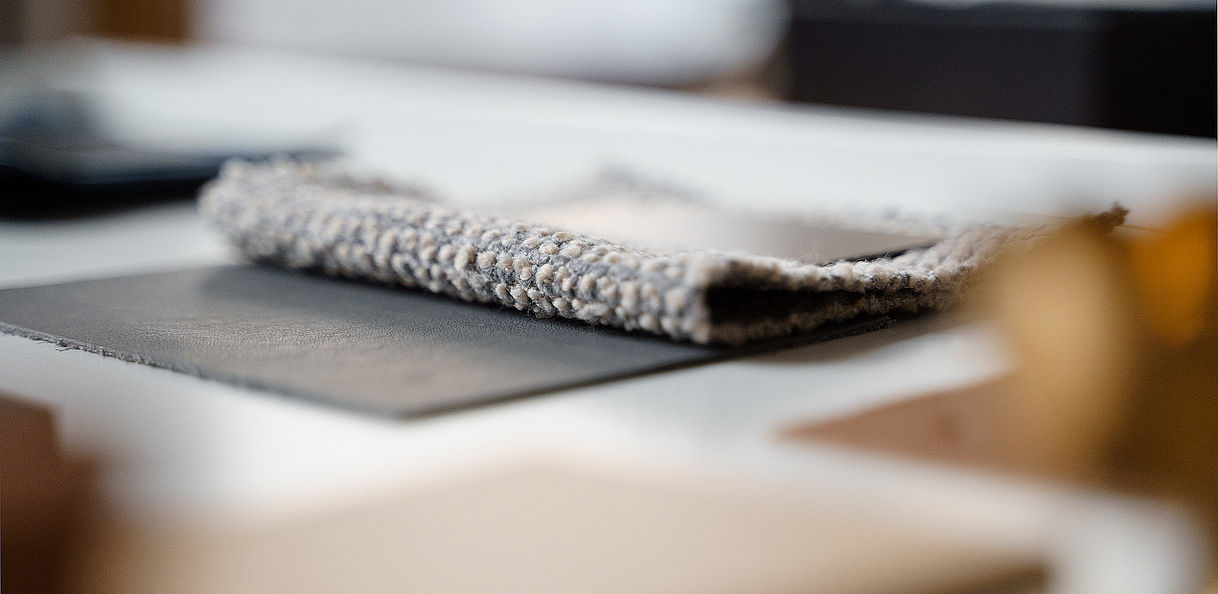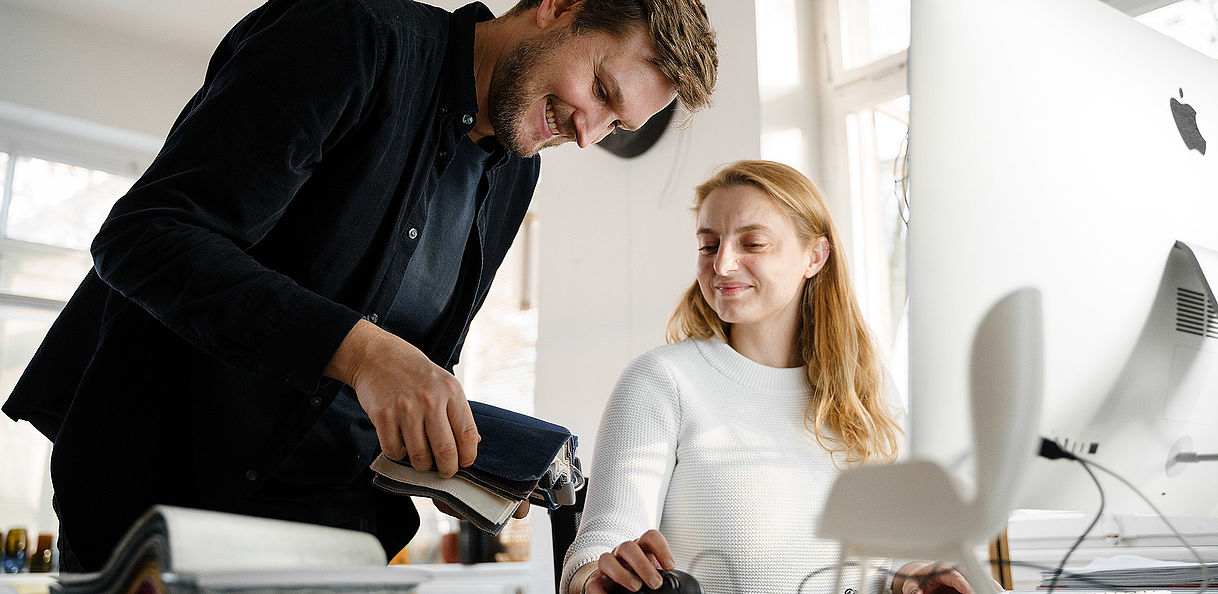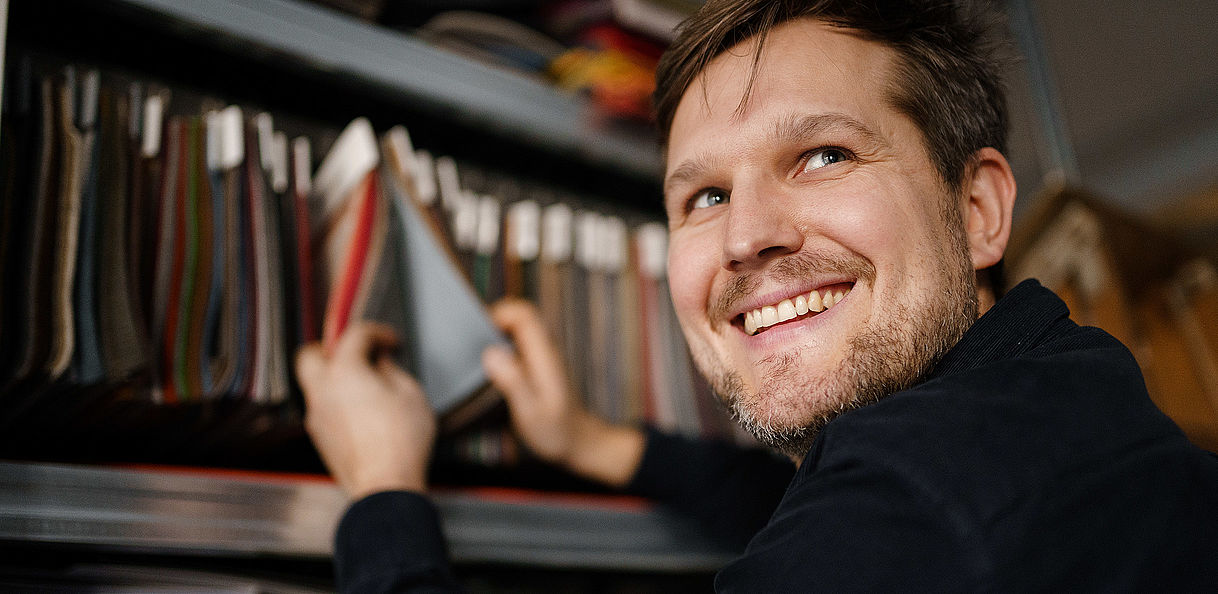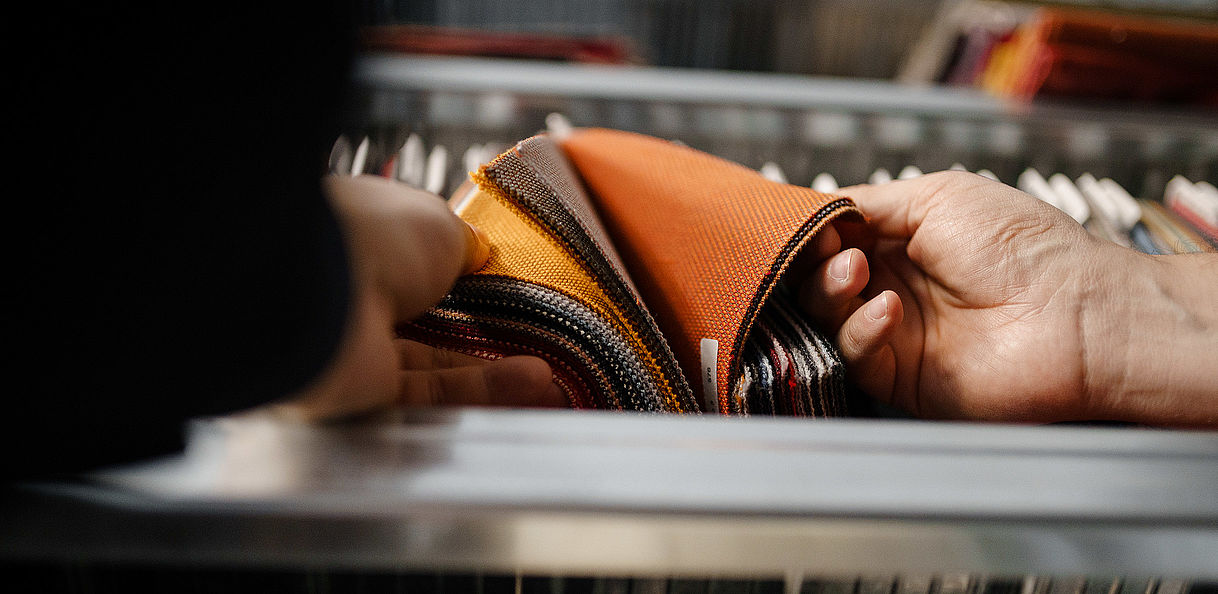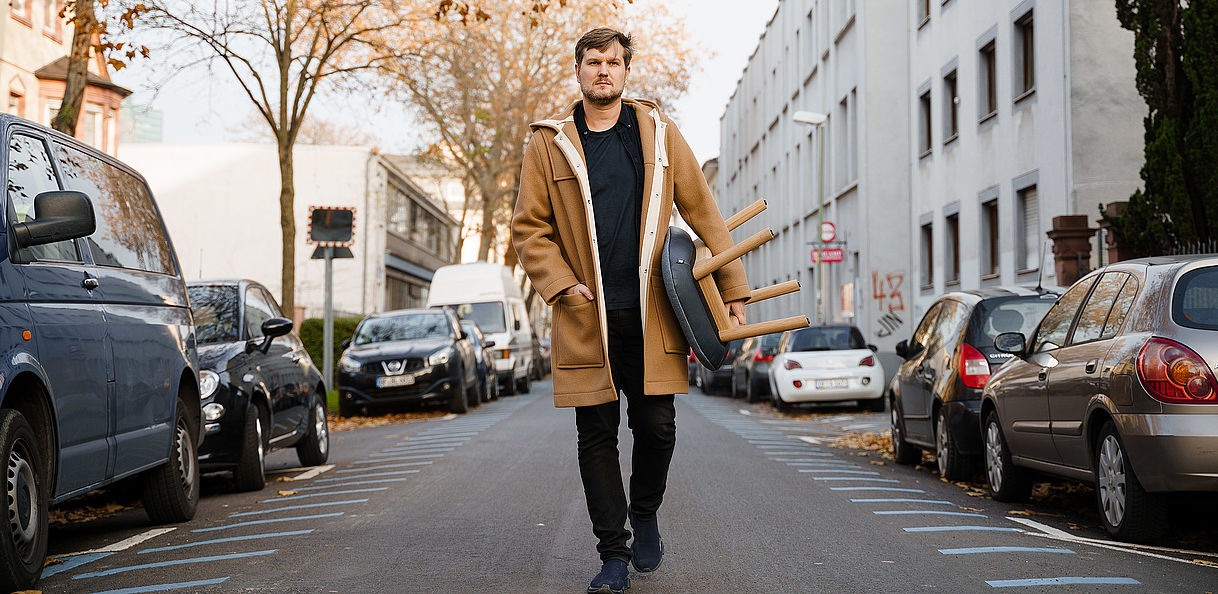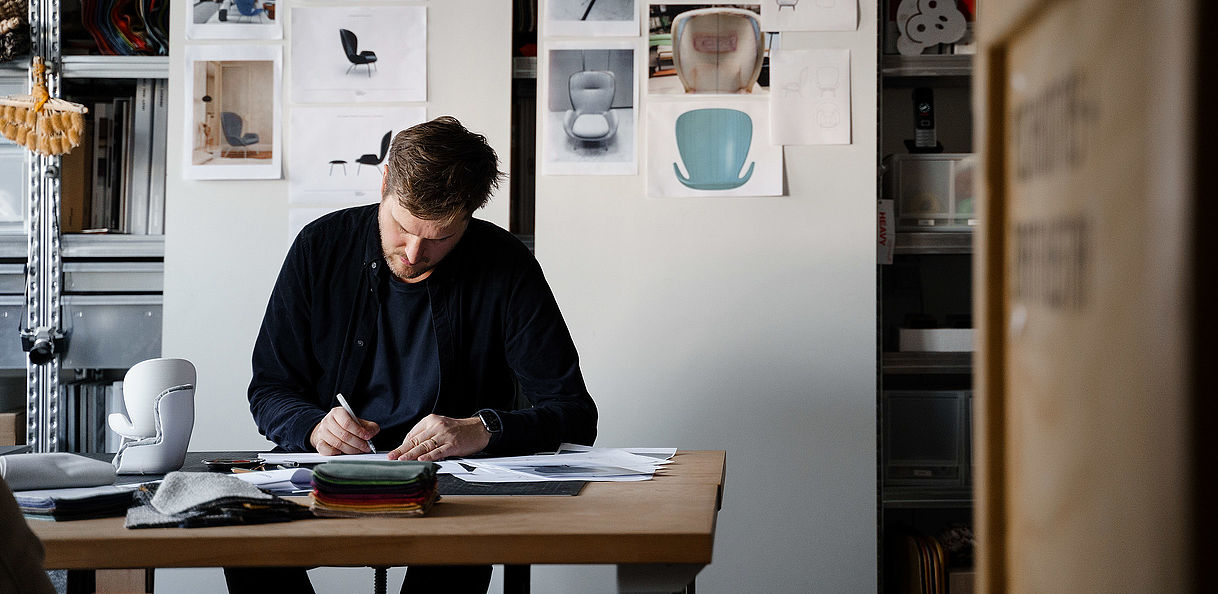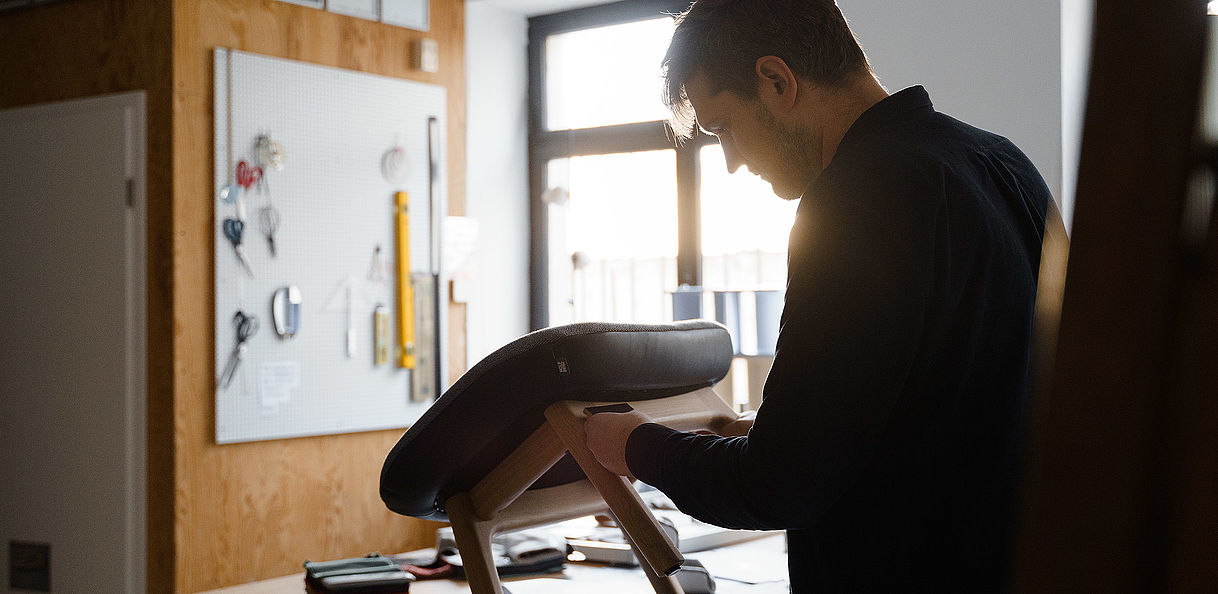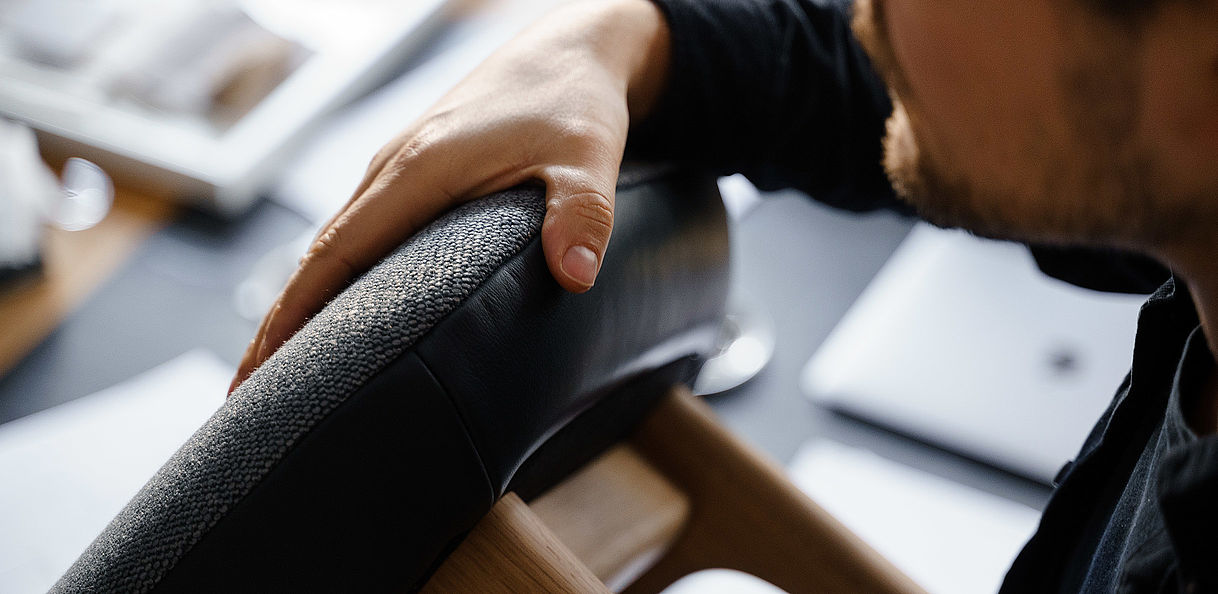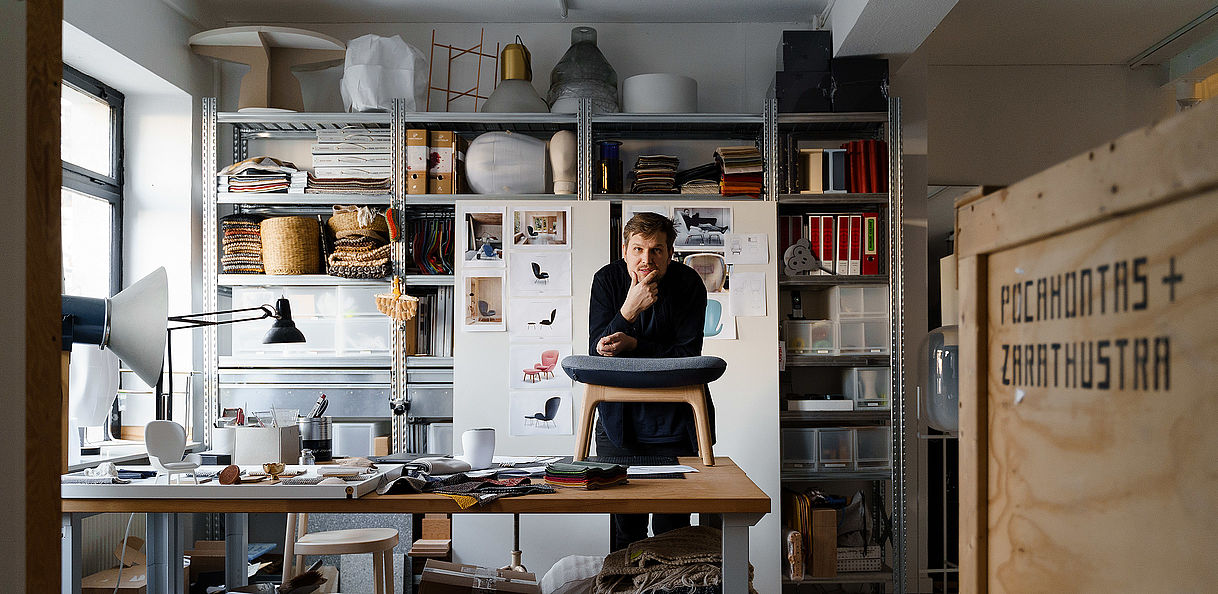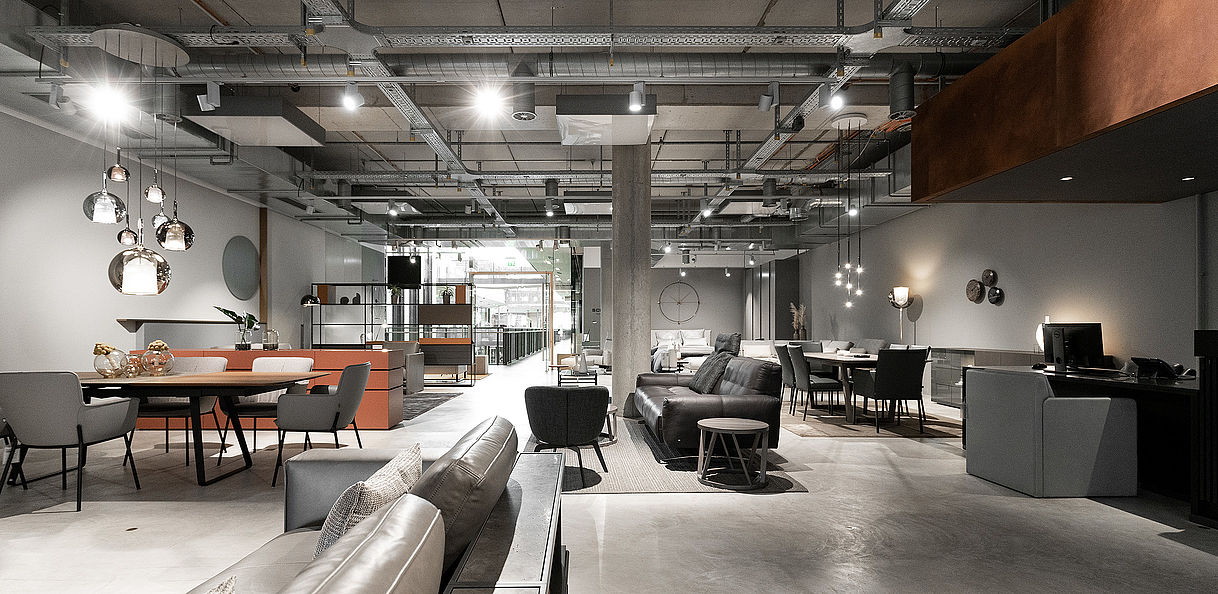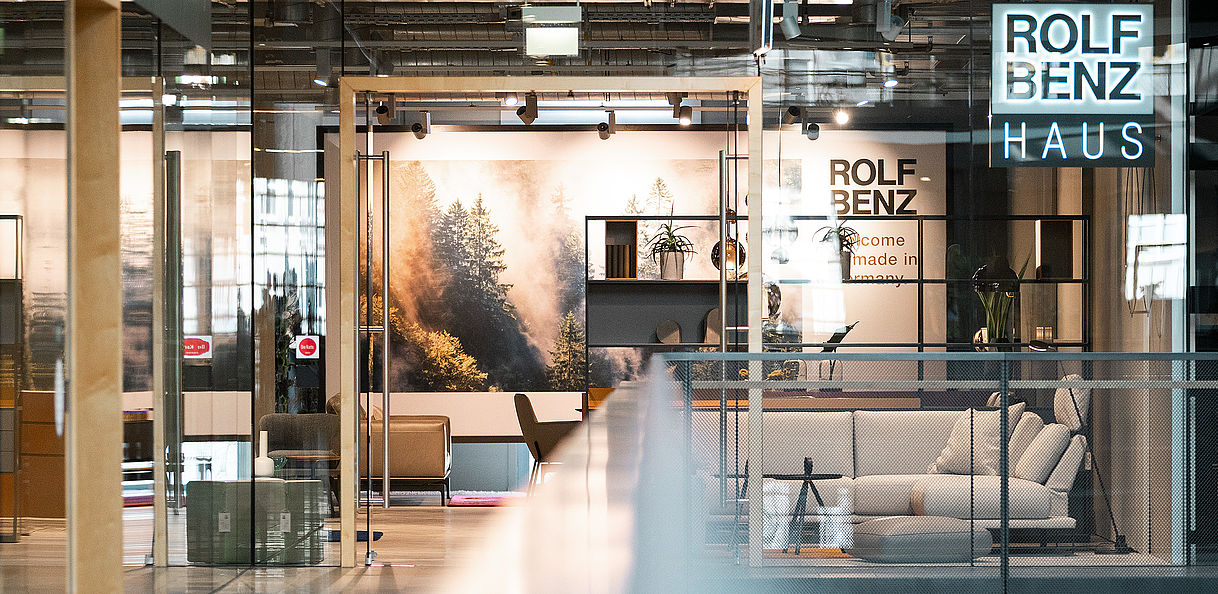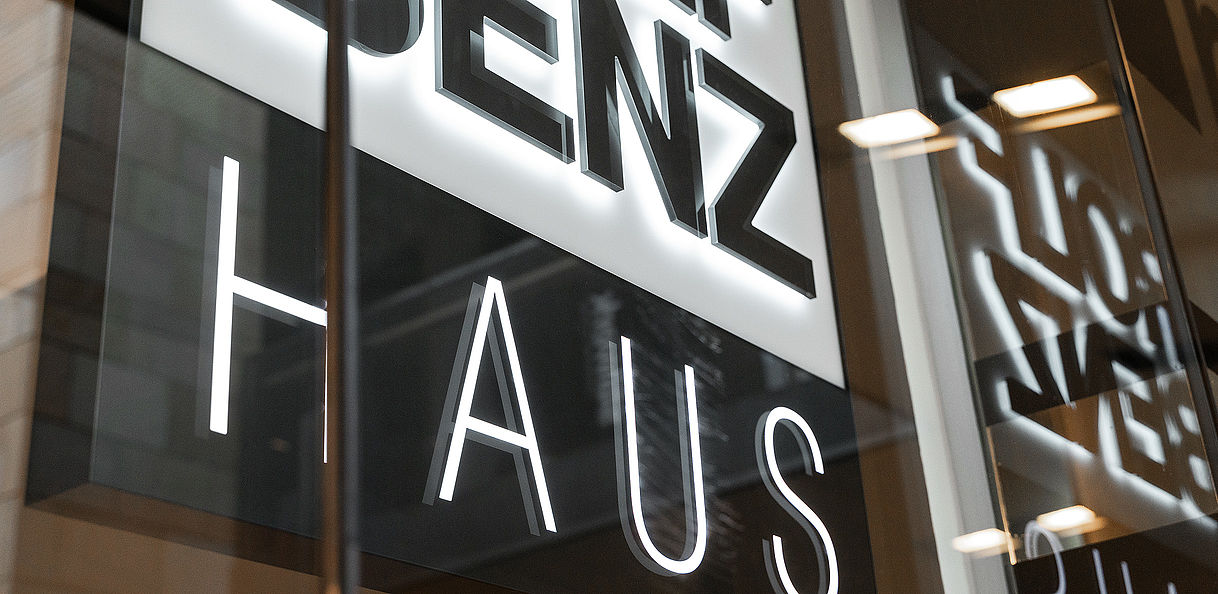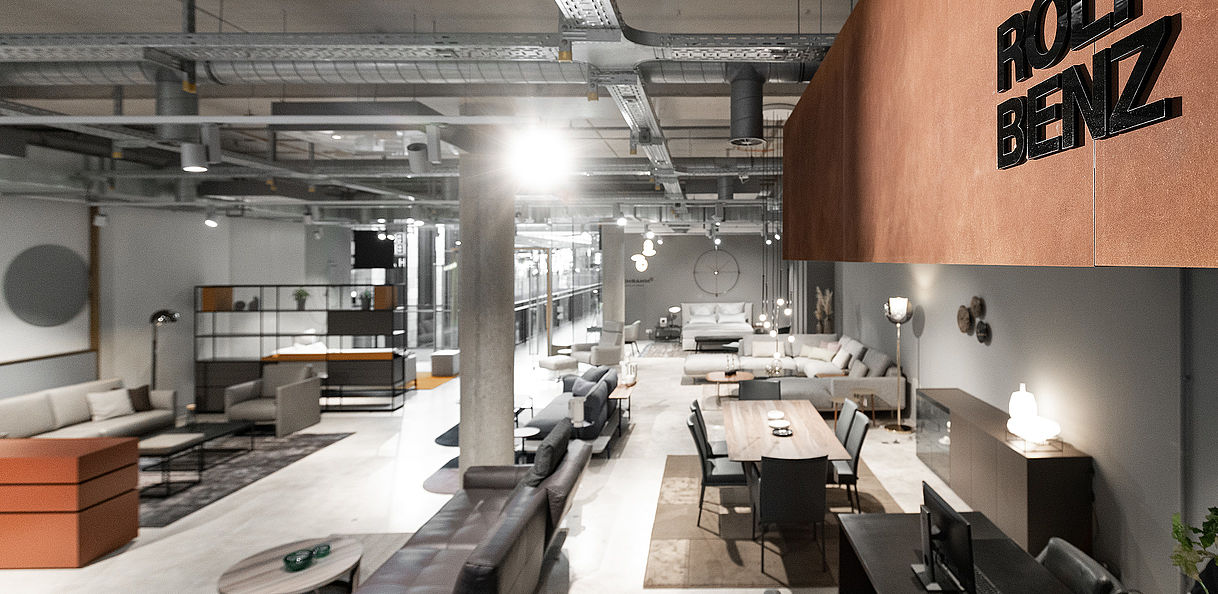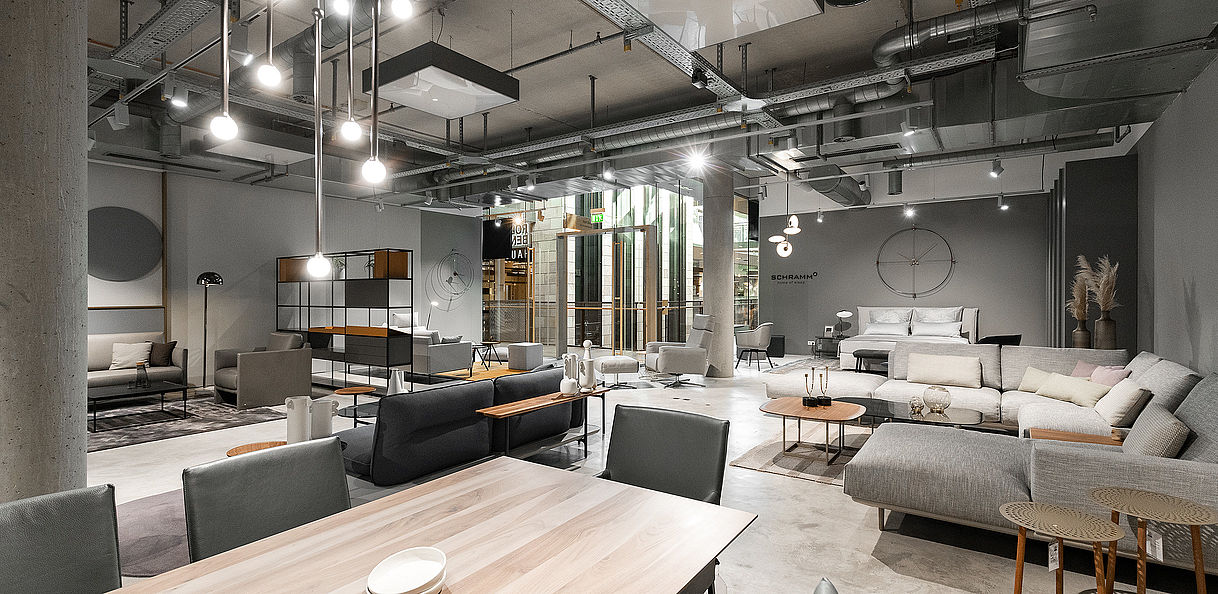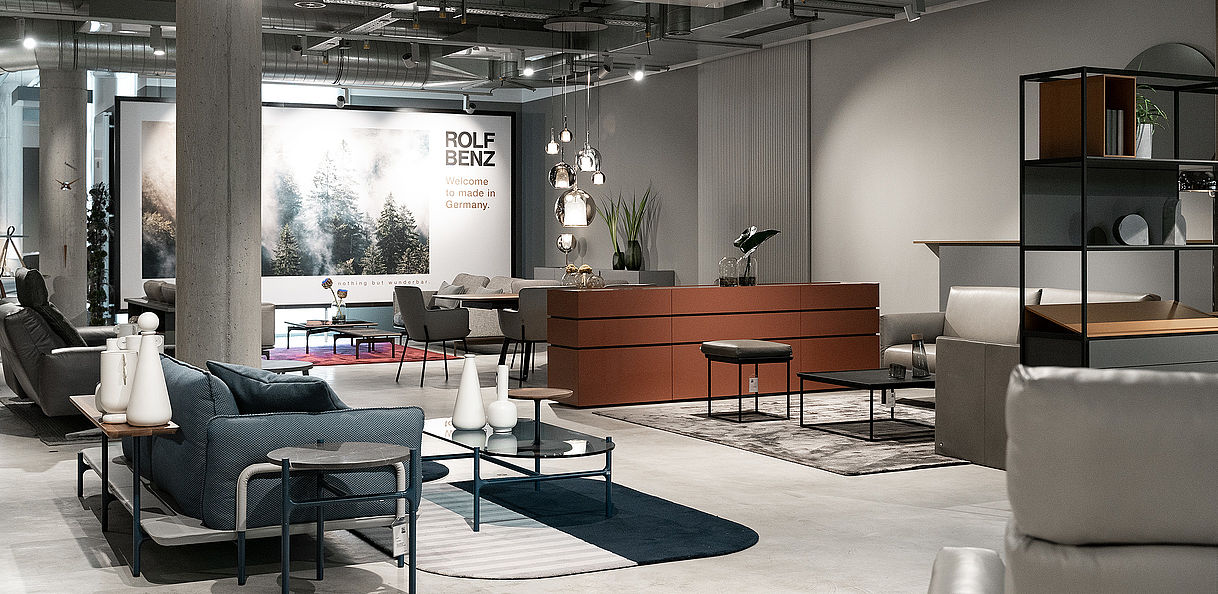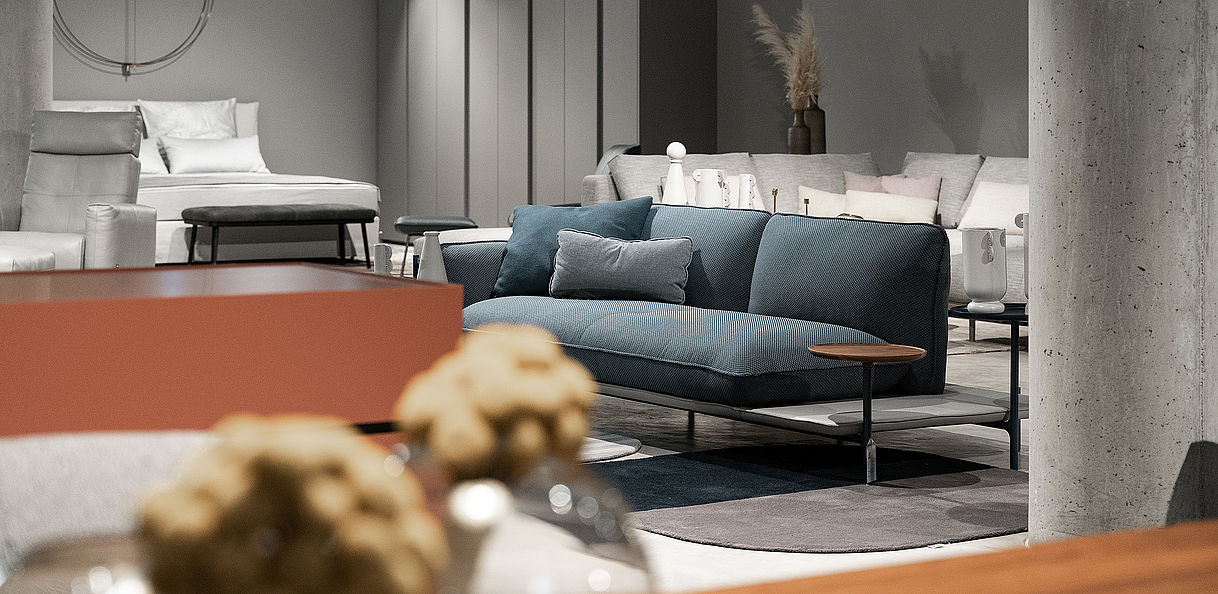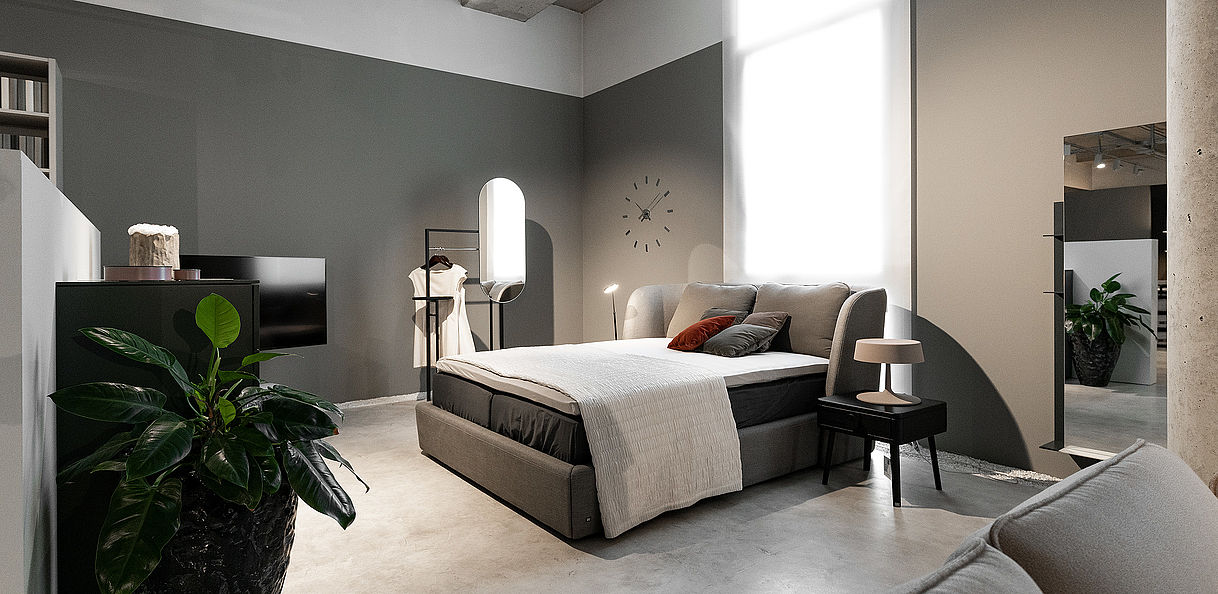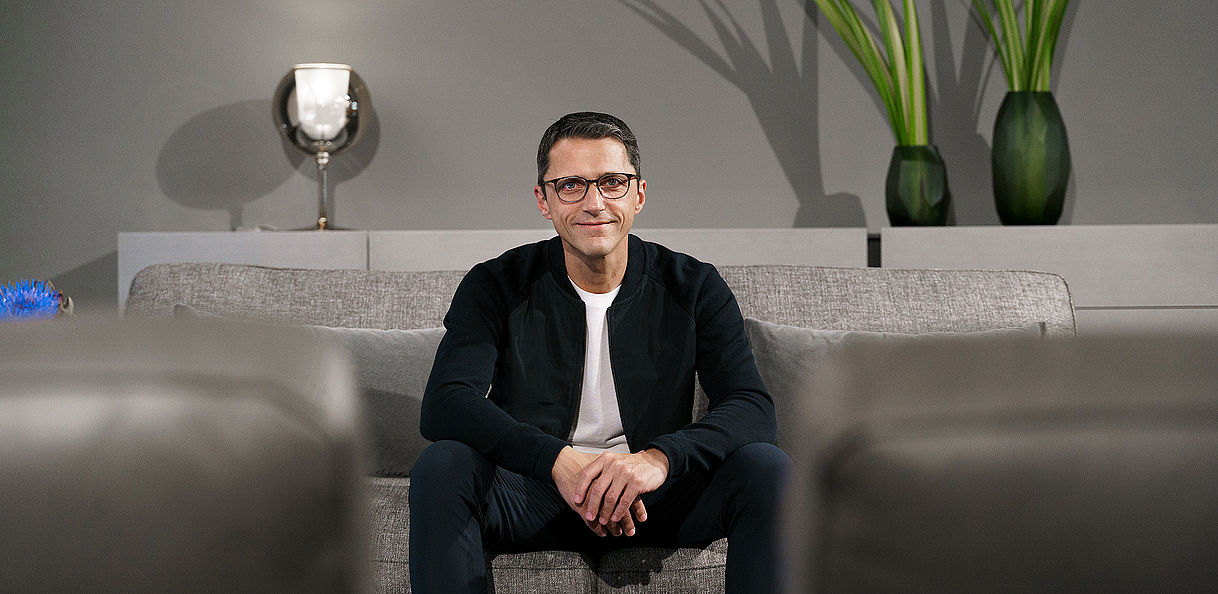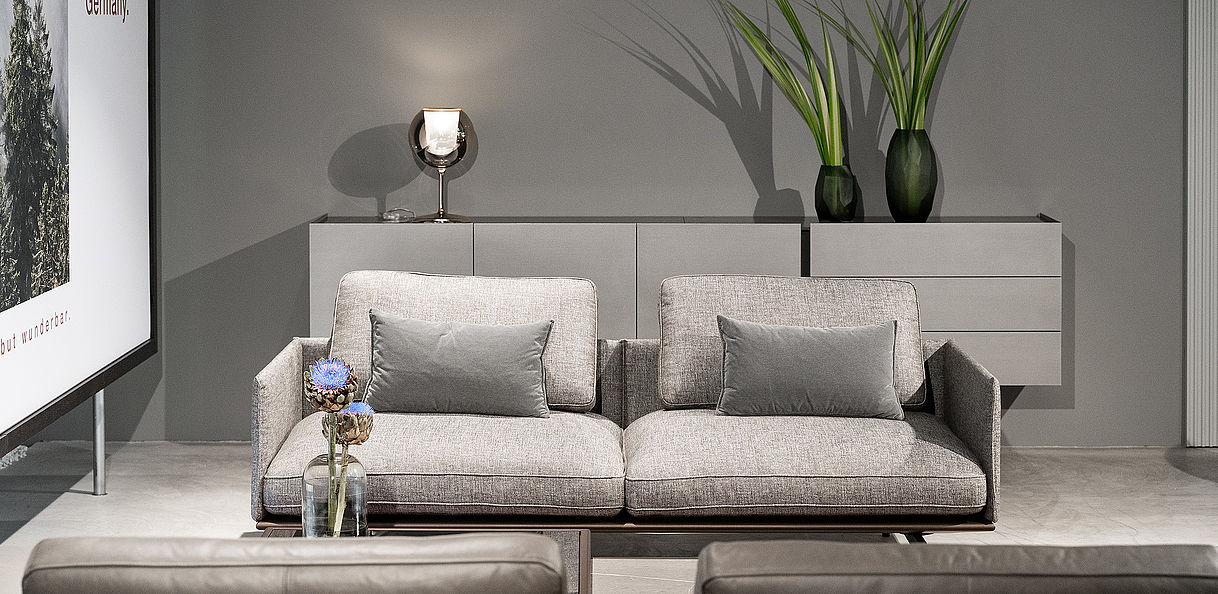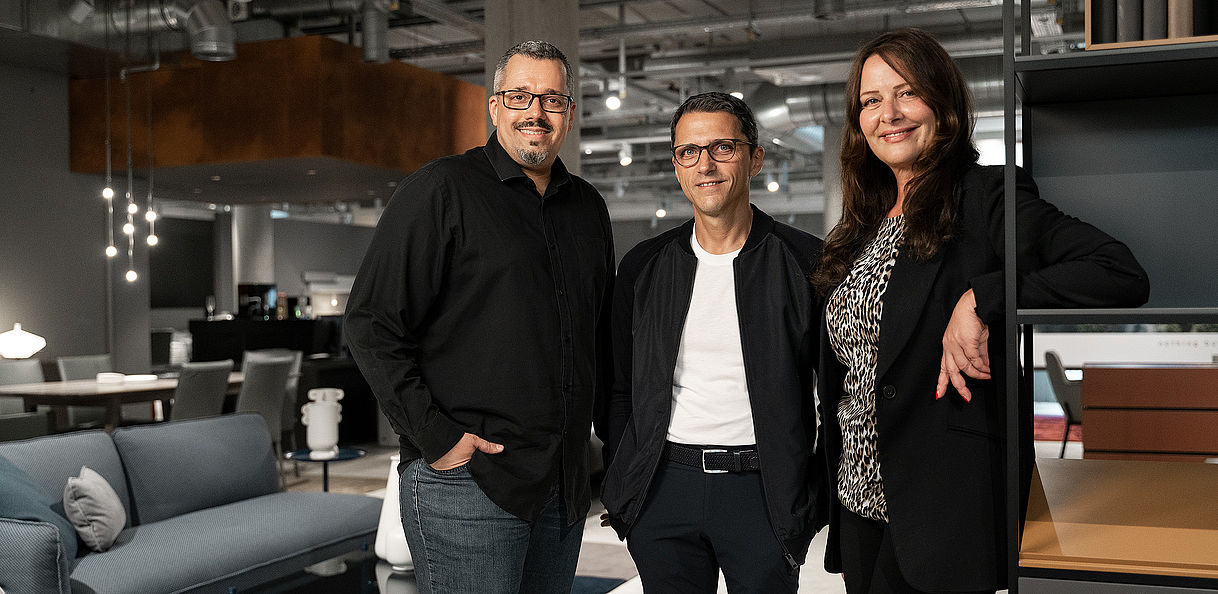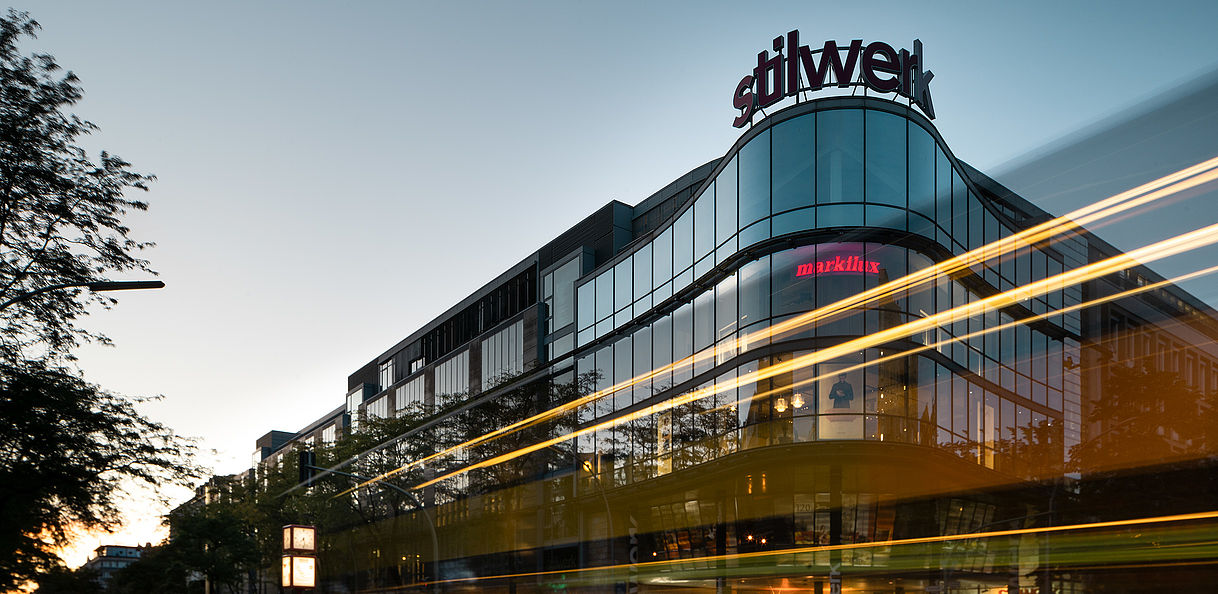ROLF BENZ JAZ –
THERE’S MUSIC IN IT
Star designer Toan Nguyen from Milan has been delighting the interiors sector with his pioneering creations for years. Minimalist, functional, stylish and aesthetic, his works are perfectly composed masterpieces. The same goes for his latest Rolf Benz JAZ sofa, which premièred at DesignWeek 2024 in Nagold and was very well received by the public. An interview about design that sets the tone.
Toan Nguyen, Rolf Benz JAZ is your latest sofa for ROLF BENZ. What makes this model so special and for which types of rooms is it intended?
Rolf Benz JAZ stands out with its lightness and flexibility whilst offering uncompromising seating comfort at the same time. The basic conceptual idea of transparency and openness is a common thread running through the entire collection. With Rolf Benz JAZ, the room becomes the protagonist. The sofa integrates perfectly into open plan structures, confidently allowing the architecture to take centre stage. It harmonises with many different settings and floor layouts and fits in perfectly with our increasingly dynamic lives. Strict formality has had its day. What’s becoming increasingly important these days is flexibility, even in the furnishing sector. That’s why we felt it was particularly important that Rolf Benz JAZ can be used flexibly in various room contexts.
“JAZ” – what does the name mean and how is it reflected in the sofa’s design?
The name “JAZ” alludes to a free and vibrant musical genre. Just like jazz music itself, Rolf Benz JAZ isn’t tied to classic conventions. The result is a high-quality product that offers enormous flexibility and informal lightness. The sound “JAZ” also goes well with the names of the other ROLF BENZ collections.
What is the design process from the initial idea to the finished sofa?
My projects always start with an open exchange of ideas with the customer. For Rolf Benz JAZ, there was a clear remit right from the start. The new model is intended as a counterpoint to the existing collections in the current catalogue. I started sketching designs on this basis, and then worked on the 3D modelling together with my team. We then verified the concept – a system consisting of different upholstered parts. We tested various configurations, from small to large. This helps us better understand the functionality and practicability of the sofa. It’s always a sort of stress test to ensure that the design and compositions are suitable for different living situations. After the presentation, the development process continues by working closely together with ROLF BENZ – from the prototyping to live reviews, where details such as the structure, finishing, cushion shapes, seams and dimensions are checked and discussed.
How did you feel when you first saw Rolf Benz JAZ as a prototype live at the production site in Mötzingen?
It was a magical moment. Seeing the actual product in front of you cannot be replaced. The initial prototype breathes life into an idea, and that’s often when the work really starts. In this case, however, we quickly realised that the prototype had already achieved 90% of the desired result, apart from a few fine adjustments. This is certainly due to the fact that my team and I had considered many details early on in the design phase. A sophisticated, well thought-out and sustainable design is always very important to me. That’s why I invest lots of time and energy into our internal development work for every project. In my opinion, a good eye for detail is essential, since it’s these details that make the product in the end.
Which materials did you select for Rolf Benz JAZ? What are characteristics of these?
The graceful frame of Rolf Benz JAZ really stands out. It’s made from aluminium and combines structural stability with a unique lightness in design. We used classic materials for the upholstery. You can choose between various high-quality fabrics and the finest leather.
The sofa offers refined comfort and adjustment options. What are the considerations behind such features?
With Rolf Benz JAZ, we focussed on flexibility and freedom of movement. The movable arm and backrests can quickly and easily be adjusted to suit individual preferences, ensuring tailor-made seating comfort. Whether that’s formal and upright or more casual and relaxed, Rolf Benz JAZ with its two seating comfort options can meet many different requirements. This means it can be used flexibly depending on the context or the time of day, which is really fascinating.
How long have you been working together with ROLF BENZ and is there a project that is especially important to you?
We have been working together with ROLF BENZ for about eight years. The first thing that comes to mind is Rolf Benz YOKO. It was the very first Outdoor collection that ROLF BENZ brought onto the market, so naturally it was a really special project for everyone involved.
You live and work in Milan. How do your surroundings influence your work as a designer?
Milan is incredibly inspiring. It’s the city of design and it definitely has a stimulating effect and promotes creativity. However, I firmly believe in the power of your immediate working environment, irrespective of its geographical location. Working with my team in a shared design office has always been extremely important to me, for example. A place where creativity can breathe and leads to the development of pioneering projects. This ideal was only compounded for me by the pandemic and lockdown in recent years.
You moved to Milan in 1995. What attracted you there?
Even when I was a student in Paris, I felt the urge to explore the world of design beyond my own boundaries. Italy and Milan in particular were always important reference points for good design. You can learn a huge amount here, especially when it comes to furniture design and the craftsmanship associated with it.
Toan, how did you get into design in the first place?
I knew that I wanted to work as a designer right from my early school days. There was never any other option for me. In actual fact, my passion for design has remained unchanged to this day since I was 19 and at the start of my apprenticeship.
What do you most enjoy about working in furniture design?
I’m always fascinated by the relationship that people have with design objects and their furniture in particular. Items of furniture decorate our homes and create personal spaces that each one of us experiences differently. Personalised interiors always trigger emotions and never leave you feeling indifferent. I always find that impressive.
What is important to you in your design projects?
My main concern is to focus on the target group and to tailor each project perfectly to customers’ requirements. It’s also extremely important that each new design is unique. We approach each project individually; we don’t have any standard design solutions.
How do you integrate aspects of sustainability into your designs and how important is this issue to you?
The issue of sustainability is very present in the furniture sector and has become indispensable. When we talk about design, we are always talking about materials, production, transport and everything else that is directly related to sustainability. So for me, it’s always especially important to think about the subsequent products from the aspect of sustainability right at the start of the creative process. Rolf Benz JAZ is based on a very well thought-out production concept, for example. We have intensively analysed each individual point and considered how we can make our design as sustainable as possible. I think we are in a historic period and are currently experiencing a counter-development to the post-war period where consumption took centre stage. So, in my opinion, we should think about producing better, not more.
What trends or developments in furniture design do you expect to see in the next few years?
Fortunately, high-quality design is largely independent of trends. But, of course, issues such as sustainability will play an increasingly important role in the coming years, including in design development.
Which designers or artists have particularly inspired you during your career?
Designers such as Jean Prouvé, Poul Kjaerholm and, of course, Charles Eames come to mind. If we’re talking about artists and photographers, then Pierre Soulages, Donald Judd and Michael Kenna have also had a considerable influence on my career. But those are only a few of many creative people from contemporary and past eras who have inspired me along the way.
Many thanks for talking to us, Toan. We wish you continued joy, enthusiasm and success in composing designer furniture that sets the tone.

